In this way, the United States inaugurated a tradition that would characterize its behavior in the international arena to this day, in which the words of its political leaders not only conceal their true intentions, but in many cases the intentions have been the total reverse of the words. It was not for nothing that the Liberator, Simón Bolívar, left posterity a phrase that is still valid today, when he pointed out in 1829 that the United States seemed destined by Providence to plague America with misery in the name of freedom.[i] The Monroe Doctrine served as the basis of the United States’ political and economic policy. The Monroe Doctrine served Washington to declare unilaterally and as if it were a divine right, protector of the American continent, letting the rest of the world know where its zone of influence, expansion and predominance resided. However, during the first three years following its enunciation, the countries of the region invoked it on no less than five occasions in order to confront real or apparent threats to their independence and territorial integrity, only to receive negative or evasive responses from the U.S. government. The passage of time confirmed that the Monroe Doctrine had been created only to be defined, interpreted and applied at the convenience of the United States. Over time it would have numerous updates and corollaries from different U.S. governments, always seeking to close any gap that could, from the interpretation and practice of other international actors and the countries of the region themselves, jeopardize its true designs. To mention just a few of them, the Polk Corollary[ii] of 1848: not only would the United States not admit new European colonizations on the American continent, but also that no nation in the region would freely request the intervention of European governments in its affairs or its own union with any of them; it also stated that no European nation could interfere in the will or desires of countries of the continent to join the United States; the Hayes Corollary[iii] of 1880: fixed the Caribbean and Central America as part of the exclusive sphere of influence of the United States and that to avoid interference by European imperialism in America, Washington should exercise exclusive control of any inter-oceanic canal to be built; Roosevelt Corollary[iv] of 1904 -much better known-: proclaims the duty and right of the United States to intervene as international arbiter or policeman in Latin American and Caribbean countries in the face of conflicts or debts with extra-regional powers; and the Kennan Corollary[v] of 1950: justified U.S. support for the dictatorships that flourished in the region under the pretext of anti-communism, which would even be called “national security dictatorships”. None of the U.S. leaders ever entertained the idea that Monroe’s declaration could constitute an act of altruism or of particular friendship towards the neighboring republics to the south -as many Latin American governments fervently believed for years- let alone that it implied for the United States the obligation to intervene in defense of any country in the continent that was the victim of external aggression. For U.S. statesmen, the Monroe Doctrine was limited to announcing the eventual intervention of the United States only in those cases and in those areas of the region that were of vital interest for its domination. This is what the Secretary of War of the Monroe administration, John C. Calhoun, stated: “We must not be subjected to having our general declarations quoted to us on every occasion, to which we can give all the interpretations we want. There are cases of intervention where I would appeal to the vagaries of war with all its calamities. Am I asked for one? I will answer. I designate the case of Cuba. As long as Cuba remains in the power of Spain, a friendly power, a power which we do not fear, the policy of the government will be, as has been the policy of all governments since I have intervened in politics, to leave Cuba as it is, but with the express design, which I hope never to see realized, that if Cuba leaves the dominion of Spain, it shall not pass into other hands but ours…In the same category I will mention another case, that of Texas; if it had been necessary, we would have resisted a foreign power.”[vi] Between 1825 and 1826 it was corroborated that the Monroe Doctrine had nothing to do with “peace and security”, and much less with a sincere and disinterested support to the independence of their “brothers of the South”, when the United States opposed by diplomatic means and in a threatening tone, before a possible joint Colombian-Mexican expedition, with the objective of bringing independence to Cuba and Puerto Rico, a project that Simón Bolívar and Guadalupe Victoria, the latter president of Mexico, had cherished. In the face of strong U.S. diplomatic pressure, the governments of Bogota and Mexico responded that no operation of great magnitude against the Spanish Antilles would be accelerated until the proposal was submitted to the judgment of the Amphictyonic Congress of Panama to be held in 1826. Washington’s concern, as is logical, continued, transferring its concern to the governments of Colombia and Mexico and moving all the levers of its diplomatic power. [vii] Years later, José Martí would refer to this embarrassing passage in the history of the United States, a reflection of the Monroist ideology, in one of his famous speeches when he said: “And Bolívar was already putting his foot in the stirrup, when a man who spoke English, and who came from the North with government papers, grabbed his horse by the bridle and spoke to him as follows: “I am free, you are free, but that people who are to be mine, because I want them for myself, cannot be free!”[viii] The status quo convenient to the interests of the United States could not be altered by extra-continental powers, but not even by the countries of the region themselves. This situation would be maintained during the years 1827, 1828 and 1829, every time an attempt was made to revive the redemptive enterprise; both by Colombia, Mexico and Haiti. It is very illustrative in today’s light, when we continue to see the Yankee obsession with Cuba, that in the context of the proclamation of the Monroe Doctrine, the interests of U.S. domination over the Greater Antilles were especially gravitating. The Monroe Doctrine was also complemented by the so-called theory of the Ripe Fruit, formulated by John Quincy Adams in 1823, in which Cuba was compared to a fruit on a tree, to metaphorically point out that just as there were laws of physical gravitation, there were also laws of political gravitation and, for such reasons, there was no other destiny for Cuba than to fall into American hands, it was only necessary to wait for the opportune moment for the fruit to be ripe for that inevitable end to be fulfilled. During this process – Adams also pointed out in a letter sent on April 28, 1823 to the diplomatic representative of the United States in Madrid – it was preferable that the desired fruit remained in the hands of Spain before it passed into the hands of the more powerful powers of the time. Hence, when the British Foreign Minister, George Canning, proposed to Washington the signing of a joint declaration rejecting any attempt by the Holy Alliance and France to restore Spain’s absolutism in the Spanish-American territories, the United States took the lead in a masterstroke, making a declaration of its own -later known as the Monroe Doctrine- that left the United States’ hands absolutely free in America and tried to tie them to the rest of the powers, including England. At the root of the emergence of the Monroe Doctrine was Cuba, as one of the territories most coveted by the U.S. political class. Also Mexico, more than half of whose territories would later be usurped during the war of 1846-1848. IIn 1830, Simón Bolívar, who during his struggle for independence and the unity of the peoples of Spanish America had felt the rejection of the United States as a great obstacle and permanent danger, as well as his calculating and cold stance -which he called arithmetical behavior- in relation to the emancipation process that was taking place in South America, was leaving for eternity. Against the Liberator and his plans for the unity and integration of Spanish America, a wide conspiratorial network was woven from Washington, which is still astonishing today for its level of articulation, when the means of communication and intelligence available to U.S. imperialism today did not yet exist. However, U.S. diplomatic representatives such as William Tudor, William Harrison, Joel Poinsett, among others, did a very effective dirty work to defeat more than the person of Bolivar, the ideas he represented and defended, totally antagonistic to the Monroist philosophy. His pioneering thought of anti-imperialism, about the unity and integration of the territories freed from the yoke of Spanish colonialism, in favor of the abolition of slavery, of the most dispossessed classes and the independence of Cuba and Puerto Rico, were the greatest threat to their interests of expansion and domination that Washington faced in those years, hence their innumerable attempts to discredit him by calling him “usurper”, “dictator”, “the madman of Colombia”, among other offensive adjectives. II In the second half of the 19th century, the Bolivarian ideal would have in José Martí, the Apostle of Cuban independence, one of its most brilliant disciples, who could see like no one else into the entrails of the monster and warn of its dangers for the independence of Our America and the very balance of the world. It was then up to him to confront Monroeism at the stage when the United States was taking its first steps of transition to the imperialist phase and when the Monroe doctrine was being modernized through Pan-Americanism, which advocated continental unity under the dominant axis of Washington from the narrative of the so-called Manifest Destiny, a thesis of supposed biblical roots, which affirmed that the divine will granted the American nation the right to control the entire continent. The United States sought hemispheric supremacy in international legal forums and instruments and with it the institutionalization of the postulates of the Monroe Doctrine. Through his chronicles and articles in more than twenty Spanish-American newspapers, José Martí developed an intense anti-imperialist work to defeat the thesis of a single currency, arbitration and customs union, promoted by the U.S. Secretary of State, James Blaine, at the American International Conference held in Washington between 1889 and 1890. He would also do so at the Monetary Conference of the Republics of America in 1891, where he actively participated as Consul of Uruguay. There has never been in America, from independence to the present time,” warned Martí, “a matter that requires more wisdom, nor obliges more vigilance, nor demands clearer and more meticulous examination, than the invitation that the powerful United States, full of unsaleable products, and determined to extend their dominions in America, make to the less powerful American nations, linked by free and useful trade with the European peoples, to establish a league against Europe, and to close deals with the rest of the world. From the tyranny of Spain, Spanish America knew how to save itself; and now, after seeing with judicial eyes the antecedents, causes and factors of the invitation, it is urgent to say, because it is the truth, that the hour of declaring its second independence has arrived for Spanish America.”[ix] Shortly before falling in Dos Rios on May 19, 1895, in an unfinished letter to his Mexican friend Manuel Mercado, Martí left testimony of which had been the sense of his life: to prevent in time with the independence of Cuba, that the United States spread through the Antilles and fall with that force more on our lands of America. With a far-sighted vision Martí had seen the great danger that the voracious imperial appetites of Washington represented for Cuba and the countries of our America and foresaw what could happen if the independence of Cuba and Puerto Rico was not achieved in a short time, where he considered the balance of the world was to be found. In the faithful of America are the Antilles,” wrote Martí in an analysis that demonstrates his knowledge and vision of the geopolitical interests that were moving on the international scene, “which would be, if slaves, a mere pontoon of the war of an imperial republic against the jealous and superior world that is already preparing to deny it power, -a mere fortress of the American Rome; and if free -and worthy of being so by the order of equitable and hard-working freedom- they would be in the continent the guarantee of balance, that of independence for the still threatened Spanish America and that of honor for the great republic of the north, which in the development of its territory, unfortunately already feudal and divided into hostile sections, will find more certain greatness than in the ignoble conquest of its smaller neighbors, and in the inhuman fight that with the possession of them would open against the powers of the world for the predominance of the world”. And a few lines further on he expresses: “It is a world that we are balancing: it is not only two islands that we are going to liberate.”[x]. III In 1898, with its intervention in the Cuban-Spanish conflict, the United States turned the island of Cuba into a test tube for neocolonialism in the region, thus initiating a historical period characterized by the consummation and success of the Monroe Doctrine, consolidating its dominance in the Western Hemisphere and gradually displacing rival powers, especially England. In addition to Cuba and Puerto Rico, Washington secured control of the Isthmus of Panama, one of the most important geostrategic points. The Dominican Republic, Panama, Guatemala, El Salvador, Cuba, Honduras, Nicaragua and Haiti suffered directly from the policy of the Big Stick and the Roosevelt corollary to the Monroe Doctrine with the intervention and territorial occupation of the Yankee Marines. In the case of Cuba, Monroeism acquired legal connotation through the Platt Amendment, an appendix to the 1901 Constitution, imposed by force on the Cubans under the threat of permanent military occupation. The Platt Amendment gave the United States the right to intervene in Cuba whenever it deemed convenient and to lease territories for the establishment of naval and coal bases, the origin of the illegal U.S. presence in Guantanamo Bay to this day. The Platt Amendment was neither conceived nor imposed to safeguard Cuba or any Cuban interest, but as a tangible expression of the Monroe Doctrine. Roosevelt’s successor in the White House, William Taft, through dollar and gunboat diplomacy, combined military intervention with U.S. financial and political control, expanding and consolidating U.S. domination in Central America and the Caribbean. “The day is not far distant,” Taft would unabashedly point out, “when three stars and three stripes at three equidistant points will delimit our territory: one at the North Pole, another at the Panama Canal and the third at the South Pole. The whole hemisphere will in fact be ours by virtue of our racial superiority, as it is already ours morally.”[xi] This was followed by the administrations of Woodrow Wilson, Warren Harding, Calvin Coolidge, Herbert Hoover and Franklin D. Roosevelt, all of whom, in one way or another, reinforced the postulates of the Monroe Doctrine, intervening or threatening militarily whenever the requirements of their imperial security in the region were threatened. The Mexican Revolution suffered the onslaught of Monroeism in those years, as did Nicaragua from 1926 to 1933, when Augusto César Sandino, leading a popular army, confronted the Marines who had invaded and occupied the country. The U.S. troops were finally defeated and had to withdraw from the Central American nation on January 3, 1933. However, the Franklin Delano Roosevelt administration, the same one that had advocated the deception of the Good Neighbor policy towards Latin America and the Caribbean, did not stand idly by and conspired against Sandino until his assassination was carried out and the dictatorship of Anastasio Somoza was established, “a son of a bitch”, as Roosevelt himself described him, “but our son of a bitch”. IV The outbreak of World War II was a perfect opportunity for the U.S. government to further expand its domination throughout the hemisphere, extending its military bases in the region and getting numerous Latin American and Caribbean countries to join its “hemispheric security” projects, in reality becoming subordinate to the geostrategic objectives of U.S. imperialism. The signing in 1947 by 20 Latin American and Caribbean governments of the Inter-American Treaty of Reciprocal Assistance (TIAR) was a palpable example of this. Monroe and Adams could not have been more satisfied from their graves, especially when in 1948 the Organization of American States (OAS) was created as an instrument of the United States to modernize and institutionalize its domination over Latin America and the Caribbean. Its birth was baptized with the bloodshed of the Colombian people, in the midst of a popular uprising triggered by the assassination of progressive leader Jorge Eliécer Gaitán. The government servile to Washington’s interests imposed after those events would be the only one to send troops to the Korean War to please the master of the North. It immediately became evident that the purpose of the OAS had nothing to do with “continental unity and solidarity” in the face of common challenges and “extra-regional threats”, but that it was just another piece in the new world system that was emerging to satisfy the hegemonic interests of the U.S. power elite. The so-called Inter-American system was in reality part of its system of domination. The OAS was an adaptation of the Monroe Doctrine to the post-war scenario in order to align the entire region in the face of the “dangers of international communism”. Hence its uselessness -beyond the possibility of verbally condemning U.S. imperialism- to represent the interests of the Latin American and Caribbean peoples. The history of the OAS has been none other than the most infamous support of oligarchic governments to Washington’s interests, or Washington’s disrespect for the majority, when that majority has disagreed with its positions, reflecting the fallacy of its own existence as a space for concerted action between the two Americas. The OAS Charter itself has been violated and regional consensus has been flouted by the United States on multiple occasions. Undoubtedly, it was conceived and continues to try to function as a Yankee “Ministry of Colonies”, at the root of which lies the Monroist philosophy. At the end of World War II, the United States achieved absolute supremacy in the Western Hemisphere, reaching the pinnacle of the aspirations of the founding fathers, of Adams and Monroe when they launched the famous doctrine and of their most loyal and creative continuators. Having reached that level of control in what they considered their backyard, the power elite of U.S. imperialism felt in a position to extend its hegemony to other geographical areas of the world, even going beyond the limits of what was expressed in the Monroe Doctrine in 1823. V The 1960s brought a new revival of the Monroe ideal in the face of the triumph of the Cuban Revolution and the supposed penetration of communism in the Western Hemisphere, a pretext that was assumed and disseminated from Washington to follow an even more aggressive course against the Cuban revolutionary process and provoke its diplomatic isolation in the hemisphere, a fact that materialized when Cuba was suspended from the OAS in 1962. In that same year President Kennedy said at a press conference: “The Monroe Doctrine means what it has meant ever since President Monroe and John Quincy Adams enunciated it: that we would oppose a foreign power extending its power into the Western Hemisphere, and that is why we oppose what is happening in Cuba today. That’s why we have cut off our trade relations. That’s why we work in the Organization of American States and in other ways to isolate the communist threat in Cuba.”[xii] The resistance and achievements of the Cuban Revolution, its example of independence and absolute sovereignty at the very gates of the U.S. empire, was an inadmissible reality for the true hegemonic purposes under which the Monroe Doctrine was inspired. At the same geographical point where Washington had begun its long road of successful expansion and preeminence, making its debut as an empire, the most forceful and sustained challenge ever faced by the colossus of the North from the periphery of the South also began and, as if that were not enough, under its own nose and by an island, small in size, but a giant as a moral example for the world. Fidel Castro Ruz, would embrace the Bolivarian, Martian, anti-colonialist, anti-imperialist, internationalist and Marxist ideal, becoming a heresy that even today and facing the future, continues to fight and win great battles, while his example and thought lives on in the Cuban people and revolutionaries around the world. In addition to unleashing a full-spectrum war against Cuba that continues to this day, this anomaly to U.S. domination in the Western Hemisphere led the various U.S. governments to unleash a whole series of violent and reactionary policies to prevent the existence of more Cubas in the region. A new stage of invasions, coups d’état and support for bloody dictatorships began, under the pretext of the fight against communism. In the name of freedom – also of human rights – as Bolivar had warned in 1829, Washington was responsible for the most horrendous crimes practiced against the peoples south of the Rio Bravo. Millions of disappeared, tortured, murdered, was the cost paid by our peoples, a figure impossible to fully calculate if we add up the victims of Monroism since the 19th century. We can never forget that history, which is also part of what these two hundred years of the Monroe Doctrine have meant. How can we not refer to Operation Condor, which between 1975 and 1983 was responsible for thousands of deaths and disappearances throughout the continent, where the criminal efforts of the U.S. government and the CIA joined forces with the military dictatorships of Chile, Argentina, Venezuela, Paraguay, Uruguay, Brazil and Bolivia, as well as terrorist groups of Cuban origin based in Miami, with the aim of curtailing the progressive and revolutionary movement in Latin America. Fifty years ago the Nixon-Kissinger administration unleashed a great plot against the Popular Unity government presided by Salvador Allende in Chile, this operation culminated on September 11, 1973 with a coup d’état, the death of Allende and the establishment of one of the most atrocious dictatorships of the entire continent, whose aftermath is still visible in that country today. Also 40 years ago, the Republican administration of Ronald Reagan launched an invasion of the Caribbean island of Grenada on October 25, 1983, where a revolutionary process led by Maurice Bishop was taking place. History as a teacher of life teaches lessons for the present. Fidel’s words to the Chilean people, in Santiago de Chile, on December 12, 1971, warning of the threat posed by the fascist right wing supported from Washington to the revolutionary processes, are especially relevant today: “But what do the exploiters do when their own institutions no longer guarantee their domination? What is their reaction when the mechanisms they have historically counted on to maintain their domination fail them? They simply destroy them. There is no one more anti-constitutional, more anti-legal, more anti-parliamentary, more repressive, more violent and more criminal than fascism. Fascism, in its violence, liquidates everything: it attacks the universities, closes them down and crushes them; it attacks the intellectuals, represses and persecutes them; it attacks the political parties; it attacks the trade union organizations; it attacks all the mass organizations and the cultural organizations. So that there is nothing more violent or more retrograde or more illegal than fascism.”[xiii] VI The fall of the socialist camp unleashed triumphalist airs in Washington about the arrival of the “Pax Americana”, it was no longer just “America for the Americans”, but the world at the feet of the victorious world power of the Cold War as a supposed end of history. However, in addition to the fact that they could not sweep away Cuba, which resisted and emerged victorious again as the main stone in their shoes, popular rebellions and resistances in what the United States considered its safe backyard, immediately began to happen and the least the power elite in that country could have imagined was that there would be a resurgence of the US imperialist regime, which would be the first to be able to take control of Cuba, The least the power elite in that country could have imagined was that there would be a resurgence of Bolivarianism and the arrival to power of progressive and leftist forces, which articulated a change of era where Monroism was called into question, rescuing and updating the Bolivarian ideal for the 21st century. The role of Venezuelan President Hugo Rafael Chávez Frías, at the head of the Bolivarian Revolution, undoubtedly marked a turn and a leap in Latin American and Caribbean history. Together with the governments of Nestor Kichner in Argentina, Daniel Ortega in Nicaragua, Evo Morales in Bolivia, Tabaré Vázquez in Uruguay, Lula Da Silva in Brazil, Rafael Correa in Ecuador and Fidel and Raúl in Cuba, a regional “Our American” project began to take shape, which included the creation of integration organizations such as ALBA-TCP, UNASUR, CELAC, TELESUR, PETROCARIBE, among other mechanisms that sought to break with the domination schemes that had been imposed from the North for decades. In November 2005, the attempts of US imperialism to recolonize the region under a Free Trade Area of the Americas (FTAA) were defeated, when in Mar del Plata, Argentina, during the IV Summit of the Americas, several Latin American and Caribbean presidents stood up to it, among them the very host of the meeting, President Néstor Kirchner, together with Chávez and Lula. The United States had never faced such a break in its domination of the Western Hemisphere since the end of World War II. The administrations of William Clinton, W. Bush and Barack Obama reacted with all their arsenal and allies to stop and overthrow this process: coups d’état, parliamentary coups, oil coups, economic sanctions, blockades, cultural, media, psychological and fourth generation wars, subversion, espionage, interference in internal affairs, encouragement of treason and division, prosecution of progressive and leftist leaders, diplomatic and economic threats, military maneuvers, activation of the IV Fleet, among many other actions that marked the imperial, oligarchic and right-wing counter-offensive throughout the region. However, under the precepts of Smart Power, in 2013, U.S. President Barack Obama expressed that the Monroe Doctrine had come to an end and in a speech before the OAS, the then Secretary of State, John Kerry, stated that the relationship between the United States and Latin America should be that of equivalent partners, and that his government sought to establish a link not based on doctrines but on common interests and values. But the best lie to these declarations came only two years later when a new coup attempt against the Bolivarian Revolution took place, where U.S. interference became evident. A few weeks later, the White House declared Venezuela an extraordinary threat to its national security. In the case of Cuba, despite the announcement of the reestablishment of diplomatic relations on December 17, 2014 and the so-called new policy approach, the purposes of achieving regime change and the overthrow of the Revolution were never abandoned by the Obama administration. Facts, statements and documents of the period prove it. However, his successor in the White House, Donald Trump, and his main foreign policy advisors would unabashedly resume the Monroist discourse. One of the statements that generated the most headlines was that of his Secretary of State, Rex Tillerson, who, during a tour of Latin America, stated that the Monroe Doctrine “is as relevant today as the day it was written”. These statements were not only a reaction to a greater presence of China and Russia in the region, but were a response to the non-acceptance of “foreign ideologies” such as those defended by Cuba and Venezuela, although at the heart of the matter we know that the real concern is the disconnection from the system of US imperial domination that the examples of the Cuban and Bolivarian Revolutions signify. VII Today it is becoming increasingly apparent that we are witnessing a world in geopolitical transition and an accelerated decline of US hegemony at the global level. The U.S. power elite in this scenario clings more and more to the Monroist philosophy and, faced with a state of imperial oversizing that prevents it from maintaining control in much more distant geographical areas -as has occurred in Africa and the Middle East-, it is logical that its attention should be focused on the area that for 200 years it has considered its vital space of reproduction and hegemonic expansion: Latin America and the Caribbean. From the imperial logic, what is at stake is to recover the lost ground at any cost in the face of the advance of China, Russia and the progressive and leftist governments themselves. Latin America and the Caribbean continue to be the top priority in U.S. foreign policy. The head of the U.S. Southern Command, Laura Richardson, recently reaffirmed this when, in a conversation with the Atlantic Council think tank, she said: “If I talk about my number two adversary in the region, Russia, I mean, I have, of course, the relations between the countries of Cuba, Venezuela and Nicaragua with Russia. But why is this region important? With all its rich resources and rare earth elements, you have the lithium triangle, which today is necessary for technology. 60% of the world’s lithium is in the lithium triangle: Argentina, Bolivia, Chile, you have the largest oil reserves, light sweet crude discovered off Guyana more than a year ago. You have the resources of Venezuela as well, with oil, copper, gold. We have the lungs of the world, the Amazon. We also have 31% of the world’s fresh water in this region. I mean, it’s out of the ordinary. This region matters. It has to do with National Security and we have to step up our game.”[xiv] The scenario that is being drawn is one of opportunities before the gaps and weaknesses of the imperial system itself and the continuous mistakes of the right wing without an alternative project to offer to our peoples, but also of great dangers before the growth of neo-fascist tendencies that are glimpsed on the horizon and also in other parts of the world, especially in Europe. The systemic crisis of imperialism itself leads to increasingly violent and reactionary reactions, given the loss of capacity to maintain the expanded accumulation of capital and the rebellions and rebellions that arise one after another in the periphery and in the very centers of domination, the results of which announce the birth of a multipolar world. In this process, the left forces of the region have a unique moment to relaunch as never before the processes of unity and integration of Latin America and the Caribbean. The conjunctures are very changeable and shifting, tomorrow will be too late. Only united will we be truly free and an international actor with an influential place in the destinies of humanity, which must move urgently, so as not to disappear, towards a change of civilizational paradigm. Otherwise, the United States would once again fall upon our lands in the Americas, breaking the balance of the world, at a time when there may be no way back to save not only the independence and sovereignty of our peoples, but even the human species itself. As the leader of the Cuban Revolution, Fidel Castro Ruz, pointed out at the first Ibero-American Summit, in Guadalajara, Mexico, on July 18, 1991: “The time has come to fulfill with deeds and not with words the will of those who dreamed one day for our peoples a great common homeland that would be worthy of universal respect and recognition”. In the 21st century, the Monroe Doctrine is as alive as it was in 1823, two hundred years ago. But the ideals and struggles of our peoples are also alive. The ideals and struggles of the Latin American and Caribbean heroes who gave their lives for the independence and unity of Our America are alive today more than ever. In this year 2023, what we truly commemorate is the 95th anniversary of the birth of one of the highest paradigms of revolutionaries for all times, Ernesto Che Guevara, who gave his life to the emancipation of the Latin American, Caribbean, African peoples and the entire global south under the imperialist yoke, our greatest commitment must be, without dogmas and atavisms that hinder the way, the struggle for social justice and the unity and integration of our peoples. Notes [i] Letter from Simón Bolívar to Colonel Patricio Campbell, British Chargé d’Affaires to the Government of Colombia, Guayaquil, August 5, 1829. [ii] James Knox Polk, President of the United States between 1845 and 1849. [iii] Rutherford Birchard Hayes, President of the United States between 1877 and 1881. [iv] Theodore Roosevelt, President of the United States between 1901 and 1909. [v] George F. Kennan (1904-2005). American diplomat and government advisor and author of the doctrine of containment against communism. [vi] Indalecio Liévano Aguirre: Bolívarismo y monroísmo, Editorial Revista Colombiana, Bogotá, 1971, pp.40-41. [vii] See Elier Ramírez Cañedo, La miseria en nombre de la libertad, Editorial de Ciencias Sociales, Havana, pp.67-74. [viii] Speech by José Martí at Hardman Hall, New York, November 30, 1889. [ix] José Martí, “Congreso Internacional de Washington, su historia, sus elementos y sus tendencias”, Obras Completas, Editorial de Ciencias Sociales, Havana, 1975, t. 6, p. 46. [x] José Martí, “El tercer año del Partido Revolucionario Cubano”, Obras Completas, Editorial Nacional de Cuba, Havana. t. 3, p.142. [xi]Quoted by Juan Nicolás Padrón in: The U.S. war against Cuba in the neocolonial republic (II), La Jiribilla, August 3, 2022. [xii] New World Encyclopedia. “Monroe Doctrine.” New World Encyclopedia. October 18, 2018. http://www.newworldencyclopedia.org/entry/Monroe_Doctrine. [xiii] Speech delivered by Commander Fidel Castro Ruz, at the farewell ceremony given to him by the people of Chile, at the National Stadium, Santiago de Chile, December 2, 1971. [xiv] See on the Internet: https://www.youtube.com/watch?v=DBHznUxu2_E AuthorElier Ramírez Cañedo This article was produced by Resumen. Archives July 2023
0 Comments
7/12/2023 Archaeology Is Flipping the Script on What We Know About Ancient Mesoamerica By: Gary M. Feinman & David M. CarballoRead NowRecent archaeology emerging from ancient Mesoamerica is flipping the script of public understanding about the people and institutions that inhabited this world: the evidence tells us that cooperative and pluralistic government was at least as common and more resilient than despotic states. This more complex picture and the achievements of Mesoamerica’s peoples are all the more impressive given the area’s rugged terrain and resource constraints. Compared to ancient Eurasia, the inhabitants of Mesoamerica—the region stretching from Costa Rica to central Mexico—lacked beasts of burden and wheeled transport, and the use of metals was generally limited. Until recently, our understanding of how most societies and early states developed was heavily grounded in interpretations of urban societies in Eurasia. Despotic, coercive rule was assumed (except for ancient Athens and Republican Rome), the actions of the elite were ascribed great importance, and core functions of the economy were presumed to be in the hands of the ruler. Precolonial Mesoamerica doesn’t fit this cookie-cutter framework: neither was economic production or distribution centrally controlled by despotic rulers, nor was governance in societies with very large populations universally coercive. This new perspective is the outgrowth of a decades-long shift in archaeological research’s focus from temples and tombs to regional settlement patterns, urban layouts, house excavations, domestic economies, and agricultural production. By concentrating on the archaeological record, recent generations of researchers have brought fresh attention to features of pre-colonial Mesoamerica that did not fit entrenched stereotypes, many of which had their roots in the nineteenth century. Mesoamerica’s cities and large-scale societies arose independently of other global regions, spawned by their own regional populations. Mesoamerican technological development never experienced the centralizing impact of the monopolization of bronze weaponry through control of scarce tin deposits, nor the “democratizing” or “decentralizing” effects of the adoption of more widely available iron. Mesoamerica was also spared the stark inequalities in military and transportation technology that appeared in Eurasia when some societies developed the chariot, serious naval capabilities, and fortified palaces while others lagged behind. In Mesoamerica, military might came through the control of large infantries using weapons crafted primarily from widely available stone, all of which made for generally more balanced political relations than in Eurasia. Pre-Hispanic Mesoamerica is therefore emerging as an ideal place to examine the different ways that humans coalesced in urban contexts, in both collective and autocratic political formations, without some of the key factors that earlier scholars have traditionally seen as necessary or transformative for the rise of premodern societies. How were these large, preindustrial urban centers in Mesoamerica organized? Were they long-lasting? And if so, what accounts for their comparative degrees of resilience across time? In a 2018 study, we coded data from a carefully selected sample of 26 precolonial Mesoamerican cities and prominent political centers. We found that more than half of them were not despotically ruled and that the more collective political centers had greater resilience in the face of droughts and floods, and warfare or shifts in trade. Cities that addressed their social challenges using more collective forms of governance and resource management were both larger and somewhat more resilient than the cities with personalized rulership and more concentrated political power. In general, collectively organized political centers relied more heavily on internal finance generation, such as taxes, as compared to the more autocratic centers that relied more on external financing, such as monopolized trade networks and war booty. The more that political elites can support themselves without relying on financing from the general population, the less they face accountability from the people, and the greater the likelihood that governance and power are hoarded. Additionally, higher levels of internal financing and communal resources often corresponded with evidence of the wider circulation of public goods and the bureaucratization of civic offices. Collectively organized centers with these features as well as spatial layouts, such as large open plazas and wide streets, that provided opportunities for householders and urban dwellers to communicate and express themselves seem to have fostered community persistence as major centers. In a later study that included an updated and expanded sample of 32 well-researched Mesoamerican cities, we found that centers that were both more bottom-up and collective in their governance, were more resilient. While some of these cities had palaces and monuments to rulers as their focal points, others featured more shared and equitably distributed forms of urban infrastructure. This includes apartment compounds, shared terraces or walls within neighborhoods, neighborhood plazas, temples and other civic buildings, and shared roads and causeways, all of which required cooperation and collective labor for their construction and maintenance and would have facilitated more regular face-to-face interaction and periodic public gatherings. The implications from this archaeological research are too informative and powerful to stay put in textbooks. They resonate with evolving views of our present world, which are finding that public space, open communication, fair taxation, and effective bureaucracy can be cornerstones of well-being. These parallels with and understandings from the past can be insightful for us today as models to guide our future planning and identify the social models that best position us to survive the tests of time. AuthorGary M. Feinman is an archaeologist and the MacArthur curator of anthropology at the Field Museum of Natural History in Chicago. This article was produced by Human Bridges, a project of the Independent Media Institute. Archives July 2023 7/12/2023 The doomed OceanGate submersible offers us many of the same lessons that the 1912 Titanic sinking did. By: Sonali KolhatkarRead NowThe Titan and the Titanic: Two Tales of Capitalist Hubris A hundred and eleven years ago, a ship considered to be “unsinkable” fell to the bottom of the ocean after hitting an iceberg. More than a thousand people died as the Titanic sank into the icy waters of the Atlantic Ocean, among them the engineer who had warned against cutting corners and safety standards. The parallels between the Titanic and the Titan—the tiny headline-garnering submersible that was lost while trying to view the sunken ship’s remains—would be laughably striking were it not for the fact that lives were lost. Whereas the White Star Line company was focused on building luxury liners for the very wealthy, OceanGate, the company that owned the doomed submersible, runs a marine tourism business for people willing to pay $250,000 to dive more than 12,000 feet into the ocean inside a cramped tube to see the ruins of the Titanic. There appears to be no end to the irony linking the Titanic to the Titan. OceanGate CEO Stockton Rush, who was piloting the submersible and is presumed dead along with his four passengers, once boasted about “breaking rules” to engineer a craft made of carbon fiber instead of steel to withstand the pressures of the deep ocean. According to the New York Times, his wife Wendy, “is a great-great-granddaughter of the retailing magnate Isidor Straus and his wife, Ida, two of the wealthiest people to die aboard the [Titanic] ocean liner.” Hindsight is 20-20. The Titanic’s appeal endures in part because it offered a lesson in capitalist hubris as a ship deemed “unsinkable” sank on its maiden voyage in spite of warnings about safety standards. It also offered a stark lesson in how the wealthy were privileged over the poor before and during evacuation. But the Titan story suggests our values have not changed since 1912. Like the Titanic, the Titan faced criticism over safety standards. In 2018, OceanGate’s own director of marine operations, David Lochridge warned of “potential dangers to passengers of the Titan.” That same year, several experts with the Marine Technology Society signed onto a letter warning Rush of potentially “catastrophic” consequences for forgoing safety certifications. In a 2019 press release, OceanGate countered such criticisms saying, “Bringing an outside entity up to speed on every innovation before it is put into real-world testing is anathema to rapid innovation.” Just as the Titanic’s owners eschewed some safety standards in their eagerness to sell tickets to high-paying customers, the OceanGate CEO made it clear that he felt he was above the laws of physics. “At some point, safety just is pure waste,” he said a year before his death. Ouch. Experts now believe it was Rush’s reliance on carbon fiber that likely caused the Titan to implode. Rapid innovation can cause rapid death. The fate of the Titan also offers a warning against the arrogance of thrill-seeking billionaires. The “extreme tourism” industry has skyrocketed since the COVID-19 pandemic restrictions were eased. One of the five men who died on the Titan, Hamish Harding, a British billionaire based in Dubai, UAE, had a penchant for dangerous and expensive exploration and boasted recognition by the Guinness World Records Book. Just a year before he boarded the Titan to dive more than ten thousand feet below the ocean surface, he flew into space on board Amazon founder Jeff Bezos’s vanity project, Blue Origin. “What I’ve seen with the ultra-rich—money is no object when it comes to experiences,” remarked a public relations specialist to CNN. “They want something they’ll never forget.” While the Guinness World Records eulogized the late Harding with words like “adventuring,” “pioneering,” and “entrepreneurial,” according to Newsweek, the type of extreme tourism that Harding and others like him are drawn to “can threaten the environment or lead to exorbitant rescue missions and, rarely and most recently, tragedy.” Indeed, a massive amount of publicly funded infrastructure was mobilized in a days-long rescue operation for the doomed Titan before it was known that the submersible had imploded, killing everyone on board. U.S. Coast Guard Rear Admiral John Mauger told CNN, “Teams were able to mobilize an immense amount of gear to the site in just really a remarkable amount of time… given the fact that we started without any sort of vessel response plan for this or any sort of pre-staged resources.” In response to a call for help from the U.S. Navy, even the French government sent a ship to help. News stories breathlessly shared details of what it would be like to be lost in the deep sea inside a claustrophobically small metal tube floating in the ocean’s abyss, piloted only by a video game console. We were called upon to personally feel the pain of the wealthy explorers. But there was little public discussion of the disaster that took place only a week before the Titan went missing when hundreds of migrants heading from Libya to Italy were presumed dead after their boat sank in the Mediterranean Sea. Writing for NBC, reporter Chantal Da Silva wrote one of the very few stories on what is likely to be among the worst such disasters in recent history and rightfully compared it to the response garnered by the Titan. She quoted Human Rights Watch’s Judith Sunderland, saying, “It’s a horrifying and disgusting contrast,” to see the difference in resources being mobilized for the Titan versus a boat of hundreds of desperate refugees. Sunderland added, “The willingness to allow certain people to die while every effort is made to save others… it’s a… really dark reflection on humanity.” The Titan is what you get when a corporate cost-cutting mindset meets the lavish thrill-seeking, money-is-no-object ethos of billionaires—the same sort of people who espouse cost-cutting in the interest of profits. In his 1955 bestselling book about the Titanic, A Night to Remember, Walter Lord wrote, “The Titanic woke them up. Never again would they be quite so sure of themselves. In technology especially, the disaster was a terrible blow.” Will the Titan’s fate be a lesson to the so-called “innovators” who scoff at safety regulations as a waste of time? Lord also wrote of the Titanic, “If this supreme achievement was so terribly fragile, what about everything else? If wealth meant so little on this cold April night, did it mean so much the rest of the year?” As the bodies of migrants whose names we will never know remain lost at sea, we are reminded that just like the billionaires who care more for the state of a rotting shipwreck than of humans fleeing violence, war, and poverty, our own collective values have been perverted to uplift elites over others. Will society rethink its faith in moneyed heroes? As broken bits of the submersible lie on the ocean floor next to the equally doomed Titanic, when will we learn from the lessons in hubris offered by such disasters? AuthorSonali Kolhatkar is an award-winning multimedia journalist. She is the founder, host, and executive producer of “Rising Up With Sonali,” a weekly television and radio show that airs on Free Speech TV and Pacifica stations. Her forthcoming book is Rising Up: The Power of Narrative in Pursuing Racial Justice (City Lights Books, 2023). She is a writing fellow for the Economy for All project at the Independent Media Institute and the racial justice and civil liberties editor at Yes! Magazine. She serves as the co-director of the nonprofit solidarity organization the Afghan Women’s Mission and is a co-author of Bleeding Afghanistan. She also sits on the board of directors of Justice Action Center, an immigrant rights organization. This article was produced by Economy for All, a project of the Independent Media Institute. Archives July 2023 7/9/2023 July 9, 2023- 50 years since the Panthers formed, Capitalism + Drugs still = Genocide By: Danny ShawRead Now“Trapped in a vicious cycle of ignorance, poverty, disease, sickness and death, and there seems no way out. There seems to be no way of escape. And because there seems to be no hope, no way out, no means of escape, we turn to wine, we turn to whiskey, heroin, morphine, cocaine, opium, poison, nothing but poison.” –Malcolm X A Revolutionary Understanding of Addiction A Guardian report from Nov. 12, 2015, examines the deadly link between capitalist economics and drug abuse in one of the poorest towns in America—Beattyville, Kentucky. Beattyville’s median household income is a staggering $12,361 a year, ranking the town as the third poorest in the U.S., more than $40,000 below the national median income of $53,915.[1] The sweeping poverty and devastating unemployment have led to a growing sense of demoralization among families who historically earned a living as miners. The reality in Beattyville, a little-known town in the Appalachian Mountains, is a microcosm of the forces at play in every oppressed community across this country. This article analyzes 1) addiction from a thoroughgoing, critical perspective (as a bio-psycho-social phenomenon), and 2) compares some widely accepted healing approaches with those of the Black Panther Party and the Rainbow Coalition—multinational, revolutionary-minded community groups that the Panthers inspired. The history and evidence presented here shows that the power structure does not have a genuine interest in healing afflicted communities. The argument concludes by showing how oppressed communities —mired in poverty and alienation—must forge their own liberation from the shackles of addiction and the structures that support it. Drug addiction is a complex phenomenon that has all too often been cast as a moral deficiency or lack of willpower on the part of the addict. It has been managed by capitalist society as a criminal justice problem. Today, the concept that drug addiction is a medical issue that should be addressed with appropriate, coordinated public health measures is gaining ground though still not universally accepted. In part, this may well be because the criminalization of drug users is a way of siphoning off excess portions of the working class into the prison-industrial complex. Capitalism does not work to comprehensively solve the problem of addiction among workers, as addiction itself, as well as its criminalization, serve to divert and tamp down the class struggle. Though this article is focused on addiction in the working-class and the flooding of oppressed and poor communities with narcotics and alcohol as a strategy of social control, this does not mean that addiction does not affect other social classes. Current research suggests that addiction may in fact be more prevalent among whites and Latinos than among Blacks or Asians. Some research even concludes that problem drug use appears to be more prevalent among people with higher incomes and education levels.[1] Trauma, which often leads to addiction, and addiction itself are universal human problems. Addiction plays out differently in different social milieus—typically with harsher legal consequences for oppressed and working class addicts. While the poor and oppressed drug user goes to jail and prison, financially well-off addicts may be given the freedom to drink or drug themselves to death or have the opportunity to go to costly treatment facilities. The Black Panther Party From its inception in 1966, the Black Panther Party for Self-Defense led local and national struggles to challenge the oppression that weighed on the Black community and on all disenfranchised people. A key part of their program was an analysis of and resistance to drug and alcohol addiction, which they called “chemical warfare,” or the plague. The trailblazing, revolutionary party understood and challenged the source of rampant unemployment, substandard housing and health care, high prison rates and a host of other conditions that affected the Black nation. They redefined America’s African-American “ghettos” as internal colonies within the United States, where a population largely regarded as “surplus” by the capitalist class was deprived of the necessary resources to live economically, culturally and politically empowered lives in capitalist America.[2] Their popularization of Marxism — the study of class struggle — armed a generation of Black, Latino, Asian and white fighters to fight back against the conditions that encaged them. This foundational understanding of oppression led the Panthers to frame addiction as another inevitable symptom of a dysfunctional system. They adopted the formulation Capitalism + Drugs = Genocide to synthesize their class and national understanding of the question. In reality, the drug epidemic is far worse today than it was 50 years ago when the Panthers confronted it as a major assault on oppressed communities. Stepping into the No Man’s Land of Revolution A Marxist understanding of alienation outlines how in an exploitative society: individuals are estranged from themselves, from one another (“their species being”), from their labor and from all of nature. Drugs have a similar effect, disconnecting the addict from their own pain/healing, from those who share a common plight and from the immense potential the world around them possesses. Addiction is often all-consuming, a brick wall before human growth. The Panthers’ exposure of the source of “the plague” empowered addicts to contextualize their own plight, relate more to their struggling sisters and brothers and acquire an awareness of the vampire-like nature of the society that they were born into. The Rainbow Coalition The Black national liberation struggle inspired other oppressed communities to stand up. Young Puerto Ricans, especially in Chicago and New York City, identified with the Black liberation struggle and connected it to their own struggle. Chairman of the Chicago BPP, Fred Hampton, started the Rainbow Coalition, a diverse alliance of revolutionary organizations dedicated to overthrowing the racist, exploitative capitalist system. A concise review of the Young Lords’ model of community organizing demonstrates why it resonated with addicts—who largely came from the oppressed layers of society. The Young Lords provided leadership and direction to those Puerto Ricans, Black people and poor whites looking to confront the underlying source of their pain and addiction. The Model of the Young Lords Defying convention, the Young Lords challenged the institutions in their community that turned their backs on the people. The Young Lords’ first significant action was the “Garbage Offensive.” Local East Harlem activists collected the trash that the Department of Sanitation of New York neglected to pick up in their neighborhood and then lit the trash heaps on fire on Fifth Avenue, blocking traffic. This bold action forced the city bureaucracy to pick up the trash every week. Churches were another institution that generally turned their backs on the community. The Lords occupied the First Spanish United Methodist church in Harlem to pressure the church administration to provide vital services to the community. Inspired by the ideas of liberation theology, they called upon the local church officials to act in the spirit of “true Christians” and respond to the needs of the poor. The Reverend called in the police, who arrested 105 Young Lords and their supporters, for daring to challenge the conformist role of the church. The community supported the Young Lords, who defended the interests of the silenced and marginalized. Fifty-year East Harlem community resident and veteran of the Iraq war, Joey Santana remembers how the leadership of the Young Lords—everyday revolutionary hegemony—played out: “If the Lords caught you hustling, they took your dope, poured it into the gutter in front of the entire block and warned you to never feed poison to the community again. The second time they grabbed you; it was over for you. They took you up to the top of an overlooking tenement building and hung you off by your legs, shaking you until all of your supply splashed down onto the streets. This was their final warning. If it happened again, they promised to drop you." The Young Lords secured better services for their communities with their revolutionary action. They did not just talk about; they lived it. By taking over such institutions, they “expropriated the expropriators.” People for the first time felt invested in self-created, self-determining institutions that were previously part of the alienating machinery of their enemies. Forty-five Years ago the Young Lords took over Lincoln Hospital On a sweltering summer night in 1970, the leadership of the Young Lords planned a takeover of Lincoln Hospital to send a message to the city that there was a crucial need for increased public funding of health care in the Bronx. At the break of dawn, the young revolutionaries piled into vans and drove to the decrepit and dilapidated buildings of Lincoln Hospital.
I’m not a junkie. I’m oppressed. According to the authors of Hillbilly Nationalists, Race Radicals and Black Power, Amy Sonnie and James Tracy, these community-led rehabilitation programs, spearheaded by revolutionary community groups, were the most successful of their kind because of their pioneering approach. The far-reaching analysis did not assign individual blame to an addict but rather contextualized their situation. The recovering men and women came to see that they were not junkies, tecatos, bums or drunks, as they had been labeled by society; they were oppressed. The oppressors’ argument that addiction is solely due to “personal weakness,” “defective personalities” or “poor home-life” effectively hides and perpetuates the cycle of oppression. This is not to say that addiction does not have an individualized, physical aspect to it. [5] Until a person suffering from addiction is ready to alter their lifestyle, there is little that loved ones or professionals can do for them. Although Ernesto “Che” Guevara used this phrase in a different context, it certainly applies here: “There are no liberators. Only the people can liberate themselves.” Thanks to the mentorship of the Young Lords, many recovering addicts came to see that a particular arrangement of power in society had deprived them of the educational, health and spiritual resources that they needed to cultivate their talents and heal. King Tone — former Inca of the Almighty Latin King and Queen Nation, and in many ways an offspring of the Young Lords’ leadership — said it best: “Why didn’t you teach me about Don Pedro Albizu Campos and Puerto Rico’s history in high school? All I had was Jordan and Magic. Maybe if I knew I was colonized and had my true history, I wouldn’t have sold crack.”[6] Inspired and trained by the Panthers — the architects of survival programs — other oppressed people, poor whites and radicalized young people organized themselves into the American Indian Movement, the Patriot’s Party and White Lightening, as well as many multi-national socialist formations across the country. Researchers Sonnie and Tracy examined these programs and their unparalleled success in cultivating self-understanding and a sense of purpose in those who were sick. Conscious self-realization was key to genuine rehabilitation. RedemptionFrantz Fanon—the anti-colonial Martinican psychiatrist—wrote on the redemptive value of anti-colonial armed struggle. For Fanon—living through, engaging in and writing on the 1960 Algerian war of liberation—it was only when the colonized fearlessly rose against their colonizer that they could find purposeful action and individual/collective freedom. Fanon cites his fellow countryman Aimee Cesaire’s dramatic play And the Dogs were Silent, capturing the liberating effect of anti-colonial action: “The master’s room was wide open. The master’s room was brilliantly lighted, and the master was there, very calm … and our people stopped dead … it was the master .. . I went in.
From the perspective of the Rainbow Coalition organizations, the choice was clear; continue to bear witness to a chemical holocaust or build a fight back movement to recapture control over the social forces that lorded over poor people.[8] Revolutionary community leadership is the decisive subjective factor in determining which way the historical pendulum swings. “It’s impossible for a chicken to produce a duck egg.” “The government is totally incapable of addressing itself to the true causes of drug addiction, for to do so would necessitate effecting a radical transformation of this society. The social consciousness of this society, the values, mores and traditions would have to be altered. And this would be impossible without totally changing the way in which the means of producing social wealth is owned and distributed. Only a revolution can eliminate the plague.” —Michael Cetewayo Talbert, circa 1968 Though no public official, nor any face of power in America, would ever say it so bluntly, U.S. “democracy” has no interest in collective healing or empowerment for Black, Brown or white working-class people. Genuine healing encompasses an in-depth comprehension of the structures of oppression and a resulting mass turning on these structures to overthrow them. This is diametrically opposed to the interests of the ruling class which thrives off obfuscating the source of the oppressed classes’ alienation. By stoking the flames of white supremacy, misogyny, xenophobia, anti-gay bigotry and so on, the ruling elite have led many poor, working-class and oppressed people to internalize that violence and to turn on one another instead of on their common enemy. Malcolm X, in many ways the harbinger of the Black Panther Party, articulated many useful, penetrating metaphors to understand this dynamic: 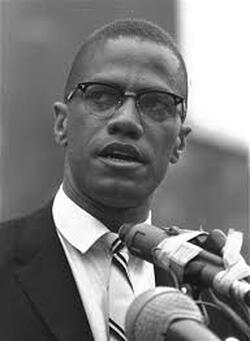 “It’s impossible for a chicken to produce a duck egg — even though they both belong to the same family of fowl. A chicken just doesn’t have within its system to produce a duck egg. It can’t do it. It can only produce according to what that particular system was constructed to produce. The system in this country cannot produce freedom for an Afro-American. It is impossible for this system, this economic system, this political system, this social system, this system, period. It’s impossible for this system, as it stands, to produce freedom right now for the Black man in this country. And if ever a chicken did produce a duck egg, I’m certain you would say it was certainly a revolutionary chicken!”[9] The Two Hands of the State: Both Deadly Community advocate and Panther 21 defendant Michael Cetewayo Talbert articulated the reality of why mainstream rehabilitation programs failed the vast majority of Black, Brown and poor white addicts in the 1960s. “The basic reason why the plague cannot be stopped by the, drug prevention and rehabilitation programs is that these programs, with their archaic, bourgeois Freudian approach and their unrealistic therapeutic communities, do not deal with the causes of the problem. These programs deliberately negate or at best deal flippantly with the socio-economic origin of drug addiction. These programs sanctimoniously deny the fact that capitalist exploitation and racial oppression are the main contributing factors to drug addiction in regard to Black people. These programs were never intended to cure Black addicts. They can’t even cure the white addicts they were designed for.”[10] Cetewayo—named after the late 19th century Zulu king who fought the English invasion of Southern Africa—pointed an accusatory finger at individualized, government-sponsored programs, if and when they even existed, because they covered up the broader socio-economic context of oppression. The state first crushed the liberation movement —dismantling the programs led by revolutionary organizations—and then set up a network of tunnel-vision, pity-the-poor, charity non-profits. Just in 1969, the FBI and COINTELPRO assassinated 26 leaders of the Black Liberation Movement and jailed hundreds of others on trumped up charges, including Cetewayo and 20 other New York City based Panthers. The state took the initiative to behead the movement so that the community would continue to burn. Do-gooder outsiders, usually white, were subsequently paraded in to replace the authentic, grass-roots leadership that had undertaken community healing as part of the social struggle.[11] Limits of the Social Work Model The media and educational system intentionally deprive people of their spiritual and political ancestry, laying a basis for disillusionment and pessimism. When none of this is addressed, the survivor/addict “comes up with answers that don’t answer and solutions that don’t solve,” to quote Fred Hampton. [12] An underfunded social work agency is the cheap substitute for a self-determining community, the crumbs the system arrogantly tosses the disenfranchised. Instead of fostering a positive, redemptive, collective self-esteem, social work agencies push individualized solutions. This may include therapy and benefit access, and medications like Methadone and Suboxone. These interventions can be effective in some cases, but they are detached from the overarching cause of broad societal healing. When they are detached from genuine resistance, they are band aids that are placed over hemorrhages, often substituting one addiction with another. This article should not be read as an attack on the individual social service workers, who, most often, are hard-working, compassionate people. This is a challenge to them as well, to begin, or in some cases continue, to question what social class they serve. Can they cease to be cogs in a machine that churns out stagnancy and disempowerment and align themselves with the liberation movement?[13] The everyday social workers’ test is achieving balance between a job to survive and the revolutionary work that they believe in. Social work agencies (their job) consume their employees nearly entirely, leaving them few hours to step outside of their routine and to do the real, liberation work that needs to be done. By doing so, the non-profit sector benefits from the organizing talent of a particular segment of socially conscious college graduates. The potential freedom fighters are often bogged down and burnt out before they are able to find a revolutionary expression of their desire to help the oppressed. Narcotics Anonymous Narcotics Anonymous is a lifeline for hundreds of thousands of people. The author has seen the NA model keep his own sister alive and respects the powerful healing NA groups are engaged in, across the world. A powerful question to wrestle with is how can revolutionary organizations relate to individual members of NA groups so that they can move beyond an individualized approach to addiction to a community and national model of healing and consciousness-raising? The strength of NA is that it is available to everyone. In contrast to the massive “recovery” industry in which people are shuttled off into 30, 60, 90 day or longer “spin dry” programs, to the tune of tens of thousands of dollars, NA, like a revolutionary organization, does not discriminate against or reject anyone. Many “rehab” programs are inaccessible because of how expensive they are. The 10th tradition of NA states: “10. Narcotics Anonymous has no opinion on outside issues; hence the NA name ought never be drawn into public controversy.” This tradition was originated by Alcoholics Anonymous, NA’s predecessor. The original AA “long version” of the tradition sheds more light on its intention: “No A.A. group or member should ever, in such a way as to implicate A.A., express any opinion on outside controversial issues—particularly those of politics, alcohol reform, or sectarian religion. The Alcoholics Anonymous groups oppose no one. Concerning such matters they can express no views whatever.” Given the history of NA and its primary objective —to beat addiction— this is understandable. For a NA group to violate the 10th tradition would be divisive for its membership and would spell doom for the NA fellowship organizationally. The gut instinct, to distrust politics, makes sense from the perspective of populations hoodwinked every four years by politicians, who make empty promises in exchange for votes. But the vast majority of addicts are members of the working class, facing the same issues of exploitation or unemployment, racism, sexism and anti-LGBTQ bigotry as the rest of our class. In early recovery, addicts correctly focus on getting clean and staying clean, and this may take all their energy beyond basic survival. But with the help of NA and other recovery groups, many are able to enjoy the gift of long-term abstinence from drugs. At this stage of recovery, it makes sense to take an objective look at the world and try to understand it. Just as in NA addicts learn that “together we can do what we could never do alone,” so in the larger society, recovering addicts can learn that “the people united will never be defeated.” This process is already beginning, as some people in the recovery community have formed a network called “New Recovery” that brings together community-based organizations made up of people overcoming addiction and their families. New Recovery focuses on community education and political advocacy around issues of importance to the recovery community—for instance, insurance parity for mental health and addiction treatment, restoration of voting rights for felons convicted of drug crimes, alternatives to prison as an approach to the problem of addiction, and so on. Already, we know revolutionaries, union organizers, union members and conscious workers who are seeking or have achieved long-term recovery in NA and AA. How can revolutionary organizations organically win these survivors and fighters over to the broader fight? The Mightiest ‘Higher Power’ The theme of the 12-step program is the importance of surrendering to a higher power. NA and AA are correct to leave this higher power vague, so as not to infringe upon an individual’s personal faith. Everyone is entitled to their own spiritual outlook. Revolutionary socialists also believe in a higher power. And that power is the power of the people, millions of people—conscious, active, united and mobilized—in pursuit of emancipation. There are countless examples of the power of masses of people to directly intervene in and transform history, such as the Haitian Revolution, the Great Depression-era union struggles for Social Security and other benefits, the Chinese Revolution, the Civil Rights movement and the Vietnamese defense of their homeland and defeat of U.S. imperialism, from 1962-1975. As is said in NA, “Together we can do what we could never do alone.” This is true for freeing people from the chains of active addiction, and it is true for the processes that liberate people from political and social oppression. The oppressors do not voluntarily give up anything. The oppressed, out of necessity, must seize what we deserve. It is an individual’s right to believe in divine intervention in the affairs of society, but it is our duty to understand and then challenge that which is unjust in the world in front of us. People who work a strong program of recovery have the potential to become powerful organizers because they are principled people. Tradition 12 states: “always remember to place principles above personalities.” Our work then in the present should be to form working relationships with groups of individuals involved in the 12-step programs and highlight our common interest in overthrowing the social conditions that magnify the incidence of addiction and early death under capitalism. Cough it up, then Rise Up Journalist Johann Hari explains that a child who suffered abuse is 4,600 percent more likely to become an addict than a child who never suffered trauma.[14] NA groups can empower and help individuals insofar as they bring oppressed people together to share their pain and vocalize the individual trauma that participants have endured. But they do not engage in a critical assessment of why trauma is so widespread; that is not their purpose.
There are tens of thousands of NA groups spread across the world in over 100 countries, although the majority are in the United States; there are many more AA groups. These fellowships will continue to grow in response to the profound suffering caused by addiction. These programs will continue to help one addict at a time until revolutionaries address the pivotal questions: how and when will the unhealthy society that we live in—that inevitably produces addiction—be transformed? Like membership in NA, being a Panther or Young Lord was not a one-hour commitment, once or twice a week. It was a lifestyle. This righteous, inspired lifestyle transformed people. The uplifting of communities necessarily touched masses of people. Oppressed and exploited communities need leadership, organization and centralism. It is only the mighty centralism of the oppressed that can defeat the centralism of the oppressor (the police, the army). It is only through this fight-back movement, that we can forge our liberation. Another World is Necessary There can be no genuine, collective healing in a society organized against the interests of the vast majority. Until the addict is transformed into a conscious actor on the historical stage, cognizant of the dehumanization he or she has suffered before white supremacy, sexual violence, systematic neglect and all the other features of class society, they will remain a powerless, atomized object of societal scorn. The breaking away must be both individual and collective. Beattyville, KY, the Bronx, NY, Brockton, MA, Watts, Los Angeles, and every oppressed community in between writhes under the same system. Only a new system, based on a new set of principles, can begin to alleviate our suffering on a mass level. To embrace this historical challenge, arguably the most daunting any people has ever faced, is to bring into motion our people who have fallen by the wayside by the hundreds and thousands. We all have a role to play —no matter how great or small— in this struggle. (The author dedicates this article to his cousin Ben (27) and his sister Ellen (46), both of whom died of heroin overdoses. No life was lived in vain if it inspires others to nurture and protect the lives of future generations.) Endnotes [1] Statistics according to that Census Bureau 2008-12 survey, cited in The Guardian’s November 12th report. [2] Influenced by the Panthers, Angela Davis published Women, Race and Class in 1981, highlighting how poor Black women are triply oppressed by white supremacy, patriarchy and the class system. This is a good starting point for readers who want to read more on this subject. [3] The authorities called in the NYPD to restore business as usual. It was only the outpouring of community support that prevented the NYPD from inflicting abuse and legal reprisals at the hands of the state. [4] This clinic remained open until the next mayoral administration of Abraham Beame pulled funding from the project, resulting in a surge in untreated addiction in the area. In recent years, the cost of life saving medications needed to treat hepatitis C, cancer, cholesterol and other illnesses, rose more than 500 percent, creating wider gaps in an already unequal healthcare system. (“Drug Goes From $13.50 a Tablet to $750, Overnight.” New York Times. Andrew Pollack. Sept. 20, 2015.) Only a new system, which prioritizes people’s needs over profits, can we make health care available to all poor and working people. It serves us to remember this militant example of resistance today, as heroin and other health care epidemics continue to ravage the very communities where Lincoln Hospital is located in the South Bronx. [5] Live Science defines addiction as a brain disorder in which the circuitry of the brain demands “rewards,” in the form of alcohol or drugs. Addiction now Defined as Brain Problem, not Behavioral Problem. Live Science. August 15th, 2011. Socioeconomic Status and Substance Use among Young Adults: A Comparison across Constructs and Drugs. Journal of Studies of Drugs and Alcohol. September 2012. “Among Delinquent Youth, whites more likely to abuse hard drugs vs Black or Hispanics.” Russia Today. March 18, 2016. “Study: Whites more likely to Abuse Drugs than Blacks.” Heathland Time. Nov., 7, 2011. [6]From an interview in “Black and Gold” documentary film. Directed by Richard Rowley and Jacqui Soohen. 1999. [7] Aime Cesaire, Les Armes Miraculeuses (And the Dogs were Quiet, Et les chiens se taisaient), pp. 133—37. [8] Dead Prez’s song and video “I Believe” brilliantly synthesizes the thesis of this article through hip hop. [9] From Malcolm X’s speech “This System can’t Produce Freedom,” March 29, 1964. [10] “Capitalism Plus Dope Equals Genocide,” by Michael “Cetewayo” Tabor, n.d. 1968. [11] This is precisely what happened in Haiti in the wake of the earthquake in 2012. Today “Third World countries” –read Oppressed Nations— have a higher rate of charity workers than ever, yet are further mired in impoverishment. This is by design. NGO’s are the internationalization of non-profit tactic of community dis-empowerment. [12] Fred Hampton [13] The book The Revolution will not be Funded is a good resource to understand the everyday role of the Non-Profit Industrial Complex in stamping out resistance. [14] Cited in Chasing the Scream: The First and Last Days of the War on Drugs, by Johann Hari. [15] Kathryn Edin and H. Luke Shaefer. $2 a day: Living on Almost Nothing in America. AuthorDanny Shaw Latin American and Caribbean Studies Professor at CUNY. International Affairs analyst at TeleSURtv, RT_com, HispanTV, and PressTV. Author: The Saints of Santo Domingo. Archives July 2023 As the Communist Party of the United States entered the fourth full year of the Great Depression in 1933, its leadership recognized that a major consolidation and refocus of Party effort was necessary to reach the vast potential of the moment. The communist movement had been established in the U.S. for 15 years by that point, and some advances had been made in rooting the Party in certain key sectors – but not in others. The left and socialist organizations were all growing amidst the Depression conditions as the tempo of the class struggle increased daily. Turmoil among unemployed workers, small farmers, and veterans was beginning to approach a mass scale, and the battered trade unions had begun stirring in scattered and desperate strikes in opposition to wage cuts and employer assaults. Rightists, fascists, and militarists of every stripe likewise emerged in the economic collapse, tapping ruling class and mass working class discontent alike. Carbon copies of this process were unfolding world-wide. Something big was in the works, but what? A shift to the left? Or the right? Was another world war coming? Where was the United States going? What was ahead for the left? Would it be able to play a serious role in the fast-changing political and economic situation? The Extraordinary Conference Faced with this situation of both extreme threats and opportunities, the Communist Party opted to self-critically examine the actual state of things in its organization and work. Following a directive by the Communist International to conduct this “taking of stock”, parties across the world made the difficult self-assessment. The process that unfolded here in the United States culminated in a national Extraordinary Conference of the Communist Party that convened in New York City in early July 1933. Every facet of Party work, leadership, and membership was critically dissected to prepare for the Conference. What was the real size and composition of Party forces? What was the condition of their actual organizational and political activity? What was working, and what wasn’t working? Was there growth, or not? Why not? What did the membership really amount to, both geographically and industrially? How many were in the unions? In what areas of activity had the Party fallen short, or failed? What was the actual measure of the influence of the Party at that moment? How effective was the leadership? Were new priorities needed? Were previous leadership decisions being carried out, or not? Was new leadership needed? A rapid yet expansive and comprehensive inventory and inspection was made to determine what was really happening on the ground, top to bottom, in real numbers. Fuzzy claims and guesswork were discarded in favor of clear fact-based assessments. ( (For those seeking background on the 1932 and 1933 period see Philip Foner, History of the Labor Movement in the United States, Volume 11, The Great Depression and William Z. Foster, The History of the Communist Party of the United States, both from International Publishers. A Party Only on the Margins The 350 delegates who eventually took part in the 1933 Extraordinary Conference travelled to New York City with their heads spinning. They had much to consider as such a process had never before been attempted on such a scale. There was no escaping the fact that while the Party had made progress, and membership had increased markedly in the early Depression, the rate of progress, and the depth of the progress was insufficient to take advantage of the tremendous openings presented under the new conditions. Mistakes, miscalculations, and failures were chronicled. Some success was noted, but not nearly enough. Overwhelmingly the preparatory work and the Conference deliberations themselves revealed and concluded that the Party was still not growing and expanding in major ways. But why? Tremendous efforts were being made, some truly valiant and self-sacrificing. The answer to these questions became self-evident as a result of the work done to arrive at the Extraordinary Conference: insufficient effort, sometimes no effort had been conducted to root the organization in the working class, in the industries, in the workplaces, and in the unions. While all manner of good works and activities were being carried out by Party members and leaders in many fields, the Conference zeroed-in on the undeniable fact that the focus of the vast majority of its activity was far, far, removed from the workplaces and the trade unions. Too much priority was being placed on struggles removed from the centrality of the workplace and the working class that comprised the natural constituency of a mass socialist party. The Communist Party existed largely in the margins of U.S. political life, with no roadmap into the mainstream. Facing this fact meant confronting it, explaining the error, and redirecting the new and greatly unified Party work. This work was intended to bring not just membership growth in numbers, but in quality. Growth needed to occur in places likely to position the Party for potential mass growth among workers as the Depression continued to worsen. At its conclusion the Conference issued a broadside to the membership, an “Open Letter”, explaining that business as usual, the same routine, just putting one foot in front of the other, all these failed approaches had to be cast aside. Foster Endorses the Renewed Direction William Z. Foster recalled that the Extraordinary Conference “…addressed an Open Letter to the Party, outlining a program of militant struggle, stressing the need to concentrate upon building Party units and trade unions in the basic industries and to give all support to the growing mass strike movement. …(The Extraordinary Conference) …played a vital role in preparing the Party for the big mass struggles.” While not long the “Open Letter” issued by the Conference was distributed in massive quantities to all corners of the Communist Party membership and among supporters and contacts. An open letter to all members of the Communist Party, The Daily Worker of July 12, 1933, featured a front-page headline and article regarding the Conference, blaring that “Communist Party Holds Extraordinary National Conference to Strengthen Work in the Factories and Trade Unions”. The next day the Daily Worker published the entire text of the Open Letter to inform the membership and trigger discussion. For many months after the Conference, Party publications and cadre repeated the drumbeat; “Into the factories, into the unions!” There was unity on a scale never before seen. It wasn’t unanimous, or monolithic, but large sections of a national organization were moving in the same general direction. For a change. he effect of the Open Letter was immediate and electrifying. The preface of the letter explained that “This Extraordinary Conference and the Open Letter are designed to rouse all of our resources, all of the forces of the Party to change this situation, and to give us guarantees that the essential change in our work will be made.” Several basic tasks were mandated to move the organization forward, out of its isolation from the mass of the working class, to be in a better position to play a decisive role in the rapidly unfolding and spreading labor upsurge. It was decided that the Party was to refocus its primary efforts on organizing the workplaces and unions, specifically in geographic areas where key industries were concentrated. Expanded work was directed in the left-led unions and labor movement generally. It called for greatly increased activity among the unemployed, for a complete overhaul of work to expand distribution of the Party press and therefore its message. It called for the Party to embark on a program to dramatically expand the ranks of Party leaders and cadre drawn primarily from the workshops and unions. Other work of the Party was not abandoned, but all of it was rethought and relaunched to support and complement the new emphasis. The results were immediate. New members began to trickle in, then pour in. Work in the unions exploded on all fronts, placing the Communist Party in the leadership of more labor struggles than it could have imagined just the previous year. Party morale zoomed as nearly everyone sensed that the decisions of the Extraordinary Conference had been correct. Can We Do Anything Today? Could any process such as that recounted here with the Extraordinary Conference be replicated today? So far as the status today of the left-wing organizations and networks, they apparently continue to slowly grow and develop, albeit without any central strategy or concentration of activity. With only a few exceptions the left organizations remain small and scattered although virtually all have grown significantly in the past decade. Much of the new membership arrives spontaneously or anonymously via the Internet. Members lapse or drop and there are few explanations for why they did this. Actual programmatic recruitment seems sparse and is sometimes completely neglected. Organizational functioning seems haphazard, and in some cases is conducted solely by Internet. In-person meetings and work still lag on account of the pandemic’s residual effects and likewise because of the widely scattered membership. Tremendous energy is expended on support for left Democrats running for office – or governing – in some of the organizations. The jury seems out on whether this work builds the organization of the Democratic Party or of the socialist organization offering the free assistance. Every left group or chapter announces its formation with a creative logo, a web site, and with an ample social media presence, just before deciding “what to do first?” Actual discussion of socialism or study of socialist history or philosophy seems to be underway here and there but is not promoted widely. Socialist oriented podcasts, videos, and on-line journals seem to be having no problem growing and expanding – and reaching a significant audience – but few put any emphasis on actually building the socialist movement in any concrete way. For the first time in many decades, it appears that the center of gravity for the left has migrated away from the college campuses and into the communities, although the colleges and universities continue to dominate the vast bulk of left leadership and writing. “Socialist” activism today is most certainly rooted and focused on activities mostly outside of the workplace, outside of the unions, with some noted exceptions. As was the situation facing the left organizations and the Communist Party of 1933 there were hopeful signs and good works being done, some progress, but not nearly enough of either. As for the workplace and trade union work of the left organizations today, there is only spotty and relatively recent work in evidence. All is positive, but as yet in too small a supply to be decisive or even measurable in many places. Anecdote might also lead us to conclude that the majority of workplace and trade union work underway by the left is spontaneous and not deliberately organized, a result of no more than the need of everyone post-school to go to work and somehow earn a living. The development and reinforcement of left forces within the unions is fragmentary at best, and as the last retirements of the 1970’s generation proceed many unions find themselves without any substantial left-wing membership or activism. There are widespread numbers of dedicated socialist trade unionists and hopeful organizers and salts at work, but again scattered with apparently little coordination, strategy, or common mission. Ignore Workers? Or Reach Out to the Working Class? Critics and opponents of the Open Letter and its methodology will likely point out that the degree of organizational unity and action that the Communist Party was able to muster was the result of a Leninist, meaning “democratic centralist” party structure and functioning. They might offer that to expect today’s left-wing groups to function with this degree of cohesion and discipline is unrealistic, even impossible. But this instantaneous rejection of a refocused course of action is defeatist in the extreme, perhaps unintentionally so. Trade unions are periodically able to adopt a unifying common mission, then apply resources and leadership effort towards that goal. The decision by the socialist organizations to refocus on workplace and trade union organizing does not require a restructuring of the organization along Leninist lines. Such a direction would be beneficial but is not required for the concentration on the working class to be initiated.The left organizations have for the most part avoided concentration on the workplace and the unions for decades, and their decisions to focus on the “community” aspects of work has proven to yield a poor return for the oceans of effort poured into it. As William Z. Foster proved with both the meat packing campaign and the great steel organizing drive – and later the steel strike – otherwise small and scattered left forces can literally move mountains when there is a clear, defined, and achievable goal with realistic time frames offered for the duration of the struggle. The bulk of Foster’s early work and accomplishments were not the result of the work of disciplined Leninist cadre but were instead the result of a relative handful of single-minded militants leading significant numbers of members in the unions – and relentlessly pushing on the union leaderships to carry out a popular course of action. Mass campaigns are feasible today that would sweep into action large numbers of militants and members with no required discipline other than common agreement. The existing left organizational leadership must be won over to this understanding, and to an admission that so long as the left organizations pursue a loose, unfocused, and scattered program of activity that the results will remain small. So long as the left organizations treat the workplace and unions as an afterthought, or as a sideline, the bottomless basket of left issues will forever take precedence over direct worker contact and organization. And unless the socialist movement is able somehow to root itself directly in working class struggles, history has shown repeatedly that it will ebb and flow and eventually dissipate as new issues du jour appear and disappear. The Left Wing Must Do the Work The legacy of the Extraordinary Conference and its Open Letter is sadly forgotten but should be revisited. Not only for the organizational lesson that it offers, but because it requires socialist leadership to accept responsibility for their work and performance. The resolve of the Communist Party leadership and membership that flowed forward from the Conference and its Open Letter set a tone and course for a focus on union organizing and contact with the working masses that contributed greatly to the 1930’s radicalization. The foundations of the CIO upsurge were laid in many quarters by the work of the trade union militants in or around the Communist Party, and by millions of ordinary workers swept up in the left-wing spirit of the times. Left organizations other than the Communist Party – small and not so small alike – for the most part all turned their focus towards working class organization and trade union struggles in that period. These factors all contributed to the largest socialist and trade union organizational growth in the past 100 years. Several of the significant left organizations and networks now approach their respective conventions in the year to come. Is such a refocus on the centrality of the class struggle and the working class possible, even in part? Can it be placed on the agenda? Will forces emerge to promote something resembling a concentration on the workplaces and the unions? Or will the situation persist where all issues are treated as equals, with little emphasis, and little hope of significant growth and revival of the labor movement? Will the leadership of the left organizations be measured by their performance so far as building the organization and its real reach, or will they be swept again into office based on a renewed approach to methods already proven to be failed? I encourage all of the left militants, trade unionists, and workers toughing it out in the shops trying to organize to familiarize themselves with the Open Letter. It is perhaps a modern-day guide for action today. Author-Chris Townsend was a member and staff member of the Amalgamated Transit Union (ATU) and the United Electrical Workers Union (UE) for a combined 38 years. He continues to work as a union organizer today. He may be reached at [email protected] This article was republished from Marxism-Leninism Today. Archives June 2023 6/10/2023 Revolution and counterrevolution: remembering Tiananmen 34 years later By: Amanda YeeRead NowThis June 4 marks the 34th anniversary of what is known in the United States as the Tiananmen “massacre.” The story we are typically told in the West is that young student activists had gathered in Tiananmen Square, uniting around the liberal demands of democracy and freedom, bravely defying the repressive Chinese government. After weeks of these ongoing protests, the Communist Party of China had had enough and cracked down on the peaceful protesters. As the story goes, in the early morning hours of June 4, 1989, People’s Liberation Army tanks rolled into the square. They were said to be indiscriminately shooting and mowing down innocent, unarmed protesters, killing thousands. To put it simply, this particular understanding of a “massacre” of pro-democracy protesters in Tiananmen Square on June 4 is a fabrication, the mythology of which has been exploited by the West for over 30 years as evidence of the ruthless, authoritarian nature of the CPC to justify imperialist aggression against China. The iconic “tank man” Even the story of the “tank man” — the most iconic image to come out of the event and has become a metonym for the Tiananmen massacre itself — has been deliberately manipulated by the U.S. media machine in the service of its anti-China propaganda effort. For one, the photo was taken on the morning of June 5, not June 4, so the military tanks were actually leaving the square. And second, the man in the photo was not run over by the tanks as implied by the image. The full video shows that after a few seconds of the stand-off, the tank attempts several times to swerve around the man, but he manages to keep stepping in its way blocking its path. Finally, the man climbs on top of the tank, looks to speak to the driver for a few minutes, before finally climbing off and eventually jumping in front of the tank’s path again. The standoff continues for another few seconds, before the man is finally pulled away by a group of civilians. The truth of the 1989 Tiananmen protests is far more complex than the simple rendering of an authoritarian Chinese government cracking down unprovoked on pro-democracy protesters — it’s a story of societal divisions unresolved from the Cultural Revolution, which bled into the “reform and opening up” policy implemented under the leadership of Deng Xiaoping, finally erupting into the the seven-week long occupation of Tiananmen Square. It is also a story of the internal and external contradictions the Communist Party of China found itself navigating as it embarked on economic development. 1966-1976: The Great Proletarian Cultural Revolution To fully understand the Tiananmen protests, we need to lay out the economic conditions and emerging ideological undercurrents which laid the foundations for them. In 1966, Mao along with close allies in the leadership of the Communist Party, like Jiang Qing, Wang Hongwen, Zhang Chunqiao, and Yao Wenyuan — known as the Gang of Four — launched what is known in China as the Great Proletarian Cultural Revolution. This triggered a decade-long struggle within the CPC between their faction — which sought to prevent China and the international communist movement from going down the path of what they saw as Soviet revisionism that strayed from the revolutionary principles of Marxism — and who they called the “capitalist roaders” led by Deng Xiaoping. It’s important to note here that both factions of the CPC feared counterrevolution and recognized the necessity of economic development in order to overcome the legacy of its century of domination by colonial powers, but differed in their assessment of how to achieve it. Mao favored the continuation of a fully planned economy. He feared a new local bourgeoisie would develop as a result of opening up China to the global capitalist economy, and that it would bring with it counterrevolution. Deng, on the other hand, recognized these risks, but was willing to take the gamble. By granting access to its domestic market and cheap labor pool, China would in exchange receive access to Western technology, allowing it to develop the productive capacity of its economy. Deng saw no other option but to walk that tightrope to achieve modernization. Mao saw the Cultural Revolution as a continuation of the class struggle. The ten-year campaign not only targeted those seen as revisionists and counterrevolutionaries both inside and outside the party, but also attempted to bridge the divide between the rural and urban populations. The political tumultuousness and social upheaval of the period is well known, but less acknowledged are its achievements, particularly in education reform and expansion of medical care into the rural sectors of society. At the time, 80% of the Chinese population lived in the rural areas, and most of them were illiterate. The Cultural Revolution saw expansion of primary school education and development of railways and other infrastructure to these areas. During this period, college entrance exams were suspended, and instead, high school graduates were sent to the countryside to do work and learn from local populations. Despite these achievements, the rural-urban class divide still remained, and these antagonisms would intensify in the lead-up to, and during, the Tiananmen protests. 1976-1978: death of Mao and path to reform After a decade, the Cultural Revolution ended with Mao’s death in 1976. In December 1978, at the Third Plenary Session of the 11th Central Committee, the CPC met and adopted the “Resolution on certain questions in the history of our party since the founding of the People’s Republic of China” to reckon with and correct what they saw as the mistakes of the Cultural Revolution, and to officially set the party on the path to reform. Recognizing the Cultural Revolution as a “severe setback,” this resolution placed the responsibility for its excesses on Mao, but did not repudiate him. It argued Mao made grave mistakes during the later years of his life, but what he contributed to China and the CPC far outweighed whatever missteps he took. With this resolution came a reevaluation of the priorities of the revolution. Whereas Mao had previously identified the class struggle — of which the Cultural Revolution was the culmination — as the principal contradiction, the CPC now contended that China had advanced past this stage, as the “exploiters have been eliminated as classes.” While elements of class struggle still remained, the principal contradiction was now of backward social productivity versus people’s material needs. This resolution concluded: After socialist transformation was fundamentally completed, the principal contradiction our country has had to resolve is that between the growing material and cultural needs of the people and the backwardness of social production. It was imperative that the focus of Party and government work be shifted to socialist modernization centering on economic construction and that the people’s material and cultural life be gradually improved by means of an immense expansion of the productive forces. In the final analysis, the mistake we made in the past was that we failed to persevere in making this strategic shift. What is more, the preposterous view opposing the so-called “theory of the unique importance of productive forces,” a view diametrically opposed to historical materialism, was put forward during the “cultural revolution”… All our Party work must be subordinated to and serve this central task — economic construction. All our Party cadres, and particularly those in economic departments, must diligently study economic theory and economic practice as well as science and technology. Thus, the CPC embarked on the road to combine its planned economy with a market-based one in order to, in Deng’s words, “liberate the productive forces and speed up economic growth,” so that the people of China would one day achieve common prosperity. 1980-1989: Reform and Opening-Up era Under Deng’s leadership, the CPC officially launched its “Reform and Opening-Up” program in 1980 to reboost an economy devastated by the Cultural Revolution and speed up modernization to build its productive forces. During this period, China integrated itself into the world economy abroad, while scaling back social welfare programs and implementing economic liberalization policies domestically. The “reforms” included domestic policies to boost economic productivity. The government’s “iron rice bowl” safety net was gradually chipped away, jobs were no longer guaranteed by the government, and the centrally planned economy was transformed into more of a market-oriented one, while retaining some level of state control. In the rural areas, communes were decollectivized, with the collective farming system converted into a “household responsibility system,” which “allowed households to contract land, machinery, and other facilities from collective organizations.” The households could make independent operating decisions within the confines of their contract, which allowed farmers to financially benefit from their crops. Farmer incomes and agricultural prices were raised to encourage consumption in the rural areas and help further close the rural-urban income gap. Crop yields increased significantly during this period, adding another major boon for farmers. Urban reforms included decentralizing state industrial management and reforming state-owned enterprises to grant them some level of business independence and autonomy, and the lifting of price controls on staple foods and agricultural commodities. The “opening up” included the implementation of Deng’s “Open Door Policy,” which allowed for foreign business investment into the country in exchange for access to China’s cheap labor pool and the promise of super-profits. A degree of risk was always present in the pursuit of these economic policies. They opened up China to foreign investment and foreign technology transfer to allow it to overcome its poverty and underdevelopment, but as predicted a capitalist class emerged. Along with that came a new bourgeois ideology, producing social forces hostile to socialism. Now a segment of society, particularly students and intellectuals, increasingly looked westward to the United States and its institutions as an aspirational political model. Liu Xiaobo — one of the most vocal activists during the Tiananmen protests who later won the Nobel Peace Prize — relayed such pro-colonialist aspirations in a 1988 interview when he firmly stated, “To choose Westernization is to choose to be human.” In another 1988 statement, Liu similarly asserted, “It took Hong Kong 100 years to become what it is. Given the size of China, certainly it would need 300 years of colonization for it to become like what Hong Kong is today. I even doubt whether 300 years would be enough.” Of this political shift among China’s intellectuals, Li Minqi, a Chinese political economist who also participated in the Tiananmen protests as a student, wrote, “[A]mong the intellectuals, there was a sharp turn to the right … Many regarded Mao Zedong himself as an ignorant, backward Chinese peasant who turned into a cruel, power-hungry despot who had been responsible for the killing of tens of millions. The politically active intellectuals no longer borrowed discourse from Marxism. Instead, western classical liberalism and neoliberal economics, as represented by Friedrich Hayek and Milton Friedman, had become the new, fashionable ideology.” For his part, Deng anticipated and warned of these kinds of bourgeois ideological undercurrents, which would later feature so prominently among the student protesters at the 1989 Tiananmen protests. In 1985, he stated matter-of-factly, “Since the downfall of the Gang of Four an ideological trend has appeared that we call bourgeois liberalization. Its exponents worship the ‘democracy’ and ‘freedom’ of the Western capitalist countries and reject socialism. This cannot be allowed. China must modernize; it must absolutely not liberalize or take the capitalist road, as countries of the West have done.” Though Deng saw the necessity of employing “the mechanisms of the marketplace to develop its productive economy” for the time being, the goal of socialism remained. Deng argues that the development of production would in time lead to common prosperity for the people. 1989: the Tiananmen Square protests It was these legacies of the Cultural Revolution and the economic liberalization reforms, which would provide the social basis for the Tiananmen protests. On April 15, 1989, Hu Yaobang, former General Secretary of the CPC and one of the more radical advocates of the free market program, suffered a heart attack and died suddenly. Hu was one of the leaders of the “Boluan Fanzheng” (translated as “to eliminate chaos, and return to normality”) campaign, which reversed many policies of the Cultural Revolution. It was the Boluan Fanzheng policy which saw the reopening of universities closed during that ten-year period, as well as the reopening of college entrance exams, granting students a pathway to higher education again. He also exonerated a number of intellectuals persecuted during the Cultural Revolution. For these reasons, Hu was a beloved figure among students and intellectuals. Over the next few days, university students mourned Hu’s death and held rallies in his honor, marching to Tiananmen Square to place flowers for him at the Monument to the People’s Heroes. These rallies then evolved into protests for further economic and political reform, turning into an occupation of the square, which lasted seven weeks until June 4, in what we now know as the Tiananmen protests. The demands in the beginning of the protests were mostly related to the lifting of price controls, inflation and labor market competition. The lifting of price controls led to price hikes on staple foods and commodities for those in urban areas. This was a boon to rural businesses and farmers, but in the cities this intensified an existing inflation and cost of living crisis. Urban workers’ wages were not keeping pace with this inflation, which had reached a staggering 18% by 1989. It was for these reasons that a significant number of workers eventually joined the students in the protests in Tiananmen. Demands also revolved around ending corruption within the CPC, as some party members used their political leverage to become the earliest capitalists, enriching themselves. The student protesters especially resented those in the party who with the right connections were able to attain the few higher level jobs that existed. While the 1980s saw an expansion of higher education, most jobs at that time were still in low-end manufacturing, which didn’t appeal to university students. But sharp class divisions were evident among those in the square, and tensions existed between student and worker protesters. Though they were eager to grow their numbers and enlist support, the student protesters shunned and looked down upon the urban workers, and the two segments were often segregated at Tiananmen. Student leaders insisted that the workers stay off the main part of the square, in order to keep the democracy movement in their eyes “pure.” The student leaders of the protests were not shy in voicing their contempt for the workers. In an interview for The New York Times, Wang Dan, a 20-year-old history student at Beijing University who was one of the most prominent student leaders in the square, stated bluntly that the movement was not yet ready for worker participation. According to him, “Democracy must first be absorbed by students and intellectuals before they can be spread to others.” Li Minqi similarly wrote of these elitist attitudes felt among the students in his later reflection of the protests: As the student demonstrations grew, workers in Beijing began to pour onto the streets in support of the students, who were, of course, delighted. However, being an economics student, I could not help experiencing a deep sense of irony. On the one hand, these workers were the people that we considered to be passive, obedient, ignorant, lazy, and stupid. Yet now they were coming out to support us. On the other hand, just weeks before, we were enthusiastically advocating “reform” programs that would shut down all state factories and leave the workers unemployed. I asked myself: do these workers really know who they are supporting? Indeed, the demands put forth by the protests overall were often diverse, and at times at odds with one another. Workers were critical of Deng’s economic liberalization policies as they bore the brunt of their negative impacts. Inspired by the emerging capitalist class in China, the students demanded an acceleration of these reforms, yet were also protesting the very consequences these reforms brought — corruption, inflation and skyrocketing cost of living. And of course, the vague demands of “democracy” adopted by the students and intellectuals reflected the nascent “bourgeois liberalization” political orientation that Deng had previously warned of. And while worker participation in the protests was certainly not insignificant, it should be noted that the political character of a movement is not determined by the individual ideologies of the participants — it is determined by the movement’s leadership. It was the student protesters with their pro-western orientation, signs written in English and cries for bourgeois democracy that received the most international media attention and the most resources. They refused to cede or even share leadership with urban workers. Over time due to this media amplification, it was the student leaders’ demands that became synonymous with the movement itself. Reporters from NBC, BBC, ABC and Voice of America had a consistent presence throughout the protests and covered them extensively. The U.S.-funded propaganda arm VOA, in particular, had an especially heavy presence in Tiananmen with one correspondent recalling, “VOA was extremely popular on the square, with students holding up radios so crowds could hear our Mandarin-language newscasts. Others transcribed our stories and posted them on electrical poles around the city.” As time passed, the actions along with the demands began to escalate as student leaders became more and more hardline and radicalized. In mid-May, the student leaders organized mass hunger strikes to coincide with the visit of Mikhail Gorbachev, then-leader of the Soviet Union. The hunger strikes prevented the Chinese government from welcoming Gorbachev in Tiananmen Square. The protests paralyzed the city and alarmingly created fissures and power struggles within the CPC. Party General Secretary Zhao Ziyang openly expressed sympathy toward the student protesters even visiting them in the square as a show of support. Premier Li Peng finally declared martial law on May 20, further radicalizing the students. Many protesters defied martial law and chose to remain in the square. In late May, to further pander to western sympathies, the students built and erected a 30-foot “Goddess of Democracy” statue, bearing a striking resemblance to the Statue of Liberty, attracting international attention. There was undoubtedly CIA involvement in the protests, but the full extent remains unclear to this day. According to a Vancouver Sun article from Sept. 17, 1992, the CIA had sources among protesters and within Chinese intelligence services, and it was assisting students in organizing the anti-government movement by providing support in the form of typewriters and other equipment. Chinese officials at the time also accused U.S. diplomats and CIA agents of “collecting intelligence aggressively” during the protests, and Zhao was later arrested and charged as having connections to U.S. intelligence. Given what we do know about CIA involvement in other socialist countries during the Cold War, however, we can safely assume there was some level of U.S. intelligence at least attempting to steer the direction of the student demonstrations. Soon, what were demands to control inflation turned into calls to overthrow the CPC entirely, with some leaders even going so far as calling for bloodshed. In a now infamous tearful interview, 23-year-old student protest leader Chai Ling, who was considered “commander-in-chief” of the square, tells a BBC reporter: The students keep asking, “What should we do next? What can we accomplish?” I feel so sad, because how can I tell them that what we are actually hoping for is bloodshed, for the moment when the government has no choice but to brazenly butcher the people. Only when the square is awash with blood will the people of China open their eyes. Only then will they really be united. It’s worth noting here that by the time of this interview, Chai had already secured a visa to the United States as part of the CIA’s Operation Yellowbird mission, which secretly smuggled hundreds of student dissidents out of China. She would not even be around for the bloodshed she was calling for. After their arrival into the United States, student leaders like Chai would then be thrust into the media spotlight, meeting with politicians and used as propaganda tools to cement the mythology around the so-called June 4th massacre. Up until that point, the response to the demonstrations on the part of the CPC had been remarkably restrained throughout. But It was clear that without decisive action, the protests had the potential to escalate even further, bringing about the very real threat of civil war or even toppling the Chinese government. June 4, 1989: myth vs. reality As the story goes, the protesters continue to defy martial law, and finally having had enough, the CPC orders the People’s Liberation Army to clear Tiananmen. According to this story, in the early morning hours of June 4, PLA tanks roll into the square, indiscriminately mowing down peaceful, unarmed demonstrators in a bloody crackdown. The “massacre” narrative is as sensationalist as it is incontestable: Supposed eyewitness accounts tell tales of student protesters linking arms only to be run over repeatedly by military vehicles, remains of protesters incinerated and then washed down drains, of students begging for their lives only to be bayoneted by soldiers. Some western reports estimate as many as 10,000 killed. But there was no such massacre in Tiananmen Square. By that time, most of the protesters had left the square, and the ones who remained left peacefully after negotiating with the army. A leaked diplomatic U.S. cable sent around that time confirms there was no such bloodshed in the square. “They [student protesters] were able to enter and leave the square several times and were not harassed by troops,” the cable reads. “Remaining with students by the Monument to the People’s Heroes until the final withdrawal, the diplomat said there were no mass shootings of students in the square or at the monument.” Other eyewitness accounts from on-the-ground journalists corroborate this. CBS News correspondent Richard Roth, who covered the protests later wrote, “There were some tanks and armored personnel carriers. But we saw no bodies, injured people, ambulances or medical personnel — in short, nothing to even suggest, let alone prove, that a ‘massacre’ had recently occurred in that place.” Likewise, Jay Matthews, who traveled to Beijing to cover the protests for The Washington Post, wrote in 1998, “The problem is this: as far as can be determined from the available evidence, no one died that night in Tiananmen Square. A few people may have been killed by random shooting on streets near the square, but all verified eyewitness accounts say that the students who remained in the square when troops arrived were allowed to leave peacefully.” Reporter Nicholas Kristoff, then-Beijing correspondent for The New York Times, similarly disputed the account, printed in the Hong Kong newspaper Wen Wei Po, of PLA troops attacking students in Tiananmen: The central theme of the Wen Wei Po article was that troops subsequently beat and machine-gunned students in the area around the monument [Monument to the People’s Heroes in Tiananmen] and that a line of armored vehicles cut off their retreat. But the witnesses say that armored vehicles did not surround the monument — they stayed at the north end of the square — and that troops did not attack students clustered around the monument. Several other foreign journalists were near the monument that night as well and none are known to have reported that students were attacked around the monument. Street fighting on the night of June 3 While these journalists refute the narrative of a Tiananmen “massacre,” most of them do acknowledge that street fighting had occurred the night of June 3 in other parts of Beijing, albeit under different circumstances. This is consistent with Chinese government accounts of the events. On June 2, the CPC decided to clear Tiananmen Square. On the night of June 3, PLA tanks pushed into Beijing with clashes occurring in the neighborhoods of Muxidi, Gongzhufen, and along Chang’an Avenue. These clashes occurred outside of Tiananmen, so while there were some students involved, they were relatively few in number. Armed with Molotov cocktails, workers and civilians stopped and attacked trucks of soldiers, seizing weapons to use against the soldiers. Tanks were set ablaze by the rioters with soldiers still inside. Some soldiers were even lynched. A Wall Street Journal article from June 5, 1989, recounts: “As columns of tanks and tens of thousands of soldiers approached Tiananmen, many troops were set on by angry mobs who screamed, ‘Fascists.’ Dozens of soldiers were pulled from trucks, severely beaten and left for dead. At an intersection west of the square, the body of a young soldier, who had been beaten to death, was stripped naked and hung from the side of a bus. Another soldier’s corpse was strung up at an intersection east of the square.” Journalist David Aikman recalls, “In some places, soldiers were stripped almost naked, chased or struck by angry citizens. Other injured troops had difficulty getting to hospitals as mobs deflated or slashed the tires of military ambulances.” According to official Chinese government figures, the number of people killed in these clashes totaled 241, a figure which includes PLA soldiers. June 3 reveals historical legacies of Chinese socialist path One might ask why these details matter. After all, people were killed during that time — what is the significance of the exact location, or how many? The details matter because they present a narrative not so easily co-optable by western press in the service of its imperialist aims. For one, the reality of the street fighting disrupts the popular understanding of the military attacking “non-violent” protesters — it is this characterization of “nonviolence” which is crucial to evoking western sympathy. The workers involved in these protests and clashes came from factories, steel mills, railway yards and construction companies, and they did not have the level of higher education that the student protesters did. They did not draw the same level of attention from western press as the highly educated, pro-western student leaders, who their university-educated counterparts in the United States could identify with and see themselves in. It is this status of untainted victimhood which mobilizes support for foreign intervention. The details also present a story of what were at the time the contemporary realities and historical legacies of the Chinese socialist path. The night of June 3 saw an eruption of class antagonisms and deep societal divisions from the Cultural Revolution never fully resolved — and in fact heightened — by the policies of the Reform and Opening-Up era. PLA soldiers, for instance, were mainly recruited from the countryside where the CPC drew a large base of support and where there were many beneficiaries of Cultural Revolution and reform policies. Many urban workers and middle-class students and intellectuals suffered many negative impacts of these policies — albeit unevenly — such as inflation, job precarity and high cost of living. These clashes then can be understood as spontaneous expressions of these long-standing divisions. These deaths are a tragedy and are understood in China as such, but they should be recognized as part of the tragic complexities of a nation attempting to overthrow the yoke of a century of underdevelopment and subjugation, and to assert its own sovereignty. That the West manipulates the details and fabricates its own mythology around what happened only speaks to its own self-serving imperialist ambitions. The Tiananmen protests as a counterrevolutionary force Again, the class character of a movement is determined not by the individual make-up of its participants, but by its leadership. Workers may have been active during the demonstrations, but the student leadership had a bourgeois, pro-capitalist orientation. It’s clear from the students’ contempt for and behavior toward the workers at Tiananmen alone that their goals did not lie in advancing the interests of the broad masses of people. For western imperialists, Deng’s reforms were not enough: They wanted unfettered access to China’s markets and resources so that the country became a neocolony of the United States. Around the same time as the Tiananmen protests, anti-communist and counterrevolutionary revolts were spreading across Eastern Europe. One only needs to look toward the collapse of the Soviet Union just a few years later to understand the stakes of Tiananmen in 1989. If these anti-government forces had succeeded, China would have been thrust back decades in its economic and socialist development. An overthrow of the CPC would have resulted in the kind of “shock therapy” capitalist reforms that devastated the former USSR applied to China’s 1.1 billion people. The ensuing poverty, disease and starvation would have been massive. It was at Tiananmen that the unresolved contradictions from the Cultural Revolution and the Reform and Opening-Up period were unleashed — this much is true. But in the end, the final confrontation was between revolution and counterrevolution, and the outcome has had profound consequences that continue to shape the world today. AuthorAmanda Yee This article was republished from Liberation News. Archives June 2023 Recently, the United States has been followed by a number of European countries in supporting a cold war policy toward Russia and China. This has created increasing problems in Europe—bringing a major war to the continent, creating serious economic difficulties, and intensifying a decline in living standards. In this context, the case for Europe establishing an independent foreign policy has gained support, as a way of ensuring security and prosperity. Starting with the most extreme expression of the situation, the war in Ukraine has claimed tens of thousands of lives. The UN calculates nearly 18 million people need humanitarian assistance and millions have been displaced. This tragedy was avoidable. The underlying cause of the war was the U.S. policy to expand NATO up to Russia’s border, including the proposal that Ukraine join NATO when Russia has repeatedly made clear that that is a ‘red line’ threat to its security interests. The U.S. continued to push for NATO expansion despite this. The absence of an independent European foreign policy has been demonstrated in the policy of major European governments during the past year, with these governments supporting U.S. policy in Ukraine. This has been extraordinarily expensive. In 2022, NATO powers allocated huge sums to Ukraine—about $50 billion from the U.S., €52 billion from the EU and its member states, and £2.3 billion from Britain. In 2023, there has been an escalation in military aid sent. After pressure from the U.S., Germany approved the deployment of their Leopard tanks, while the British government is sending depleted uranium munitions. Militarization in Europe is clearly on the rise, in the past year, with major European governments increasing military spending—something the U.S. has called for over many years. Last year, German Chancellor Olaf Scholz pledged €100 billion in military spending, committing Germany to spend 2 percent of GDP on defense going forward. President Emmanuel Macron is increasing France’s military spending to around €60 billion by 2030—approximately double 2017’s allocation. Britain, historically the U.S.’s closest European ally, already spends 2.2 percent of GDP on the military, £48 billion a year. The U.S., in turn, has 100,000 troops stationed in Europe and numerous military bases, including 119 in Germany. The impact of this has negatively affected Europe’s interests. Without an effort to negotiate peace in Ukraine, rather than escalation, many will die and be displaced. Meanwhile, across Europe, there is an impact of high energy prices as a result of sanctions on Russia, while increased military spending diverts resources away from addressing the cost-of-living crisis. Europe has become more dangerous and poorer. The U.S. has not supported recent proposals for peace in Ukraine, such as those from China, which means a prolonged war. European countries could pursue a different path and play a role in backing negotiations to end the conflict. Global Cooperation Is the Key to Economic Prosperity Economically, Europe faces a parallel crisis. Slow economic growth, high inflation, and government austerity policies are hitting living standards while some European governments’ policies toward Russia and China have made the situation worse. Europe has been seriously damaged by participation in sanctions against Russia. These have increased energy prices while the U.S. has profited from selling more expensive liquefied gas to Europe to replace cheaper Russian gas delivered by pipelines. Journalist Seymour Hersh has made a serious case that the U.S. was also responsible for blowing up the Nord Stream pipelines between Russia and Germany. But European governments have failed to support the call for an independent investigation into this attack on Europe’s energy infrastructure. The U.S. has also urged Europe to pursue a more anti-China posture. This recently led to Europe’s relationship with China deteriorating. The Comprehensive Agreement on Investment between China and the EU, agreed in principle in December 2020, has not been signed despite the economic opportunities it opens for Europe. European governments are also being asked to join the U.S. attacks on China’s technology industry, some recently banning TikTok from government work phones with pressure for a wider ban. The economic consequences of this direction would be serious for Europe. China is the EU’s largest trading partner and the most rapidly growing major economy. The IMF’s latest growth projections for 2023 estimate China will grow by 5.2 percent—six times faster than the euro area’s 0.8 percent. The potential benefits for Europe of increasing win-win economic cooperation with China are therefore considerable. The Struggle for an Independent Foreign Policy The U.S.’s new cold war policy has therefore tended to produce chaos in Europe. In light of this, there are now signs some major European politicians do not wish to continue down this course. President Macron made a widely reported comment following his April 2023 visit to China. He stated that Europe must not be a “follower” of the U.S. when it comes to Taiwan, a key issue, and should instead pursue “strategic autonomy.” This followed significant economic deals struck between France and China during Macron’s visit. It remains to be seen whether Macron will have the political strength to follow through on such an independent approach, particularly given the backlash these comments immediately received from Washington. In March 2023, Spain’s Prime Minister Pedro Sánchez struck a similarly independent tone, stating, “Relations between Europe and China do not need to be confrontational. There is ample room for win-win cooperation.” Globally, the pursuit of an independent foreign policy is a growing trend. Such an approach has sustained peace in Asia with most countries focusing on economic development rather than confrontation. The recent breakthrough restoring diplomatic relations between Saudi Arabia and Iran, established with China aiding negotiations, opens up the possibility of overcoming a number of conflicts in the Middle East. In Latin America, Lula’s recent reelection in Brazil strengthens the political forces in favor of regional independence and development. Trends in Europe seeing an independent foreign policy as important for the region’s future are therefore in line with this overall global development. AuthorFiona Edwards is a writer and activist based in London and a member of the No Cold War international committee. Follow Fiona on Twitter at @fio_edwards. This article was republished from The Revolution Report. Archives June 2023 Thirty years ago today, the leader of the Grenadian Revolution, Maurice Bishop, was gunned down by his own comrades, the result of a disastrous split within the governing New Jewel Movement. There are many stones still to be unturned in connection with the revolution’s collapse and the anti-popular coup that paved the way for US invasion, but it’s clear that the movement fell victim to the sectarianism, dogmatism and individualism that emerge with frustrating frequency on the left. Combined with the systematic campaign of destabilisation and psychological warfare waged by the US, these factors led to the destruction of one of the most promising political processes of the latter part of the 20th century. Maurice Bishop was a popular, creative and intelligent revolutionary, with an intuitive grasp of where the masses were at. The clear leader of the Grenadian Revolution of 1979 that overthrew the corrupt and pro-imperialist administration of Eric Gairy, Bishop was a brilliant communicator, and his mutual empathy with the masses of the people was one of the major driving forces of the revolution – not unlike the relationship between Fidel and the Cuban people, or Chávez and Venezuelan people. In many ways, Bishop could be considered as the Hugo Chávez of his time. The Cuban government’s statement on the day after his death sums him up nicely: “Bishop was one of the political leaders best liked and most respected by our people because of his talent, modesty, sincerity, revolutionary honesty and proven friendship with our country.” 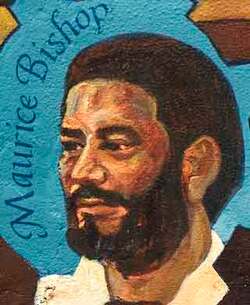 In addition to leading the fight for economic, political, social, racial, gender and cultural justice in Grenada; and in addition to working tirelessly to improve the lot of ordinary Grenadian people; Bishop was also a great friend to the socialist and anti-imperialist world. Fidel Castro saw him as a true brother and comrade, and Cuba embraced Grenada whole-heartedly, giving desperately-needed aid and expertise. Grenada built up close relations with (Sandinista) Nicaragua, the Soviet Union, Vietnam, East Germany, DPR Korea, Mozambique, Libya and Syria. Grenada also became a pole of attraction for black power activists from the US. Little wonder it was considered such a threat by the forces of imperialism. An example had to made of the first English-speaking country in the western hemisphere to walk the road of socialism. Hugh O’Shaughnessy writes: “[Washington’s] rage reached paranoiac proportions when Grenada started close co-operation with Cuba and the USSR. Grenada’s action challenged the hegemony that Washington was expecting to extend throughout the Caribbean after the withdrawal of the British who had dominated it for two centuries.” (‘Grenada – Revolution, Invasion and Aftermath’) The arrest and murder of Bishop and his close comrades by members of the Grenadian armed forces created a favourable context for the US to enact its invasion plans, which had been “nursed in secret at the State Department and the Pentagon for four and a half years” (O’Shaughnessy). The assassination was carried out by army officers acting under the instructions of the NJM faction centred around Bernard Coard. This group considered itself the ‘Marxist-Leninist’ trend to counter Bishop’s ‘petit bourgeois’ trend; however, its supposedly revolutionary actions were to set Grenada back by decades. Fidel commented on this issue in some detail at the time: “Today no one can yet say whether those who used the dagger of division and internal confrontation did so motu proprio or were inspired and egged on by imperialism. It is something that could have been done by the CIA – and, if somebody else was responsible, the CIA could not have done it any better. The fact is that allegedly revolutionary arguments were used, invoking the purest principles of Marxism-Leninism and charging Bishop with practising a personality-cult and drawing away from the Leninist norms and methods of leadership. In our view, nothing could be more absurd than to attribute such tendencies to Bishop. It was impossible to imagine anyone more noble, modest and unselfish. He could never have been guilty of being authoritarian; if he had any defect, it was his excessive tolerance and trust. In our view, Coard’s group objectively destroyed the Revolution and opened the door to imperialist aggression … Look at the history of the revolutionary movement, and you will find more than one connection between imperialism and those who take positions that appear to be on the extreme left.” 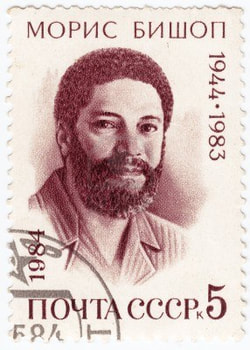 The Cuban government’s statement of 20 October 1983 predicted: “Now imperialism will try to use this tragedy and the serious mistakes made by the Grenadian revolutionaries to sweep away the revolutionary process in Grenada and place the country under imperial and neocolonialist rule once again.” A week later, this prediction was proven painfully correct, as Reagan sent tens of thousands of troops to ensure that the Grenadian Revolution was comprehensively wiped out. There is much research still to be done on the Grenadian Revolution, and many lessons to be learned. Such lessons are all the more relevant in today’s context of several Latin American and Caribbean countries pursuing their own roads to socialism. The US and their allies would love to do to Venezuela, Cuba, Bolivia, Nicaragua, Ecuador, Uruguay, Brazil and Argentina what they did to Grenada. Destabilisation continues in a thousand different ways. Meanwhile, the successes of Grenadian socialism – even if short-lived – continue to inspire progressive people around the world. The legacy of Maurice Bishop and the New Jewel Movement must be kept alive. What follows is a selection of interesting quotes from Bishop, sourced from:
On the danger of Grenada’s example “We are obviously no threat to America. Nor is Cuba for that matter. I think Washington fears that we could set an example for the rest of the region if our Revolution succeeds. In the Caribbean region you’re talking about small countries with small populations and limited resources, countries that over the years have been classic examples of neo-capitalist dependencies. Now you have these new governments like Nicaragua and Grenada that are attempting a different experiment. They are no longer looking at development as how many hotels you have on the beach but in terms of what benefits people get. How many have jobs? How many are being fed, housed, and clothed? How many of the children receive education? We certainly believe in Grenada that the people of the English-speaking Caribbean want to see an experiment like that succeed. They want to see what we are trying to build come about. America understands that and obviously if we are able to succeed where previous governments following different models failed, that would be very, very subversive.” On revolutionary spirit and vigilance “Revolutionaries do not have the right to be cowards. We have to stand up to fight for our country because, the country is ours. It does not belong to anybody else” On propaganda, education, cultural imperialism and decolonisation “We hold the truth itself to be revolutionary and we shall stand firm by its side.” On free speech, human rights and democracy “There are those (some of them our friends) who believe that you cannot have a democracy unless there is a situation where every five years, and for five seconds in those five years, a people are allowed to put an ‘X’ next to some candidate’s name, and for those five seconds in those five years they become democrats, and for the remainder of the time, four years and 364 days, they return to being non-people without the right to say anything to their government, without any right to be involved in running their country.” On destabilisation “Destabilisation is the name given to the most recently developed (or newest) method of controlling and exploiting the lives and resources of a country and its people by a bigger and more powerful country through bullying, intimidation and violence. In the old days, such countries – the colonialist and imperialist powers – sent in gunboats or marines to directly take over the country by sheer force. Later on mercenaries were often used in place of soldiers, navy and marines. Today, more and more the new weapon and the new menace is destabilization. This method was used against a number of Caribbean and Third World countries in the 1960s, and also against Jamaica and Guyana in the 1970s. Now, as we predicted, it has come to Grenada. Destabilisation takes many forms – there is propaganda destabilization, when the foreign media, and sometimes our own Caribbean press, prints lies and distortions against us; there is economic destabilization, when our trade and our industries are sabotaged and disrupted; and there is violent destabilization, criminal acts of death and destruction… As we show the world – clearly and unflinchingly – that we intend to remain free and independent; that we intend to consolidate and strengthen the principles and goals of our revolution; as we show this to the world, there will be attacks on us.” On independence “Grenada is a sovereign and independent country, although a tiny speck on the world map, and we expect all countries to strictly respect our independence just as we will respect theirs. No country has the right to tell us what to do or how to run our country or who to be friendly with. We certainly would not attempt to tell any other country what to do. We are not in anybody’s backyard, and we are definitely not for sale. Anybody who thinks they can bully us or threaten us clearly has no understanding, idea, or clue as to what material we are made of. They clearly have no idea of the tremendous struggles which our people have fought over the past seven years. Though small and poor, we are proud and determined. We would sooner give up our lives before we compromise, sell out, or betray our sovereignty, our independence, our integrity, our manhood, and the right of our people to national self-determination and social progress.” On Chile and the hypocrisy of imperialism “Has Reagan ever been interested in elections and democracy? When did Reagan ever call on Haiti to hold elections? When did Reagan ever call on the butcher Pinochet in Chile or on South Korea to hold elections? Is he calling upon racist South Africa to hold elections? No! Even when Allende in Chile had in fact won power through elections what did the American President – Nixon at the time do? Nixon, Kissinger and Helms sat down the night after Allende won the elections in September 1970 and they worked out their plan of aggression and destabilisation against President Allende. Allende didn’t say no more elections. He didn’t arm working people to try to close down the reactionary paper El Mercurio as he should have done. Allende relied on the parliamentary form that they wanted him to rely on. But because he was a socialist and was independent and was bringing benefits and justice to his people, the American elite went out of their way to crush him ruthlessly. And the criminal they put into power has yet to be told by the so-called democratic United States to call an election.” On Cuba
On the role of repression under socialism “All revolutions involve temporary dislocations and, for a period, it is always necessary to restrain the abuses and excesses of a violent or disruptive minority in the interests of consolidating the revolution and bringing concrete benefits to the long-suffering and formerly oppressed majority.” On the long path towards socialism “It took several hundred years for feudalism to be finally wiped out and capitalism to emerge as the new dominant mode of production and it will take several hundred years for capitalism to be finally wiped out before socialism becomes the new dominant mode.” AuthorCarlos Martinez is the author of The End of the Beginning: Lessons of the Soviet Collapse, co-founder of No Cold War and co-editor of Friends of Socialist China. He also runs the blog Invent the Future. This article was republished from Invent the Future. Archives May 2023 Aymeric Monville, French philosopher, director of the Les éditions Delga publishing house in Paris, deputy editor-in-chief of La Pensée magazine, in an interview with the Pravda correspondent in Western Europe, Andrei Dultsev, about the problems of perception of the historical and theoretical legacy of J.V. Stalin in Western European historiography. Andrei Dultsev [AD]: You have just published a book about Stalin, And For a Few More Canards: Counter-inquiry on Stalin and the Soviet Union. What do you think is the problem of the perception of Stalin in the West today? Aymeric Monville [AM]: In the West, historical analysis, if you can call it that, is based on a comparison of Hitler and Stalin, which is necessary above all to justify Western democracy. The vision of World War II is based on the fact that an objective collusion between Western capitalism and Nazism, which are in fact two sides of the same economic formation at different stages of political development, is being pushed into the background, and the term ‘totalitarianism, itself ill-founded, is used as a propaganda and ideological tool to show that Nazi Germany and “Stalinism” are the main threats to the society of Western values’. With my book, I want to return the Marxist view of things to the public space. That is, a conspiracy between Western democracies and Nazism, the perception of which suffered in the West under the influence of the ferocious anti-communism of the post-war era, which was also implanted in France, which is the weakest link in the political structure of the West. After all, France is the country of the Commune, a country of a very strong workers’ movement, a country where (along with Italy) there was the most powerful Communist Party outside the socialist community. Therefore, it is interesting to analyse the development of the vision of the USSR and the Stalin era here. The Black Book of Communism, which was imposed on us, received extremely negative international reviews from the scientific community, due to its intellectual fatuousness. But it was in France that this book was written, to begin to change the way things are viewed in the scientific community. If in the countries of Latin America there is a coup d’état and the coming to power of a military junta, then universities are surrounded by tanks and professors are killed. But in France Marxists are tolerated even in universities. Here there is a different revolutionary tradition, which some time ago was once again confirmed by the example of the movement of ‘yellow vests’; therefore intellectuals are waging a fierce struggle, trying to change minds by ‘soft methods”, from within. This intellectual battle for minds is being waged by the infantile method of demonising such an ordinary phenomenon as the cult of personality’; and, judging by the result, this method has so far been effective in deforming consciousness. Demonisation is part of the construction of a picture of the apocalypse, with Stalin as a ‘red tyrant’ and Katyn executioner. In fact, all this serves anti-Soviet propaganda, denigrating the USSR and deepening modern Russophobia. It is here that the friendly attitude of the French people towards the Soviet people, their gratitude, is a lump in the throat of anti-communists of all stripes, because, as Maurice Thorez once said, “France will never enter a war against the USSR.” This statement by Thorez is primarily associated with the sacrifices made by the Soviet people on the altar of victory in the struggle for the liberation of Europe from fascism. When the representative of the Russian Federation was not invited to the May 8 celebration in France last year, the memory of the Soviet feat, the memory of the 27 million victims of the Soviet people in this massacre unleashed by Hitlerite Germany, was spat upon for the first time. The demonisation of Stalin certainly contributes to the whipping up of this hysteria. This is reflected in the results of opinion polls: while, at the end of the war, the majority of French people were convinced that it was the Soviet Union that played a decisive role in the defeat of Nazism, today the situation is the opposite – most people believe that the United States won the war. This is first of all a consequence of the influence of Hollywood. American films have led the population here to believe that it was the United States who came to liberate France, when in fact they came to impose Operation Overlord, which aimed to make France a vassal of the United States. We owe our relative independence to the strong Communist Party, which actively participated in the struggle against the German fascist occupation. It should also be noted that it was General de Gaulle (few people mention this fact, since they usually write only about his merits) who ordered the destruction of the chapel at Fort Mont-Valérien near Paris, where many Resistance fighters were shot [the walls were demolished, the crypt was preserved -AD]. On the walls of the chapel, the Resistance fighters wrote before their execution: “Long live Stalin!” For General de Gaulle, this was a thorn in the eye, because it became obvious that the role of the communists in the Resistance movement was overwhelming and the traces of this memory had to be erased. AD: Although in the municipalities where the communists remained in power in the post-war years, both squares and boulevards with the name “Stalingrad’ have been preserved …. AM: Undoubtedly, Khrushchev’s report at the XX Congress of the CPSU influenced the French Communist Party. Nevertheless, the PCF remained a party that did not immediately recognise those parts of the report that seemed simply insane (for example, that the USSR was allegedly not ready for war). The French communists refused to renounce Stalin. But in the end, revisionism won out, and today it is very strong. For real communists, the issue has not been resolved. I will cite as an example a collaboration with the wonderful writer, Domenico Losurdo, which is very important for me. I translated Losurdo’s works from Italian into French and facilitated the translation of his books into other European languages, and this is where I ran into censorship. As long as Losurdo criticised liberalism, he was published, including in English publishing houses. Criticism of liberalism is perfectly permitted. But as soon as he came out in defence of real socialism, even China, the British stopped publishing him. This is censorship. It’s not even a matter of the author’s personality, but the fact that a certain theme is rejected – Lenin’s thinking and a clear orientation towards socialism as a social model. Leftists refer to all sorts of Trotskyist stereotypes – “party bureaucracy” etc – but just don’t talk about the construction of real socialism. AD: As a member of the Honecker Committee on the Affairs of Political Prisoners – the leaders of the former German Democratic Republic who were persecuted in the Federal Republic of Germany (FRG) after the collapse of the Wall – do you think that this battle against Stalin, which is being waged by the European pseudo-leftists (Greens. Social Democrats, the ARTE channel), is a continuation of the historical revisionism to revise the results of the Second World War, initiated by historians and politicians of the FRG? AM: The best example of this is the ARTE channel’s documentary about Katyn, where authoritative European historians in all seriousness rely on the documents transferred to Poland by Yeltsin, on which in 1940 instead of VKP(b)” was written “CPSU”, which testifies to the grossest historical fake. The same is the case with the Mednoye memorial complex, where 6,000 shot Poles were allegedly buried, but whose bodies were never found. Unfortunately, only historians are aware of these inconsistencies. But, far worse than these historical disputes, the film does not recognise the real borders of modern Poland. It is wrong to say that Stalin ‘invaded Poland after the German-Soviet pact. These were the Belarussian and Ukrainian lands captured by the Poles after the Civil War in Russia. The problem of Poland’s borders is important for the Germans. This means that for the Germans Poland should be pushed to the east, so Germany could lay claim to the territory of today’s western Poland, which would open the door for the new Drang nach Osten [Drive to the East]. One can, of course, argue that current politicians do not know history and are not interested in it, but I think that this is sometimes a trick, because among them there are those who know it very well. I think that responsible politicians knew what they were doing on 22 June 2021, when Europe announced sanctions against Belarus. Considering the brazen financing of Nazi movements in Ukraine, one can safely assert there are plans for a new ‘fourth Reich’, hence solidarity with the German communists is urgently needed. We see the extent to which the German Communist Party (DKP) is persecuted, and the same applies to Junge Welt, which for me, like Pravda, is the standard of Marxist thought today. But Junge Welt in Germany is actually under threat of extinction. Last year, even the Association of Victims of the Nazi Regime was attacked in Germany under the pretext of “extremism.” Undoubtedly, our creation of the Honecker Committee in France was symbolic, because it was this communist that the West German authorities imprisoned in the early 1990s in the same Moabit prison in which the Nazis threw him in the 1930s. West German justice knew perfectly well what it was doing. We must defend communists everywhere, all over the world in the face of anti-communist repression. AD: One of the books that came out recently in your publishing house is a book by Italian historians Daniele Burgio, Massimo Leoni and Roberto Sidoli about Trotsky’s collusion with the Nazis, about previously unknown documents of the second ‘Moscow trial’ (against Pyatakov and Radek). AM. This book seems to me absolutely necessary, because it talks about the second ‘Moscow trial’ in January 1937 and provides irrefutable evidence of the collaboration of Trotsky and the Trotskyist centre in the USSR with the Nazis. I insist on the word “irrefutable”, given that Khrushchev’s report cast doubt on this entire period. Undoubtedly, the period of party purges had its dark spots, but it is necessary to distinguish between the activities of the People’s Commissar Yezhov and ‘Yezhovism’ and the Moscow trials. The problem is that “Yezhovism”, and later the very report of Khrushchev at the XX Congress, defamed the “Moscow trials”: this term has become in Europe a synonym for a falsifed trial. Through this publication, I want to demonstrate that the second “Moscow trial”, in particular, was justified. This is confirmed by the state of the sources of the case, which cannot be denied; this is the problem of Trotsky’s archives, which the inconsistency of his texts of that period, his statements before the Dewey Commission. The book carefully compiles Trotsky’s lapses, his previously unknown letters that were found in the archives which prove, for example, that he was in con tact with Radek, although both denied this, The main subject of the investigation of the historians was the secret flight of Yuri Pyatakov to Trotsky in Oslo in December, 1935. We have all the evidence that the Norwegian authorities lied by denying it. To meet with Trotsky, Pyatakov took advantage of an official mission: in December 1935, he flew to Berlin on the instructions of the Party in order to search for suppliers of industrial goods (after the Nazis came to power, economic relations between the USSR and Germany which at the end of the 1920s were more than intense, and remained so for some time). Then, from Berlin, Pyatakov flew to Oslo lo see Trotsky for a one-day meeting, which could not be done without the complicity of the German authorities, who gave him a visa. The question is, rather, why did Pyatakoy undertake such an action, knowing that he was under the supervision of the Soviet embassy? Because Trotsky presented him with the fait accompli of an alliance with the Nazis. And because Pyatakov decided to meet with Trotsky at any cost and with such a risk, since from their point of view there was a possibility of a coup d’état in the USSR. AD: Do you agree that behind the attack on Stalin lies an attack on anti-fascism and the ideas of socialism in general? AM: Further in 1939, Trotsky took a position in support of the independence of Ukraine, publishing four articles in which he passionately stood for it, supporting nationalists and knowing full well that Ukraine was the key for the Germans to the Caucasus and the oil rigs of Baku. These facts must be matched with the positions of today’s Trotskyists and Western leftists. Being anti-Stalinists, and following Trotsky’s line, they side with the social democrats in defending the European Union. Take, for example, the Dimitrov trial in Nazi Germany in the face of absolute lawlessness and the Nazi terrorist regime, Dimitrov courageously defended himself, and Goering could not prove anything against him. So why did Pyatakov and Radek, who had all the means of defence, in the face of socialist democratic justice, not do something like this? Of course, the Stalinist period is controversial, but considering it, one must understand that Stalin was a man endowed with the greatest political responsibility for the fate of the world in the twentieth century. Yes, Stalin is a man of contrasts, who sometimes had to make difficult political choices. But it is a shame that the books of this ‘wonderful Georgian’, as Lenin called him, are not being published in Europe today. AD: In your book A Few More Canards you also return to the real number of repressions in the USSR, rejecting the nonsense about “hundreds of millions murdered”. To what extent is your book capable of making a breakthrough in changing the balance of power in the battle for historical truth? AM: I like to participate in debates using the slightest opportunity and platform. But given the West’s strategy against the USSR and Stalin, I have little hope. In the case of our new book, Pyatakov’s Flight, we prove to our opponents the historical correctness of the Moscow trials. Moreover, if you familiarise yourself with the materials of those trials, you will see that such an amount of evidence is impossible to fake. However, what, in fact, to prove? If in December 1935 Trotsky boasted that Pyatakov had come to him in Norway, then later Trotsky perjured himself before the Dewey Commission in saying that he, while in Norway, fell on skis and could not meet with anyone. Yes, there was a fall, but it happened ten days later, after Pyatakov’s visit. We also proved the inconsistency of the reports of the Oslo airport, where the words “not a single foreign plane arrived” were played up. But Pyatakov flew in from Berlin on a Norwegian plane. Further: Trotsky’s diary up to 1935 has been published, but his notes of the last years of his life were never published…. We are pleased to disclose all these facts. Our main task is to restore historical justice with an approach open even to non-Marxists. I believe that in the long run, we will prevail. AM: At the same time, Stalin’s texts are extremely important and modern: it is necessary to study his works on linguistics, on the national question, on the problems of socialism in the USSR. It is necessary to study Stalin precisely as a theoretician. I read the book by Viktor Trushkov, Stalin as a Theorist, with great interest and I have great respect for the tremendous work he has done. In France, we are far from this, we must first study the historical role of Stalin, understand the organisation of the Land of Soviets, the architecture of the economic breakthrough of the first five-year plans, the role of market mechanisms in the transition from capitalism to socialism. This is all part of the analysis we need in France. AD: This year in France Hitler’s book Mein Kampf was republished, with commentaries by historians, in a circulation of 55,000 copies, which is a record today. At the same time, no one publishes Stalin’s works, and Lenin and Marx are extremely rare on the shelves …. AM: In les Éditions Delga we do not publish the classics of Marxism-Leninism, this is not our format, but we are going to publish, for example, the transcripts of the “Moscow trials” in order to expose the lie in the West that they were falsified. Many people here have a false opinion that, after the assassination of Kirov, Stalin, like a crazy tyrant, pressed all buttons on all floors. That’s bullshit. AD: Why is Stalin the first target for anti-communists of all stripes? AM: Jean-Paul Sartre once said that, after the Hungarian events of 1956, the bourgeoisie breathed a sigh of relief: they found something to criticise behind the Iron Curtain”. Until 1956, the bourgeoisie was constantly under attack unilaterally due to the injustice of capitalist society, its internal disorder, and in 1956 they saw that a conflict was brewing within the socialist bloc – and they played this card. This is the whole tragedy of the XX Congress. For the bourgeoisie, after the war, Stalin became a kind of monolith that had to be destroyed at any cost. They promoted tales of the horrors of the Gulag to justify their own crimes – while the Soviet penitentiary system based on re-education, in which there were libraries, independent activities of prisoners and treatment (the same Solzhenitsyn was cured of cancer), is incomparable with the Nazi death camps, in which lampshades were covered with human skin. In the same way, it is wrong to call Stalin the red tsar – he never was, he remained until the end of his days a Bolshevik. a Leninist. Stalin is a collective image of what the anti-communists cannot accept. The Soviet experience, Stalin, and to some extent the success of today’s China, are causing headaches for the capitalists. For them, this is an incomprehensible matrix. They are unable to comprehend the reasons for the economic and military miracle of the Stalinist USSR. Hatred of Stalin gives us Marxist Leninists the key to realising the hatred of the imperialists for any form of social organisation more modern than capitalism. Interview published in Russian in Pravda No 140 (31200). 21-22 December 2021, and available online at https://tinyurl.com/2p9xhk6f. This article was https://tinyurl.com/2p9xhk6fpublished in Communist Review (Britain) Spring 2022, with translation into English by the CR editor, using online facilities. Aymeric Monville’s book, Et pour quelques bobards de plus (And for a Few More Canards) was published by les Éditions Delga in 2020 and 2021 [pbk, 106 pp. €10+ p&p, ISBN: 978-2-37607-189-1] and may be ordered from https://editionsdelga.fr/produit/et-por-quelques-de-bobards-de-plus/. AuthorMarxism-Leninism Today This article was republished from Marxism-Leninism Today. Archives May 2023 5/17/2023 60 years after death, Elizabeth Gurley Flynn still scares the right By: C.J. AtkinsRead NowElizabeth Gurley Flynn, 'The Rebel Girl,' addresses strikers in Paterson, N.J. in 1913. Although she’s been dead for almost six decades, it looks like Elizabeth Gurley Flynn is still getting under the skin of right-wingers. Just two weeks after it was installed, a historical marker commemorating her birth in Concord, N.H., has been demolished on the order of Republican state officials. The green and white cast iron plaque—the kind you see on the side of highways or in public places noting where significant events occurred or famous persons once lived—was erected on May Day in downtown Concord, where Flynn was born in 1890. The sign was barely bolted into place before conservatives demanded its removal, embarrassed apparently that the state might recognize someone who devoted her life to fighting for workers’ rights, women’s right to vote, birth control, civil liberties, and economic equality. But it was Flynn’s leadership in the Communist Party USA that really boiled their blood. “This is a devout communist,” complained Joseph Kenney, a Republican member of the Executive Council, the five-person body that approves state contracts, judicial nominees, and other positions. “How can we possibly promote her propaganda, which still exists now through this sign in downtown Concord?”
An agitator her entire life Flynn earned her Rebel Girl nickname doing battle against the same kind of reactionary politics expressed by Kenney. She made her debut as an activist at the age of 15, giving her first public speech, “What Socialism Will Do for Women,” at the Harlem Socialist Club in New York. Two years later, at just 17, she was already a full-time organizer for the Wobblies, the Industrial Workers of the World (IWW), a revolutionary labor group that sought to organize all workers into “One Big Union.” She traveled from one end of the country to the other, organizing restaurant workers in New York, garment workers in Pennsylvania, weavers in New Jersey, miners in Minnesota, Montana, and Washington State. She was immortalized in song for her exploits by famed songwriter Joe Hill, who penned “The Rebel Girl” in 1915, giving Flynn the monicker that would follow her for the rest of her life. With bosses and their hired guns in local police departments determined to muzzle anyone demanding rights for workers, the IWW faced many free speech fights. City councils were pressured by employers to ban organizers from speaking in the streets. During one such battle in Spokane, Wash., Flynn chained herself to a lamppost so the cops wouldn’t be able to drag her off to jail as easily. There, she gave a fiery speech demanding freedom for workers to organize and publish their views. She’d end up behind bars more than ten times during her years with the IWW. With the first Red Scare in full swing following the Russian Revolution, constitutional freedoms like speech, press, and assembly were under attack across the United States. Workers and their organizations were the primary targets, and foreign-born immigrant workers faced mass deportations. This prompted Flynn and others to found the American Civil Liberties Union to defend democracy against right-wing reactionaries. She also pushed the ACLU to take an active role in fighting for women’s rights, particularly access to birth control and the right to vote. When Italian anarchists Nicola Sacco and Bartolomeo Vanzetti were framed up on murder charges in 1920, Flynn became a leader in their defense campaign and helped turn their case into an international cause célèbre.
During the global fight against Hitler fascism and Japanese imperialism during World War II, Flynn played a key role on the home front. She led struggles for equal pay for the women who replaced men on the assembly lines and agitated for day care centers for these working mothers. In 1942, she ran for Congress in New York, making unity in the fight against fascism and the battle for equality at home the primary planks of her campaign. She earned 50,000 votes. After the war, Red Scare repression returned. A dozen top leaders of the CPUSA were arrested in 1948 and accused of violating the Smith Act under the false charge of “conspiring to advocate the overthrow the government by force and violence.” The Rebel Girl was a central leader in the movement to defend not only the Communist leaders but also the First Amendment from those who wanted to see it destroyed. When a second wave of anti-communist arrests was launched in 1951, Flynn was thrown in jail with 16 other party members. At the opening of her federal trial, she declared: “We are not a criminal conspiracy, but a working-class political party devoted to the immediate needs and aspirations of the American people, to the advancement of the workers, farmers, and the Negro people, to the preservation of democracy and culture, and to the advocacy of socialism.”
Nine months later, the court handed down a guilty plea, and Flynn was sent to Alderson Prison in West Virginia for the next two years—along with Claudia Jones and Betty Gannett, two other women party leaders charged under the Smith Act. As Prisoner #11710, Flynn set down on paper the details of life in a federal women’s correctional facility, published later as My Life as a Political Prisoner: The Alderson Story. She detailed not only the physical brutalities of incarceration but also its psychological toll: “The heavy shadow of prison fell upon us in those three days—the locked door and the night patrol. The turning of a key on the outside of the door is a weird sensation to which one never became accustomed. One felt like a trapped animal in a cage.” She also took the opportunity to expose the classist and racist nature of America’s prison-industrial complex. “No rich women were to be found in Alderson,” she wrote, highlighting how the prison system mostly consumed poor and working-class women, the majority Black and Spanish-speaking with past lives defined often by abuse, mental illness, or drug addiction.
Over 25,000 people turned out for her state funeral in Moscow’s Red Square. Her remains were returned to the U.S., where they were buried in Chicago’s Waldheim Cemetery, near the Haymarket Martyrs and other labor heroes. Flynn described herself as a “professional revolutionary, an agitator” against the injustices of capitalism, racism, and misogyny. As Prof. Mary Anne Trasciatti wrote: “It is no exaggeration to claim that Elizabeth Gurley Flynn was involved in almost every major campaign of the U.S. left in the first two-thirds of the twentieth century.” And it is that life lived in struggle which so irritates conservatives in New Hampshire; they simply can’t stand for the erection of a historical marker that might remind people of such a figure or prompt them to learn more about her, or, heaven forbid, follow in her footsteps. Sununu shrinks So, it is no surprise that Gov. Chris Sununu quickly acted on the demands of his fellow Republicans on the Executive Council who said the historical marker in Concord was “inappropriate, given Flynn’s communist involvement.” Since the marker was on state property, his office had power to order its destruction. Sununu’s spokesperson, Ben Vihstadt, said on Monday, “All policies and guidelines were followed in removing this controversial marker. Supporters of accurate history differ with Sununu. They accuse the state of violating its own rules for the markers, rules which say that markers can only be “retired” if they “contain errors of fact, are in a state of disrepair, or require refurbishment.” None of those apply in the Flynn case. “We still say that under the department’s own guidelines, Elizabeth Gurley Flynn’s birthplace in Concord is a fitting location for a historical marker,” said Mary Lee Sargent, a former U.S. history teacher and labor and women’s rights activist.
With the intervention of Sununu and reactionaries at the highest levels of state government, that tradition is over. Anti-communism may have won out, but perhaps there is a silver lining. Thanks to all the media coverage conservatives have generated with their contrived controversy, more people will probably learn about Elizabeth Gurley Flynn from articles like this one than would have ever read a plaque at the courthouse in downtown Concord. AuthorC.J. Atkins is the managing editor at People's World. He holds a Ph.D. in political science from York University in Toronto and has a research and teaching background in political economy and the politics and ideas of the American left. In addition to his work at People's World, C.J. currently serves as the Deputy Executive Director of ProudPolitics. This article was republished from Peoples World. Archives May 2023 5/12/2023 Beware those who try to discredit Leninism from a “decolonial” angle By: Rainer SheaRead NowCapitalism will co-opt anything, so long as it can be used to make profits or to aid its narrative campaigns. It doesn’t care about how “left” or “radical” an idea is, all it cares about is its potential utility within the class war. That’s where the phenomenon I’m going to talk about comes from: a project by the narrative managers of bourgeois class power to create a controlled opposition. To cultivate a leftism, or even a “communism,” that doesn’t fundamentally support class struggle, but in effect acts to obstruct class struggle. Parenti identified the 1990s precursor to this type of controlled opposition when he wrote about what he called the “anything but class” (ABC) left: To the extent that class is accorded any attention in academic social science, pop sociology, and media commentary, it is as a kind of demographic trait or occupational status. So sociologists refer to “upper-middle,” “lower-middle,” and the like. Reduced to a demographic trait, one’s class affiliation certainly can seem to have relatively low political salience. Society itself becomes little more than a pluralistic configuration of status groups. Class is not a taboo subject if divorced from capitalism’s exploitative accumulation process. Both mainstream social scientists and “left” ABC theorists fail to consider the dynamic interrelationship that gives classes their significance. In contrast, Marxists treat class as the key concept in an entire social order known as capitalism (or feudalism or slavery), centering around the ownership of the means of production (factories, mines, oil wells, agribusinesses, media conglomerates, and the like) and the need—if one lacks ownership—to sell one’s labor on terms that are highly favorable to the employer. In the post-2008 crisis world, where class has been shown to be extremely relevant, the ABC leftists have had to change their tactics. They still don’t recognize that class is the primary contradiction in the core, like how in their foreign policy analysis they still don’t recognize U.S. imperialism is the globe’s primary contradiction. But our conditions have made it essential for those claiming to want radical change to at least adopt the rhetoric of Marxism, as shown by how the social democrats are utilizing language which sounds “socialist” on a surface level. So the ABC leftists have largely come to claim to be “communists,” something that’s useful when building a brand or a community in left-wing spaces during the social media age. This is why it’s important for serious Marxists to understand that just because somebody online calls themselves a communist, doesn’t mean they’re worthy of your trust, or mean you should change your own stances in order to gain their favor. These pseudo-radical ideas are in the same category as those of the ABC theorist Herbert Marcuse, whose efforts to obscure the class reality have been described by the Marxist Eric Scheper as such: What can a bourgeois intellectual do to serve U.S. imperialism? He employs his “academic expertism” to manufacture theories which try to explain political and social features of class struggle between U.S. imperialism and the working and oppressed people in such a way as to argue that the basis of change and development in society is not class struggle, that man’s life is guided by the “demands of the life instincts.” That the productive machinery of U.S. imperialism promises to deliver everybody from the curse of work, and that “the higher historical truth would pertain to the system which offers the greater chance of pacification” (One-Dimensional Man). Marcuse touches upon every aspect of class struggle in order to “prove” that the problems of the decadent and parasitic U.S. imperialism do not originate from the contradictions inherent within the system. It is for this reason that periodicals like the Guardian, which serve U.S. imperialism, also praise and idolize paid agents of U.S. imperialism Marcuse’s reformist ideas, represented by the Democratic Party, are what these pseudo-Marxists ultimately work to advance. This is still true if unlike Marcuse, they understand that U.S. imperialism’s evils come from the system’s contradictions. Because even if they posture as revolutionary, they share his view that these evils don’t foremost originate from class contradictions. Instead, they tend to claim that the primary contradiction is settler-colonialism. Which of course is an evil that must be rectified, but as Parenti said, the issue with the ABC leftists is not that they talk about the injustices which particular groups are subjected to. It’s that they act like these injustices make class not the central factor. Part of the way these modern ABC leftists demonstrate this stance is simply through their practice. Instead of mainly directing their energy towards ends that actually advance the class struggle—anti-imperialist information warfare, aiding the working class movement, rigorous theoretical study—their focus is primarily on things that don’t on their own pose a serious threat towards the bourgeoisie. One can talk about social injustices all they like, but without a serious class analysis, their efforts won’t truly be offensive towards the ruling class. They’ll still be allowed a platform within bourgeois media, academic institutions, and left opportunist online spaces. A prerequisite for gaining this power is to present a type of “Marxism” which is off. Which includes accounts of history that are skewed to advance a certain narrative, or analysis of our present conditions that portray the working class as fundamentally reactionary. When confronted with these critiques, these ABC types may say they’re aware that class is relevant, and that the job of Marxists is to win the working class away from reaction. Yet even if they genuinely hold these correct beliefs, the fact that their wider practice and analysis work to the detriment of class struggle renders this knowledge of theirs ineffectual. If you’re not interested in what must realistically be done to win the people, and to narratively defeat the imperialist order which keeps the state strong, then you’re hurting your own cause as a communist. And that’s assuming all of these actors are even communists. They’re part of a larger ideological coalition that’s compatible with anti-communist anarchists and social democrats, since these types of liberals often also claim to be “decolonial.” It’s easy to call oneself “decolonial.” The CIA weaponizes “decolonial theory” to advance its global regime change goals, liberal academics talk plenty about this theory, and essentially every Democrat-aligned NGO employs rhetoric adjacent to it. It’s harder to come to a synthesis between anti-colonialism and class struggle, and go forward without letting one’s analysis be corrupted by the liberal ideas which our imperialist institutions have presented as “anti-colonialism.” True anti-colonialism recognizes class as the primary contradiction, as the systems of capitalist extraction that perpetuate colonialism can’t be defeated until the class struggle is won. And it will never be won as long as the faces of Marxism in the imperial center act like class is a secondary thing. When one acts like this, it doesn’t matter how passionately they claim to oppose the present social order. Their way of operating in effect does nothing besides aid the Democratic Party. It’s a cycle of ineffectualness that the left has been trapped in for generations, ever since the suppression of the communist movement allowed for the three letter agencies to cultivate a “New Left” that’s fundamentally disinterested in winning power. In our circumstances of intensified class and geopolitical conflict, this left is trying to appear as if it’s now a Marxist vanguard, but it’s ultimately on the side of the system. For example, the modern ABC leftists largely claim to be pro-China, but not for the same reason that serious Marxists are pro-China. Marxists support it because it’s a socialist state, ABC leftists say they support it because they view doing so as useful in advancing their (non-Marxist) aims. I phrase it as “they say they support it” because as soon as they learn their aims aren’t actually compatible with those of the PRC, they’ll come to oppose it, just like the rest of those who hold imperialism-compatible ideas. This last year’s geopolitical developments have shown that the PRC, due to its continued cooperation with Russia and its recognition that Russia was provoked, broadly has the goal of changing the balance of global power. More than that, it aims to continue building socialism in a future where U.S. imperialism can no longer threaten its revolution’s gains. Radlibs ultimately oppose China’s project to keep strengthening its workers state for the same reason they ultimately oppose its challenging U.S. hegemony: because both of these objectives are aided by Operation Z, and Z is something the radlibs will never support. Under no circumstances will they oppose Democrat foreign policy to the degree of backing an instrumental step towards defeating the U.S. empire’s strategic objectives. If they were to support Z, they would lose their support from the Democrat-aligned institutions and communities which give them their power. To fully break from these opportunistic actors, I’ve needed to realize that power on its own does not equate to effectiveness at changing society. Power, on an individual level, is like money: pleasurable to have in a superficial way, but not something that can necessarily make one an active agent in history. In fact, the cost of attaining power can be giving up one’s historical agency so that those who hold the power will let you in. Then you’ll still be an observer in history, only an observer with higher social status. I’m not here to get power or money, I’m here to change the direction history takes to the greatest extent possible. That’s the correct attitude for Marxists to have, as indicated by Parenti’s Blackshirts and Reds in which he points out how communists don’t actually thirst for power. Our aim is to advance history’s development, by any means that will need to entail. Including being willing to alienate the Democratic Party, and its adjacent ideological fronts. They do nothing besides hold back the class struggle, they’re not worthy of our respect. AuthorThis article was republished from News with Theory. Archives May 2023 5/12/2023 We must speak up before the propagandists get their war with China By: John PilgerRead NowWhere are the voices that speak up against fascism, war, and propaganda, asks renowned journalist John Pilger as he surveys the past decade of dirty tricks perpetrated by the United States and its allies The Congress of American Writers that was held in New York City took a firm stand against fascism and war. Photo: Daily Worker / People’s World Archives Speak up. Now. In 1935, the Congress of American Writers was held in New York City, followed by another two years later. They called on “the hundreds of poets, novelists, dramatists, critics, short story writers and journalists” to discuss the “rapid crumbling of capitalism” and the beckoning of another war. They were electric events which, according to one account, were attended by 3,500 members of the public with more than a thousand turned away. Arthur Miller, Myra Page, Lillian Hellman, Dashiell Hammett warned that fascism was rising, often disguised, and the responsibility lay with writers and journalists to speak out. Telegrams of support from Thomas Mann, John Steinbeck, Ernest Hemingway, C Day Lewis, Upton Sinclair and Albert Einstein were read out. The journalist and novelist Martha Gellhorn spoke up for the homeless and unemployed, and “all of us under the shadow of violent great power.” Martha, who became a close friend, told me later over her customary glass of Famous Grouse and soda: “The responsibility I felt as a journalist was immense. I had witnessed the injustices and suffering delivered by the Depression, and I knew, we all knew, what was coming if silences were not broken.” Her words echo across the silences today: they are silences filled with a consensus of propaganda that contaminates almost everything we read, see and hear. Let me give you one example: On March 7, the two oldest newspapers in Australia, the Sydney Morning Herald and The Age, published several pages on “the looming threat” of China. They colored the Pacific Ocean red. Chinese eyes were martial, on the march and menacing. The Yellow Peril was about to fall down as if by the weight of gravity. No logical reason was given for an attack on Australia by China. A ‘panel of experts’ presented no credible evidence: one of them is a former director of the Australian Strategic Policy Institute, a front for the Defense Department in Canberra, the Pentagon in Washington, the governments of Britain, Japan and Taiwan and the west’s war industry. “Beijing could strike within three years,” they warned. “We are not ready.” Billions of dollars are to be spent on American nuclear submarines, but that, it seems, is not enough. “Australia’s holiday from history is over”: whatever that might mean. There is no threat to Australia, none. The faraway ‘lucky’ country has no enemies, least of all China, its largest trading partner. Yet China-bashing that draws on Australia’s long history of racism towards Asia has become something of a sport for the self-ordained ‘experts’. What do Chinese-Australians make of this? Many are confused and fearful. The authors of this grotesque piece of dog-whistling and obsequiousness to American power are Peter Hartcher and Matthew Knott, ‘national security reporters’ I think they are called. I remember Hartcher from his Israeli government-paid jaunts. The other one, Knott, is a mouthpiece for the suits in Canberra. Neither has ever seen a war zone and its extremes of human degradation and suffering. “How did it come to this?” Martha Gellhorn would say if she were here. “Where on earth are the voices saying no? Where is the comradeship?” The voices are heard in the samizdat of this website and others. In literature, the likes of John Steinbeck, Carson McCullers, and George Orwell are obsolete. Post-modernism is in charge now. Liberalism has pulled up its political ladder. A once somnolent social democracy, Australia, has enacted a web of new laws protecting secretive, authoritarian power and preventing the right to know. Whistleblowers are outlaws, to be tried in secret. An especially sinister law bans ‘foreign interference’ by those who work for foreign companies. What does this mean? Democracy is notional now; there is the all-powerful elite of the corporation merged with the state and the demands of ‘identity’. US admirals are paid thousands of dollars a day by the Australian tax payer for ‘advice.’ Right across the West, our political imagination has been pacified by PR and distracted by the intrigues of corrupt, ultra low-rent politicians: a Johnson or a Trump or a Sleepy Joe or a Zelensky. No writers’ congress in 2023 worries about “crumbling capitalism” and the lethal provocations of ‘our’ leaders. The most infamous of these, Blair, a prima facie criminal under the Nuremberg Standard, is free and rich. Julian Assange, who dared journalists to prove their readers had a right to know, is in his second decade of incarceration. The rise of fascism in Europe is uncontroversial. Or ‘neo-Nazism’ or ‘extreme nationalism’, as you prefer. Ukraine as modern Europe’s fascist beehive has seen the re-emergence of the cult of Stepan Bandera, the passionate anti-Semite and mass murderer who lauded Hitler’s ‘Jewish policy’, which left 1.5 million Ukrainian Jews slaughtered. “We will lay your heads at Hitler’s feet,” a Banderist pamphlet proclaimed to Ukrainian Jews. Today, Bandera is hero-worshiped in western Ukraine and scores of statues of him and his fellow-fascists have been paid for by the EU and the US, replacing those of Russian cultural giants and others who liberated Ukraine from the original Nazis. In 2014, neo-Nazis played a key role in a US-bankrolled coup against the elected president, Viktor Yanukovych, who was accused of being ‘pro-Moscow’. The coup regime included prominent ‘extreme nationalists’ — Nazis in all but name. At first, this was reported at length by the BBC and the European and US media. In 2019, Time magazine featured the ‘white supremacist militias‘ active in Ukraine. NBC News reported, ‘Ukraine’s Nazi problem is real.’ The immolation of trade unionists in Odessa was filmed and documented. Spearheaded by the Azov regiment, whose insignia, the ‘Wolfsangel’, was made infamous by the German SS, Ukraine’s military invaded the eastern, Russian-speaking Donbas region. According to the United Nations 14,000 in the east were killed. Seven years later, with the Minsk peace conferences sabotaged by the West, as Angela Merkel confessed, the Red Army invaded. This version of events was not reported in the West. To even utter it is to bring down abuse about being a ‘Putin apologist’, regardless whether the writer (such as myself) has condemned the Russian invasion. Understanding the extreme provocation that a NATO-armed borderland, Ukraine, the same borderland through which Hitler invaded, presented to Moscow, is anathema. Journalists who traveled to the Donbas were silenced or even hounded in their own country. German journalist Patrik Baab lost his job and a young German freelance reporter, Alina Lipp, had her bank account sequestered. In Britain, the silence of the liberal intelligentsia is the silence of intimidation. State-sponsored issues like Ukraine and Israel are to be avoided if you want to keep a campus job or a teaching tenure. What happened to Jeremy Corbyn in 2019 is repeated on campuses where opponents of apartheid Israel are casually smeared as anti-Semitic. Professor David Miller, ironically the country’s leading authority on modern propaganda, was sacked by Bristol University for suggesting publicly that Israel’s ‘assets’ in Britain and its political lobbying exerted a disproportionate influence worldwide — a fact for which the evidence is voluminous. The university hired a leading QC to investigate the case independently. His report exonerated Miller on the ‘important issue of academic freedom of expression’ and found ‘Professor Miller’s comments did not constitute unlawful speech’. Yet Bristol sacked him. The message is clear: no matter what outrage it perpetrates, Israel has immunity and its critics are to be punished. A few years ago, Terry Eagleton, then professor of English literature at Manchester University, reckoned that “for the first time in two centuries, there is no eminent British poet, playwright or novelist prepared to question the foundations of the western way of life.” No Shelley spoke for the poor, no Blake for utopian dreams, no Byron damned the corruption of the ruling class, no Thomas Carlyle and John Ruskin revealed the moral disaster of capitalism. William Morris, Oscar Wilde, HG Wells, George Bernard Shaw had no equivalents today. Harold Pinter was alive then, “the last to raise his voice’ “wrote Eagleton. Where did post-modernism — the rejection of actual politics and authentic dissent — come from? The publication in 1970 of Charles Reich’s bestselling book, The Greening of America, offers a clue. The United States then was in a state of upheaval; Nixon was in the White House, a civil resistance, known as ‘the movement’, had burst out of the margins of society in the midst of a war that touched almost everybody. In alliance with the civil rights movement, it presented the most serious challenge to Washington’s power for a century. On the cover of Reich’s book were these words: ‘There is a revolution coming. It will not be like revolutions of the past. It will originate with the individual.’ At the time, I was a correspondent in the US and recall the overnight elevation to guru status of Reich, a young Yale academic. The New Yorker had sensationally serialized his book, whose message was that the ‘political action and truth-telling’ of the 1960s had failed and only ‘culture and introspection’ would change the world. It felt as if hippydom was claiming the consumer classes. And in one sense it was. Within a few years, the cult of ‘me-ism’ had all but overwhelmed many people’s sense of acting together, of social justice and internationalism. Class, gender and race were separated. The personal was the political and the media was the message. Make money, it said. As for ‘the movement’, its hope and songs, the years of Ronald Reagan and Bill Clinton put an end to all that. The police were now in open war with black people; Clinton’s notorious welfare bills broke world records in the number of mostly Blacks they sent to jail. When 9/11 happened, the fabrication of new ‘threats’ on ‘America’s frontier’ (as the Project for a New American Century called the world) completed the political disorientation of those who, 20 years earlier, would have formed a vehement opposition. In the years since, America has gone to war with the world. According to a largely ignored report by the Physicians for Social Responsibility, Physicians for Global Survival and the Nobel Prize-winning International Physicians for the Prevention of Nuclear War, the number killed in America’s ‘war on terror’ was ‘at least’ 1.3 million in Afghanistan, Iraq and Pakistan. This figure does not include the dead of US-led and fueled wars in Yemen, Libya, Syria, Somalia and beyond. The true figure, said the report, ‘could well be in excess of 2 million [or] approximately 10 times greater than that of which the public, experts and decision makers are aware and [is] propagated by the media and major NGOS.’ ‘At least’ one million were killed in Iraq, say the physicians, or five per cent of the population. The enormity of this violence and suffering seems to have no place in the western consciousness. ‘No one knows how many’ is the media refrain. Blair and George W. Bush — and Straw and Cheney and Powell and Rumsfeld et al — were never in danger of prosecution. Blair’s propaganda maestro, Alistair Campbell, is celebrated as a ‘media personality’. In 2003, I filmed an interview in Washington with Charles Lewis, the acclaimed investigative journalist. We discussed the invasion of Iraq a few months earlier. I asked him, ‘What if the constitutionally freest media in the world had seriously challenged George W. Bush and Donald Rumsfeld and investigated their claims, instead of spreading what turned out to be crude propaganda?’ He replied. ‘If we journalists had done our job, there is a very, very good chance we would have not gone to war in Iraq.’ I put the same question to Dan Rather, the famous CBS anchor, who gave me the same answer. David Rose of the Observer , who had promoted Saddam Hussein’s ‘threat’, and Rageh Omaar, then the BBC’s Iraq correspondent, gave me the same answer. Rose’s admirable contrition at having been ‘duped’, spoke for many reporters bereft of his courage to say so. Their point is worth repeating. Had journalists done their job, had they questioned and investigated the propaganda instead of amplifying it, a million Iraqi men, women and children might be alive today; millions might not have fled their homes; the sectarian war between Sunni and Shia might not have ignited, and Islamic State might not have existed. Cast that truth across the rapacious wars since 1945 ignited by the United States and its ‘allies’ and the conclusion is breathtaking. Is this ever raised in journalism schools? Today, war by media is a key task of so-called mainstream journalism, reminiscent of that described by a Nuremberg prosecutor in 1945: ‘Before each major aggression, with some few exceptions based on expediency, they initiated a press campaign calculated to weaken their victims and to prepare the German people psychologically… In the propaganda system… it was the daily press and the radio that were the most important weapons.’ One of the persistent strands in US political life is a cultish extremism that approaches fascism. Although Trump was credited with this, it was during Obama’s two terms that US foreign policy flirted seriously with fascism. This was almost never reported. ‘I believe in American exceptionalism with every fiber of my being,’ said Obama, who expanded a favorite presidential pastime, bombing, and death squads known as ‘special operations’ as no other president had done since the first Cold War. According to a Council on Foreign Relations survey, in 2016 Obama dropped 26,171 bombs. That is 72 bombs every day. He bombed the poorest people and people of color: in Afghanistan, Libya, Yemen, Somalia, Syria, Iraq, Pakistan. Every Tuesday — reported the New York Times — he personally selected those who would be murdered by hellfire missiles fired from drones. Weddings, funerals, shepherds were attacked, along with those attempting to collect the body parts festooning the ‘terrorist target’. A leading Republican senator, Lindsey Graham, estimated, approvingly, that Obama’s drones had killed 4,700 people. ‘Sometimes you hit innocent people and I hate that,’ he said, but we’ve taken out some very senior members of Al Qaeda.’ In 2011, Obama told the media that the Libyan president Muammar Gaddafi was planning ‘genocide’ against his own people. “We knew…,”he said, “that if we waited one more day, Benghazi, a city the size of Charlotte [North Carolina], could suffer a massacre that would have reverberated across the region and stained the conscience of the world.” This was a lie. The only ‘threat’ was the coming defeat of fanatical Islamists by Libyan government forces. With his plans for a revival of independent pan-Africanism, an African bank and African currency, all of it funded by Libyan oil, Gaddafi was cast as an enemy of western colonialism on the continent in which Libya was the second most modern state. Destroying Gaddafi’s ‘threat’ and his modern state was the aim. Backed by the US, Britain and France, NATO launched 9,700 sorties against Libya. A third were aimed at infrastructure and civilian targets, reported the UN. Uranium warheads were used; the cities of Misrata and Sirte were carpet-bombed. The Red Cross identified mass graves, and UNICEF reported that ‘most [of the children killed] were under the age of ten’. When Hillary Clinton, Obama’s secretary of state, was told that Gaddafi had been captured by the insurrectionists and sodomized with a knife, she laughed and said to the camera: ‘We came, we saw, he died!’ On 14 September 2016, the House of Commons Foreign Affairs Committee in London reported the conclusion of a year-long study into the NATO attack on Libya which it described as an ‘array of lies’ — including the Benghazi massacre story.
Under Obama, the US extended secret ‘special forces’ operations to 138 countries, or 70% of the world’s population. The first African-American president launched what amounted to a full-scale invasion of Africa. Reminiscent of the Scramble for Africa in the 19th century, the US African Command (Africom) has since built a network of supplicants among collaborative African regimes eager for American bribes and armaments. Africom’s ‘soldier to soldier’ doctrine embeds US officers at every level of command from general to warrant officer. Only pith helmets are missing. It is as if Africa’s proud history of liberation, from Patrice Lumumba to Nelson Mandela, has been consigned to oblivion by a new white master’s black colonial elite. This elite’s ‘historic mission’, warned the knowing Frantz Fanon, is the promotion of “a capitalism rampant though camouflaged.” In the year NATO invaded Libya, 2011, Obama announced what became known as the ‘pivot to Asia’. Almost two-thirds of US naval forces would be transferred to the Asia-Pacific to “confront the threat from China,” in the words of his Defense Secretary. There was no threat from China; there was a threat to China from the United States; some 400 American military bases formed an arc along the rim of China’s industrial heartlands, which a Pentagon official described approvingly as a “noose.” At the same time, Obama placed missiles in Eastern Europe aimed at Russia. It was the beatified recipient of the Nobel Peace Prize who increased spending on nuclear warheads to a level higher than that of any US administration since the Cold War — having promised, in an emotional speech in the center of Prague in 2009, to ‘help rid the world of nuclear weapons’. Obama and his administration knew full well that the coup his assistant secretary of state, Victoria Nuland, was sent to oversee against the government of Ukraine in 2014 would provoke a Russian response and probably lead to war. And so it has. I am writing this on April 30, the anniversary of the last day of the longest war of the twentieth century, in Vietnam, which I reported. I was very young when I arrived in Saigon and I learned a great deal. I learned to recognize the distinctive drone of the engines of giant B-52s, which dropped their carnage from above the clouds and spared nothing and no one; I learned not to turn away when faced with a charred tree festooned with human parts; I learned to value kindness as never before; I learned that Joseph Heller was right in his masterly Catch-22: that war was not suited to sane people; and I learned about ‘our’ propaganda. All through that war, the propaganda said a victorious Vietnam would spread its communist disease to the rest of Asia, allowing the Great Yellow Peril to its north to sweep down. Countries would fall like ‘dominoes’. Ho Chi Minh’s Vietnam was victorious, and none of the above happened. Instead, Vietnamese civilization blossomed, remarkably, in spite of the price they paid: three million dead. The maimed, the deformed, the addicted, the poisoned, the lost. If the current propagandists get their war with China, this will be a fraction of what is to come. Speak up. This article was produced by Globetrotter. John Pilger is an award-winning journalist, filmmaker, and author. Read his full biography on his website here, and follow him on Twitter: @JohnPilger. AuthorThis article was republished from Peoples Dispatch. Archives May 2023 4/27/2023 Is This Man a Russian Agent Operating in the Black Community of St. Louis? By: Jeremy KuzmarovRead NowOmali Yeshitela [Source: sfbayview.com] The Justice Department has just indicted him and three other members of the African People’s Socialist Party for advancing Russian propaganda—though it looks more like the Biden administration was looking for a scapegoat to justify its anti-Russia offensive and found one in a familiar place. On April 18, the Department of Justice announced the indictment of four leaders of the African People’s Socialist Party (APSP) along with three Russian nationals for allegedly working on behalf of the Russian government and Russian Federal Security Service (FSB) in a “malign influence campaign” designed to “sow discord” and “advance Russian propaganda.” The Department of Justice claims that the Russian defendants recruited, funded and directed APSP Chair Omali Yeshitela and three other APSP members (Penny Joanne Hess, Jesse Nevel and Augustus C. Romain, Jr.—aka Gazi Kodzo)—to act as unregistered (and therefore illegal) agents of the Russian government and that they covertly funded and directed candidates for local office in the U.S.
According to prosecutors, one of the Russians charged, Aleksandr Ionov, operated an entity called the Anti-Globalization Movement of Russia, which recruited U.S.-based organizations to help sway elections, make it appear there was strong support in the U.S. for Russia’s invasion of Ukraine, and backed efforts such as a 2015 United Nations petition to decry the “genocide of African people” in the U.S, and a reparations tour by the APSP. Aleksandr Ionov [Source: bbc.com] Yeshitela allegedly traveled from Tampa to Moscow in May 2015 on an all-expenses paid trip to a conference on separatism and to meet with Ionov and other Russians in order to “communicate on future cooperation,” according to an Ionov email. Omali Yeshitela [Source: typworld.com] Ionov is allegedly close with accused Russian agent Maria Butina and Yevgeny Prigozhin, “Putin’s chef,” who is under U.S. sanctions for the Kremlin’s alleged interference in the 2016 presidential election, and promoted California’s secession by paying for posters advertising a pro-secession rally that took place in Sacramento on Valentine’s Day in 2018. What followed from Yeshitela’s 2015 meeting with Ionov in Moscow, according to the indictment, was covert Russian funding and support for various activities in the U.S. until the summer of 2022, including demonstrations at the California and Georgia state capitals and at an unnamed social media company in San Francisco, which had placed restrictions on posts that supported Russia’s invasion of Ukraine. Jesse Nevel [Source: uhurusolidarity.org] In August 2016, Ionov is said to have directed the APSP to publish a statement of support of Russia’s Olympic team as it faced a doping scandal. The article published in The Burning Spear, the APSP’s newspaper, was titled: “Imperialists Ban Russia from 2016 Olympic Games!” APSP says ‘let Russia play!’” The APSP is said to have taken around $7,000 from Russian government sources overall, although it is not clear from the indictment how Yeshitela or anyone in the APSP would have known that Ionov’s group was a front for the FSB—if that is indeed the case. After Russia launched its special military operation in Ukraine in February 2022, Yeshitela appeared at two web conferences with Ionov (“Live with Russia” and “Negating Colonial Lies”). Ionov’s group additionally allegedly provided clandestine funding to an APSP candidate who ran for St. Petersburg City Council in 2019, Eritha Akilé Cainion, who held a news conference in 2022 in which she said—accurately—that “world colonial powers have been collaborating against Russia” for more than a century. Eritha Akilé Cainion [Source: floridapolitics.com] Flowing From the Russia Gate Hysteria--or Was it a Trap? Mr. Ionov denounced his indictment on Facebook, saying that “I have never met such nonsense and deception. There are no specific names of officials, there is no evidence of funding and there are no intelligible arguments.” He went on: “The Ukrainian crisis has driven American officials crazy! Comrades, now you see what kind of ‘democracy’ exists in the USA!” Grayzone Project founder Max Blumenthal tweeted after the announcement of the indictment: “this fake and racist case [against the APSP] flows from the Russiagate hysteria that convinced millions of Americans that Russia was paying dissident groups to destabilize the U.S. political system. The FBI was unable to find anything real, so it went after the African People’s Socialist Party.” Max Blumenthal [Source: dailynorthwestern.com] Blumenthal appears to be correct but there is another possibility that Ionov is a double agent or asset of U.S. intelligence services, or was subjected to blackmail by them, and that Yeshitela and the APSP were lured into a trap. Why otherwise would the Russians court, or prey on, an obscure African-American socialist organization in a decidedly capitalist country with little influence over anything? And support causes with no chance like California secession, or political candidates with no hope in a city council race? 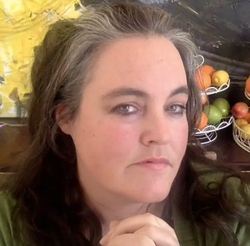 Blogger Caitlin Johnstone pointed to the hypocrisy of the U.S. government in that it is constantly engaging in foreign influence operations through outfits like the National Endowment for Democracy (NED), which was set up to help foment coups and color revolutions and advance U.S. information interests overtly in ways the CIA used to do covertly. According to Johnstone, when foreign governments try to stop this activity, the U.S. State Department invokes “free speech,” which it evidently cares little about in the case of the APSP.[1] FBI Pre-Dawn Raid and Its Antecedents As a prelude to the April 18 indictments, the FBI mounted a violent pre-dawn raid on Yeshitela’s home in the eastern part of St. Louis on July 29. Combat-clad agents equipped with automatic weapons smashed windows, broke down the door, and set off deadly military-grade flash-bang explosives (aka “concussion grenades”). The FBI made a big show of the raid before the entire community, occupying a neighbor’s yard and smashing down his door as well. Then they humiliated Yeshitela and his wife by forcing them outside at gunpoint, handcuffing them in front of their neighbors, and forcing them to wait as the FBI agents ransacked their home and removed computer equipment, APSP files, and other electronic devices. Omali Yeshitela stands before his home and speaks to supporters after FBI raid on July 29. [Source: stltoday.com] The July 29 spectacle was not Yeshitela’s first experience being targeted by police for his political activism. Working as an organizer with the Student Non-Violent Coordinating Committee (SNCC) in the 1960s when he went by Joe Waller, Yeshitela was arrested for tearing down a racist mural on the St. Petersburg, Florida, city hall building during a demonstration. Omali Yeshitela speaking before crowd in late 1960s. [Source: apspuhuru.org] When Yeshitela got out of prison, he organized a Black Power organization that became a victim of the FBI’s notorious counter-intelligence operation (COINTELPRO). Economic Self-Empowerment Inspired by the teachings of Malcolm X and the Black Panther Party, the APSP was officially founded in 1972 with the goal of liberating Black people from the scourge of white supremacy, colonialism and neo-colonialism in the U.S. and around the world. In the 1980s, the group set up successful African-American-controlled economic institutions such as the Uhuru Bakery Café in Oakland, and established the first tribunal demanding reparations for people of African descent. APSP furniture stores, which have been successful in Oakland and Philadelphia. [Source: apspuhuru.org] The group has also built basketball courts, and established a program to train African-American women as midwives to try to help offset high infant mortality rates in the northern part of St. Louis along with other job training programs to help former Black prisoners reintegrate into society. Building Relationships with Whomever We Want Akilé Anai is the APSP leader in St. Petersburg named in the indictment as having received Russian money when she ran unsuccessfully for the city council in 2019 on a reparations platform (she received 18% of the vote). Having her car seized during the FBI’s July 29 raid, she said that the APFP “can have relationships with whomever we want to,” and that the FBI’s actions were part of a “propaganda war being waged against Russia every single day throughout the news.” Akilé Anai [Source: uhurusolidarity.org] COINTELPRO Redux Ajamu Baraka, leader of the Black Alliance for Peace, tweeted after the July raid that Black radicals were being targeted again for “not falling in line with the U.S. imperial agenda on Ukraine.” Ajamu Baraka [Source: hamptonthink.org] Attorney and organizer Kamau Franklin stated: “This is a COINTELPRO operation, one meant to destroy Black organizations.” [Source: loveancestry.com] The COINTELPRO operation has included the issuance of sanctions on the APSP, which has had loans withheld by Regions Bank, been blocked by Facebook from doing crowd-funding, had more than $9,000 in donations frozen by GoFundMe, been blocked from processing payments by Stripe, and had $36,801 in funding revoked by the Pinellas County Commission that had previously been approved for a Black community radio station. [Source: handsoffuhuru.org] 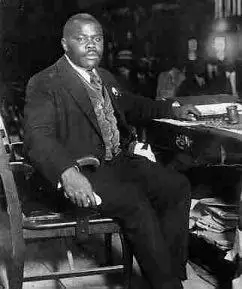 Noting that, during the raid, the police targeted him with a laser beam and that his wife was nearly knocked over by a drone, Yeshitela pointed to a plan in the 1970s, promoted by St. Louis city leaders such as future House Majority leader Richard Gephardt (1989-1995), that aimed to build up the southern part of St. Louis, where Whites lived, and demolish thousands of homes in the northern part of St. Louis, where the Blacks lived. The rehabilitation of decaying buildings there was considered “uneconomical.’” What was left of Black Wall Street after the Tulsa Race Massacre. [Source: edition.cnn.com] 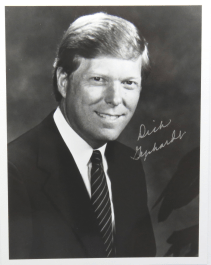 Besides shooting down Black youth like Michael Brown, the city has since taken over more and more of the Blacks’ land, Yeshitela said. They destroyed whole communities by driving up taxes to levels Blacks could not afford, building such monstrosities as the National Geospatial-Intelligence agency, a military installation involved in U.S. wars in Ukraine, Syria and elsewhere. The government today very clearly, Yeshitela noted, is trying to create fear in the White population by linking Blacks to the Russians so as to discredit their efforts to fight back. “By defining us as enemies of the state,” they could justify “seizing our communications and computers [of the APSP] and stealing forty years of our archives, which wipes out part of our history.” As If Black People Have No Agency Yeshitela posted a video on Facebook after the FBI’s raid in which he acknowledged meeting Ionov in 2015 in Moscow at a conference involving questions of self-determination and colonialism.  Yeshitela said that he supports Russia against Ukraine, as it was the U.S. which provoked the conflict by overthrowing the elected government of Ukraine which, since the coup in 2014, has “killed 13,000 to 14,000 Russians or Ukrainians who supported Russia in eastern Ukraine.” According to Yeshitela, it was hypocritical to condemn him for going to Russia when Whites were never condemned for going to Israel, which occupies Arab lands in historic Palestine. The APSP “supports Russia in Ukraine just like it supports the self-determination of the Palestinians; and the people of Nicaragua when they made a revolution against U.S. puppets there, and people fighting against oppression everywhere.” Yeshitela reminded his audience that “it was the U.S. government—and not the Russian government—which overthrew democratic governments in Iran and Guatemala in the 1950s, which mounted a coup against Hugo Chávez in Venezuela, and which killed Malcolm X and Martin Luther King, Jr., as well as 30 members of the Black Panther Party—including Fred Hampton—in one year alone.” The FBI’s July 29 raid, in Yeshitela’s view, was part of a renewed “ideological war by the U.S. government directed against Black people and Russia,” whose purpose was to discredit Black political activism and further U.S. support for its war by proxy against Russia in Ukraine. Yeshitela said that many Whites across the U.S. had now “come to support the demand for Black reparations,” which has “made people in power nervous,” so they “have to attack us and try to link the leaders of our movement to Russia.”  When “home-grown American Whites—having nothing to do with Russia—tried actively to overthrow the U.S. government on January 6 and threatened to kill the Vice President, the government did not respond by raiding the culprits’ homes with flash-bang grenades and drones like they did mine.” Most insulting, Yeshitela said, was the insinuation that Blacks could not lead their own struggle—that somehow, they had to turn to Russia and to “wait for Russia to tell us we’re oppressed,” especially when conditions in their community were so bad. As if Black people “have no agency or will of their own.”
AuthorJeremy Kuzmarov is Managing Editor of CovertAction Magazine. He is the author of four books on U.S. foreign policy, including Obama’s Unending Wars (Clarity Press, 2019) and The Russians Are Coming, Again, with John Marciano (Monthly Review Press, 2018). He can be reached at: [email protected]. This article is republished from CovertAction Magazine. Archives April 2023 4/26/2023 Gary Hicks—Mentor, revolutionary, and poet—¡Presente! By: Sharon Rose & Danny ShawRead NowOn Dec. 2, 2022, the international working-class movement lost an organizing and literary giant, Gary Graham Hicks. Comrades and friends gathered at the Marxist Library in Oakland, Calif., on Saturday, March 25, for a memorial to remember the diverse contributions of a beloved poet, theorist, and internationalist. We write this tribute so that future generations can draw from the deep well of Gary’s knowledge, verse, sharp-witted humor, and struggles. The Recruiter Black Panther Party member Gerald Smith, who hosted the tribute in Oakland, asked “Who will replace Gary Hicks?” Smith reminisced about the many back-and-forths over the decades about the question of Black America, about the struggle for Black self-determination. Black liberation and class struggle were the two legs Gary walked on. Who else could go into Newark armed with the Black Panther newspaper and interrupt Ron Karenga to remind him that “Marx was a Black man”? Smith went on to talk about the Panthers’ commitment to “pass it on” to the up-and-coming generations. One organization even experimented with the idea of only allowing members a vote if they attempted to bring young people to events.
He encouraged all of us who knew him to follow George Jackson’s immortal words: “Settle your quarrels, come together, understand the reality of our situation, understand that fascism is already here, that people are already dying who could be saved, that generations more will live poor butchered half-lives if you fail to act. Do what must be done, discover your humanity and your love in revolution.” Through it all, Gary worked to build the Communist Party. The Mentor Gary was our living encyclopedia. If he was around, young comrades were sure to have a notebook close by. His knowledge of German, Chinese, Cuban, Yiddishland, South African, and Irish history—and any global struggle—was seemingly boundless. We anticipated the next book recommendation Gary might pick off the shelves of his mind’s library. When I visited the international working class’s ancestral grounds at Sachsenhausen and Dachau, it was like he was there with me. Friday nights were a cause for celebration. Once, there was a new Malcolm biography that had dropped. And there we were at 3 AM, coast to coast, critically picking apart every page by Professor Marable or Les Payne. On another occasion, a Saturday night, Gary was plotting. He called me up well past midnight: “Hey how are we going to get this lousy, philistine scoundrel of a social democrat to join the p’aty?” (Remember he is from Roxbury and I am from Brockton.) Then, on a Sunday night, a group of us were scheduled to finish the final chapter of Black Reconstruction. Every word rose to the occasion. It felt like the 7th game of a playoff series between the Sox and the Yankees. I teased Gary that he got younger every day because he never stopped. The paratransit in San Francisco, a socialist gain fought and won by the people, brought him everywhere and anywhere around town. And when he wasn’t here, we knew he was on a train headed somewhere—to a Progressive Lawyers Guild conference in California, a folk music event in Oregon, a poetry reading in Cambridge, or the Left Forum in New York City. When I called him on the phone, I always anticipated which of the 50 states he might be in this time—flipping off every state trooper as he went. The student of Lenin that he was, I jested that this was his sealed train. In 2020, he introduced me to give a talk at the Marxist Library entitled “Capitalism + Dope = Genocide,” a Panther formulation—and how it was relevant five decades later. Boy was I proud; the student had become the teacher. A brilliant wordsmith, a magical story teller, and a perennial ballbreaker, Gary gravitated gracefully between the gravest and most humorous of topics. Whenever he was around his comrades, his eyes lit up and he locked in on the most pressing international topics of the day. He often answered the phone by saying “This is Murphy’s Poolhall. Eight Ball speaking.” Always principled, he put many backwa’d workers in their place if they were guilty of any act of racism or sexism. He could hug you, but if he had to, he could stand you down, too. He knew the primary contradiction that existed and who the real enemy was but was never shy to check any of us, “on our bullshit.” One young communist, Drew King, picked up the torch and recited the following tribute on March 25th: Gary Hicks Immortal thinker Fearless philosopher History’s restless wanderer Proud Black Bolshevik Lenin’s native son Uncle Ho of Roxbury Southie’s resident Marxist-Leninist Berkeley’s Berlin Wall that will never fall Intellectual giant Gary, Your mind was my portal through history For 17 years, I traversed the infinite shelves of your mind’s cosmic library As you showed me the ways of the force You took me on tours through antiquity, time and space All of pharaoh’s armies never stood a chance against your cunning wit You teach us that the struggle for people’s power is the struggle for memory and against forgetting And since I first asked you what time it was 17 years ago You slowly taught me to realize that it is the same time that it was when those two young men in London put out that clarion call for the workers of the world to unite, 175 years ago I swear on my soul, Gary, they will unite after all and we will win The Revolutionary Gary was a former political prisoner. In March 1966, just before his 20th birthday, the Roxbury native joined fellow war resisters in burning his draft card on the steps of a Boston courthouse in opposition to the U.S. war in Indochina. These pioneers, shoulder to shoulder with Muhammed Ali, were some of the first in the movement that soon shook the country as thousands followed. On that day, the group was beaten up by a crowd of mostly high school students from South Boston. Still, he never expressed any personal bitterness towards workers robbed from our ranks by fascism. Because of his resistance to the genocidal war of aggression against Vietnam, the U.S. government sentenced him to three years in Lewisville penitentiary. There were many chapters and addendums to these stories that could only be understood as poetic license. But they could never cage you, Gary. Born Again Red Fundamental Marx He wrote it. And I read it. And that settles it. When he got out, Gary was determined to pursue higher education, which he did at Penn State, Brown University, and Antioch College, ultimately receiving his Master’s Degree from UMass, Boston in “American Studies.” He spent the rest of his life devoted to the fight for equality and for the interests of the international working class. The coup in Chile in ’73, the Christmas bombing of Panama, the continuation of Communist leadership in China, Gary was on it. From any hospital or nursing home bed, he was getting on the phone to check in with his political fellow travelers. Gary was in the streets putting his training to good use. He was involved in the housing rights movement, beginning in Boston with the Massachusetts Alliance of HUD Tenants, in which he played a key organizing role. Tenants of the last place he lived—Redwood Gardens in Berkeley—benefited from Gary’s knowledge and experience standing up for their rights. No human suffering or triumph was foreign to him. The Scholar If there was a new book out by a leftist author, Gary raced to pick it up. There was nothing he enjoyed more than a good crisp read. He led and participated in many reading groups. Among other classics, we read The Seventh Cross together. Line by line, page by page, he broke down the ins and outs of resistance to the Nazis. He read entire books out loud with study groups, no matter how big or small. W.E.B. Du Bois, Rosa Luxemburg, Eric Hobsbawm, and E.P. Thompson were but a few of his ideological forefathers and foremothers. Students of the movement visited him in the hospital to keep study groups going. When he called, we gathered around the phone. He approached life with a love for it. As his comrade Juan Lopez remembers, he never sought fame or accolades. A true dialectician. A revolutionary optimist who found the silver lining everywhere. A wit sharp like a whip with prose, rhythmic like Amiri Baraka’s Blues-words. A biting sense of humor and a dead seriousness that reminded you no matter what personal challenges you always keep fighting. Comrades remembered: “You can’t talk about Gary without talking about books. His own memorial program was printed on a red bookmark. He was a living example for young communists of Lenin’s quote, “Without revolutionary theory there can be no revolutionary movement.” The Poet His poetry—especially his books, Itching for Combat and A Pen is Like a Piece, You Pick it Up, You Use It—reflected what he was thinking and feeling about political struggles.
Lincoln Bergman, Gary’s close friend from the Revolutionary Poets Brigade, remembered that despite any personal health issues, Gary’s “pan-socio political brilliance was undimmed.” At the memorial, Bergman shared “45 Years Later,” one of Gary’s poems that went: Look at these kids on tanks of victory My Peeps Children of Uncle Ho My hero Today I am 74 The kids on the tanks Roughly my age The kids who I Inmate 33602-133 Prayed for victory Every day of my imprisonment Yes They won And we won, too. The final goodbyes came in the form of affirmations of a radiant future. You brought us together, Gary. We laughed. We cried. We told stories. We listened to poetry. Just as you would have wanted it. Farewell, kindred spirit. Farewell, comrade. These tears are made of knives and machetes. Aimee Cesaire’s redemption. Fanon’s baptism. Algeria’s boomerang. Vietnamese tanks roll forward. We will end as Gary lived, poetically, with the words of Langston Hughes: I loved my friend. He went away from me. There’s nothing more to say. The poem ends, Soft as it began-- I loved my friend. We hope you appreciated this article. Before you go, please support great working-class and pro-people journalism by donating to People’s World. AuthorSharon Rose This article was republished from Peoples World. Archives April 2023 Introduction The Communist Party of the United States (CPUSA) celebrated the 100th anniversary of its founding in 2019 and signs would appear to augur well for the organization in the coming years. Recently, the party discussed running candidates for office.1 Membership numbers are rising,2 and the party credits itself and its allies for the “broad front” that defeated Donald Trump in the 2020 presidential election.3 Having abandoned the Democratic Socialists of America, an organization in a crisis of political direction, and gazed upon the desolate expanse that is revolutionary socialism in the United States, some comrades have turned away from the red rose toward the tried and true hammer, sickle, and gear. Unfortunately, these comrades will not have escaped the politics of class collaborationism by fleeing DSA and may find themselves in even hotter water. The CPUSA marked its centenary with an updated version of the party platform: “The Road to Socialism USA.”5 Reading through the document is daunting. An astounding 61-pages long, it meanders across ten disorganized primary sections and dozens of subsections. Boundaries are porous: the introduction contains a conclusion, ideas repeat, and lists of occasionally intriguing demands are relegated to sidebars. Friedrich Engels’ critique of the German Social Democratic Party’s Erfurt Programme - “The fear that a short, pointed exposition would not be intelligible enough, has caused explanations to be added, which make it verbose and drawn out”6 - applies just as accurately to the CPUSA. These comrades, hoping to attract as large an audience as possible, have thrown everything but the kitchen sink toward the proverbial wall in a desperate attempt to make something stick. Asked to accept the program, one struggles for solid footing. How can one determine agreement with such an incomprehensible document? But determination brings rewards. Cutting through girth and clearing away the tired abstractions (“injustice,”7 “a better world,”8 “the 1%,”9 “epic struggles,”10 “the greed of the few,”11 “fascism”12) reveals two fundamental flaws: a commitment to the decades-old People’s Front policy of alliances with anything left of the “extreme right”13 and dedication to the Constitution and the parameters of the capitalist state. In other words, socialism with American characteristics. What follows is an elaboration on these two flaws. While the comrades in the CPUSA may be motivated by a genuine desire to fight for the interests of the working class, their program provides no path forward and opens the door to opportunistic zigzags and the internal rule of bureaucrats. Continuing the People’s FrontThis is far from an exhaustive chronicle of the ups and downs of the Communist Party (a job that E. J. Hobsbawm described as presenting unique difficulties).14 Rather, reading the CPUSA program allows one to reflect on the rise and fall of American Communism and the world socialist movement more generally. At its height, the Party contributed several victories to the class struggle in the United States. It carried out exceptional work in organizing the unemployed during the Great Depression15 and defended the Scottsboro Boys when the NAACP refused.16 The Party’s victories in states such as Alabama17 and New York18 are well-documented. The United Front strategy - how the party relates to the political institutions of the capitalist state to win members and strengthen the fighting power of the working class - began during a period of global defeat for communism.19 Having emerged victorious from the Russian Civil War, the newly formed Third International expected a quick succession of civil wars and Communist victories across Europe. But defeats in Germany, Poland, and Hungary augured ill. The working masses had not rallied behind the banner of the Communist Parties, and the Bolsheviks were left isolated in Russia. After fending off his ultra-left detractors, Lenin oversaw the entry of the Communist Parties into alliances with non-Communist working class political forces (including Social Democratic parties) under the explicit condition of retaining organizational independence and freedom to criticize the reformist leadership. In theory, the United Front was sound. Principled alliances with reformist parties were scrapped when Stalin came to power. The Communists had zigged right, only to zag left during the Third Period of 1928 to 1933. The Peoples’ Front (America’s version of the Popular Front) began a final lurch back to the right in 1935 in the context of impending war and the rise of German Nazism. Ben Rose described the People’s Front as a “gradual shift towards a search for alliances and influence with the leadership of organizations believed to be instrumental in fighting domestic and international fascism, as well as those capable of pressuring the Roosevelt administration.”20 Tactical alliances with a section of the capitalist class subordinated working class independence to the goals of capitalists. The goal of socialism in America was abandoned, and in 1937 the Party dropped its slogan, “Toward a Soviet America.” The day-to-day practice of fighting for reforms submerged the goal of a classless society, and socialism with American characteristics - socialism, after all, being just as American as baseball and apple pie - became the norm. As Mike Macnair explains: “‘Official communist’ and Maoist parties committed themselves to rejection of the most elementary Marxist principle - the independent political organization and representation of the working class - in favor of ‘democratic’ coalitions which repeat the projects Marx and Engels fought against - or, worse, in favor of coalitions for ‘national independence’, which subordinate the working class to the party of order.”21 The call for a People’s Front continues today. In the name of fighting the extreme right - a nefarious entity that is “inadequate and incompetent”22 and “backward”23 one moment, and “fascist”24 the next - the program urges unity with all progressive forces in “defeating the extreme right’s implicit and explicit drive toward fascism.”25 Divisions within the capitalist class “contain opportunities for working-class and progressive forces. On some issues, the more moderate, more realistic sections of the capitalist class and their political operatives move parallel to the people’s movements, as important though partial and temporary allies. They can be pressured to adopt a more progressive stance by the strength of the people’s movements and mass sentiment.”26 The program encourages alliances with the Democratic Party because it is “not identical”27 with the Republican Party. The Democratic Party’s history - the “main vehicle used by African American and Latino communities to gain representation, as well as the main mechanism used to elect labor, progressive, and even Left activists to public office…”28 - supposedly demonstrates differences with its elephant brother. Furthermore, alleged rifts within the Party can be used to workers’ advantage. One reads: “[T]here exists an internal struggle within the Democratic Party among centrist forces who collaborate with the right wing, centrist forces opposed to the right wing, and more progressive, even socialist, trends.”29 Any desire to build a mass party must bow to the existing facts of the power of the capitalist class and the Constitutional regime. With Friends Like These… Calls for an alliance with the Democratic Party and the NGO complex against the far right are equivalent to asking the fox to guard the hen house: the fox eats its plump ward every time. Such proposals are the equivalent of trusting the bourgeoisie of the French Third Republic to eradicate the threat of a clerical-monarchical Thermidorian reaction. During the Third Republic, the proletariat was lured away from independent politics by liberals who incessantly hollered about a grave threat to the Republic as justification for uniting under one banner. With danger knocking at the door, this was no time to wage the class struggle. Karl Kautsky explained the reality behind the facade: “...the bourgeois liberal politicians have every interest in the struggle against the Church, but by no means in triumphing over it. They can only count on an alliance of the proletariat as long as this struggle continues.”30 Ultimately, a definitive victory is illusory. The imperative to unite against a bigger-bad never ends. How ironic that the Communist Party now advocates politics far to the right of those espoused by Second International Marxism’s famous pope-turned-renegade during his period as a revolutionary thinker. The Democratic Party is more concerned with maintaining the rule of law than prosecuting an effective campaign against an increasingly right-wing and authoritarian Republican Party and its hangers-on. See, for example, their impotent attempt to understand and resolve the events of January 6th, 2022, compared to their focus on the chauvinistic conspiracy theory of Russiagate. The state’s repressive apparatus is far more concerned with countering perceived threats from the left than from the right. The bourgeois state fundamentally cannot grapple with the real social issues (poverty and economic precarity, first and foremost) upon which the seeds of far-right extremism germinate. Without class independence, the proletariat stays moored to the dock of bourgeois politics. Worse, if the working class does not create independent organizations of political power, it will be unable to stop a real fascist threat. One finds a terrifying historical specter in Chile during the Allende period when the Popular Unity government disarmed its supporters in the face of an impending coup. When the time came, the working class could not defend itself or the Allende government from Pinochet’s forces. The CPUSA program describes the all-people's-front as an “essential strategy for this historical period, not just a temporary tactic.”31 Socialism is thus always something for the distant future, a goal to pursue once the present task is complete. Yet, like Sisyphus and his boulder, the task is never concluded. An all-people’s-front will not permanently defeat the far right. Only a socialist republic can eliminate the excrement produced by capitalism in decline, and only a socialist political party can make a new republic a reality. Bill of Rights Socialism and Constitutional Cultism The Constitution is an eminently undemocratic document that stands in the way of working-class political rule. It creates an entire “political playing field”32 that sucks in well-intentioned reformers and keeps them busy fiddling over minutia. The Constitution cannot be ignored or corralled through tricks or slights of hand. Yet, the CPUSA program ducks the issue by proposing a “Peoples’ Bill of Rights” and explaining that “Once the power of the corporations is broken, the vast majority of the country can use the Constitution, the Bill of Rights, a Socialist Bill of Rights, and local governments to build real democracy and equality.”33 The Party’s belief that a “fundamentally new economic system” can be built on the existing Constitution is explicit; it is a hallowed document equivalent to the sacred tablets of the Ten Commandments. This devotion is apparent when they describe a speculative people’s Bill of Rights as “guaranteed” upon being “enshrined” in the Constitution.34 The insistence on maintaining the existing state apparatus is an abdication of the necessity of the dictatorship of the proletariat. Once in power, the party must implement the minimum demands to upend and transform the existing state apparatus into a democratic republic - the state form of the dictatorship of the proletariat. From this position, the working class can begin the transition to communism. The CPUSA comrades are correct that the fullest expression of democracy is in the interests of the working class. Democracy is the light and air needed by the proletariat to wage an effective struggle. However, the extension of democracy does not cease at the doors of the White House, the shrine of the Constitution, the halls of the Supreme Court, or the pentagonal grounds of the Department of Defense. The indirectly elected president holds an ever-increasing amount of power and directs the military of the world’s foremost imperial power. The Constitution (designed to guard against change) enshrines the separation of powers to hedge against the boogeyman of popular will in the House of Representatives (the only body with a nominal claim to popular representation) and slows down the process of legislation by directly elected representatives. The Supreme Court is not elected by universal and direct suffrage and works primarily to defend the Constitution. The recent overturning of Roe v. Wade also led many people to question the Court’s ability to take up lower court rulings. Finally, the Department of Defense provides the physical force necessary to safeguard the sanctity of private property and bourgeois law and order. The CPUSA’s loyalty to the Constitution leads them to abandon a revolutionary position. The demand for a Socialist Bill of Rights leaves the bourgeois state unscathed; in fact, it strengthens the state. So long as the existing constitutional order remains intact, demands for “liberty, and equality; free quality health care and education; living-wage jobs and decent housing; and a healthy environment”35 are just reforms. While the revolutionary party does include reforms as part of its demands, they exist as a means to create a democratic republic. A set of demands that leave the existing state intact serves only as a screen to hide bourgeois rule. The party plucks the fig leaf from absolutism only to become “oneself a screen for its nakedness.”36 In trying to adapt Marxist-Leninism to the United States, the comrades absorbed all the elements of the constitutional regime and dropped most of the Marxism they carried. What little remains lies mutilated beyond recognition. The program’s assurance that “socialism in the United States will have distinctive characteristics because it will emerge from our unique political culture”37 is just another superficial justification for reformism. Minimum demands must strengthen the working class while weakening the state. Such demands include a single legislative assembly elected by proportional representation; the abolition of the independent presidency and the Supreme Court's right of judicial review; the election of judges and other state officials; the expansion of jury trials and state-funded legal services; the unrestricted right of free speech; the abolition of copyright laws and monopolies of knowledge; and the abolition of police and standing army in favor of a people's militia characterized by universal training and service, with democratic rights for its members. The process could begin with organizing a nationwide election via direct, universal, and equal suffrage for an assembly tasked with writing a new Constitution for popular consideration rather than the radically minoritarian process enshrined in Article 5 of the existing Constitution.38 Enacted in full, these demands smash the existing order and create a democratic republic. Monopolies and Stages Like a Matryoshka doll that has gone west, the CPUSA program contains multiple programs corresponding to different stages on an imagined path to socialism. The first stage is the formation of a People’s Front to defeat the extreme right. After eliminating the first threat, the People’s Front will grow in strength, evolve into an anti-monopoly coalition, and turn its attention toward “the multinationals” (the nationalist assumption being that ‘genuinely American’ capitalists would join the fight). The defeat of the multinationals will signal the beginning of a new stage in which the anti-monopoly coalition will build proletarian consciousness and progress toward socialism. Multiple coalitions will merge with the Communist Party to create a force capable of pushing through the Socialist Bill of Rights. At some point, communism will emerge. To the untrained eye, the discussion of monopolies is a bizarre aspect of an already strange program. Yet, references to the despotic power of monopolies - along with constant references to “the people” - have roots in older forms of American populism that pitted “the people'' versus “the elites.” The affinity towards populist rhetoric is explained by the reformist character of the CPUSA and its desire to create cross-class alliances in which, ultimately, workers’ interests play second fiddle. In addition, the program’s conception of revolution beginning only after defeating a series of foes follows the stagist theory of history often, though incorrectly, attributed to orthodox Marxism.38 In decades past, the stagist model was used to justify the fundamental impossibility of communism in one country. Today, it appears in the CPUSA’s program as a justification for continued reformism. Road to Nowhere The Communist Party’s program contains noble sentiments. We do not doubt these comrades' desire to realize a “system in which working-class people control their own lives and destinies.”39 Socialism is the fullest extension of democracy. The social republic overcomes the division between social and political existence. The final goal remains a society in which everyone contributes what they can and receives what they need to actualize their unique potential. The CPUSA comrades are correct in declaring the need for a revolutionary party. They correctly state that victory is not abstract: it “relies not on slogans, gimmicks, or conspiracies but rather on developing the understanding of millions cultivated in hard struggles, an understanding that grows into full class and socialist consciousness.”40 Yet, their program is brimming with slogans. Take the assertion that the revolutionary party must be “dedicated to the interests of the whole class, dedicated to the long-term vision necessary for winning fundamental change.”41 An intrepid reader finishes the program without understanding the meaning of fundamental change. After so many pages, the phrase remains a floating signifier capable of the most opportunistic interpretations. This reversion to obscurity is a long way away from the concluding paragraph of the Socialist Party of America’s 1912 program: “Such measures of relief as we may be able to force from capitalism are but a preparation of the workers to seize the whole powers of government, in order that they may thereby lay hold of the whole system of socialized industry and thus come to their rightful inheritance.”42 As a party founded by the principled Left-Wing of the SPA and once animated by the fire of the Bolshevik Revolution, the CPUSA has fallen quite a long way. The program is the loadstone of a socialist political party. A good program presents the demands necessary for taking power and creating a democratic republic (the minimum program) to initiate a transition to the ultimate goal of communism (the maximum program). Means and ends are united and never lose sight of each other. Demands are expansive though concrete, and resonate with the condition of all oppressed minority groups. Furthermore, a good program is clear, concise, and memorable. It leaves elaboration to party propagandists and trusts in the ability of the masses to decode an unfamiliar term and infer what is left unsaid. The latest CPUSA program is a mess. Quantity does not transform into quality; in this case, the former works against the latter. The working class will not find a road to power within its numerous pages. Its confusing proposals will lead only to the underwhelming and all-too-familiar dead end of class collaboration within the existing constitutional order. Today, the Communist Party USA rests upon a mixed historical legacy marked by moments in which it acted as a vanguard of the working class in the highest sense of the phrase, as well as a long period in which it continues to be plagued by the lowest possible opportunism. In criticizing its present class collaborationist program, we hope to provide a resource to those in the Communist Party chafing under this orientation. As in the Democratic Socialists of America, the time has come for genuine communists to rebel against the dominant opportunism of the largest organizations of the working class political movement in the United States. We encourage Marxists in the Communist Party USA to begin openly discussing the course and future of their party and the entire socialist movement. The pages of Cosmonaut are open to them, and replies from defenders of the Communist Party’s current orientation are welcome as well - if only to train the arguments of their critics. May the rebels prevail! References 1. https://www.cpusa.org/article/its-time-to-run-candidates-a-call-for-discussion-and-action/ 2. https://www.cpusa.org/article/democracy-cannot-be-sacrificed-for-the-profits-of-the-1/ 3. https://www.cpusa.org/article/political-action-commissions-goals-for-2023/ 4. See Lenin’s comments on the relationship between anarchism and opportunism in chapter four of “Left Wing Communism: an Infantile Disorder.” https://www.marxists.org/archive/lenin/works/1920/lwc/ch04.htm 5. https://cpusa.org/party_info/party-program/ 6. Friedrich Engels. A Critique of the Draft Social Democratic Program of 1891. https://marxists.architexturez.net/archive/marx/works/1891/06/29.htm 7. https://cpusa.org/party_info/party-program/ p.11 8. Ibid. p.2 9. Ibid. p.2 10. Ibid. p.60 11. Ibid. p.1 12. Ibid. p.33 13. Ibid. p.3 14. E. J. Hobsbawm, Revolutionaries, p.6: “The problem of those who write the history of communist parties is therefore unusually difficult. They must recapture the unique and, among secular movements, unprecedented temper of bolshevism, equally remote from the liberalism of most historians and the permissive and self-indulgent activism of most contemporary ultras. There is no understanding it without a grasp of that sense of total devotion which made the party in Auschwitz make its members pay their dues in cigarettes (inconceivably precious and almost impossible to obtain in an extermination camp), which made the cadres accept the order not merely to kill Germans in occupied Paris, but first to acquire, individually, the arms to do so, and which made it virtually unthinkable for them to refuse to return to Moscow even to certain imprisonment or death. There is no understanding either the achievements or the perversions of bolshevism without this, and both have been monumental; and certainly no understanding of the extraordinary success of communism as a system of education for political work.” 15. https://www.marxists.org/history/erol/periodicals/theoretical-review/north.htm 16.https://jacobin.com/2020/04/alabama-communist-party-usa-scottsboro-history 17. Kelley, Robin G.D. Hammer and Hoe: Alabama Communists during the Great Depression. Chapel Hill: The University of North Carolina Press, 2015. 18. Naison, Mark D. Communists in Harlem During the Depression. Urbana: University of Illinois Press, 1983. 19. For a more in-depth discussion on the united front, see chapter six of Mike Macnairs’ “Revolutionary Strategy.” http://ouleft.org/wp-content/uploads/Macnair-Revolutionary-Strategy.pdf 20. https://www.marxists.org/history/erol/ncm-7/rose-cio.htm#fw01 21. https://weeklyworker.co.uk/worker/863/propaganda-and-agitation/ 22. https://cpusa.org/party_info/party-program/ p.21 23. Ibid. p.3 24. Ibid. p.4 25. Ibid. p.41 26. Ibid. p.41 27. Ibid. p.41 28. Ibid. p.41 29. Ibid. p.41 30. For Karl Kautsky’s description of the various tricks used against the working class in the French Third Republic, see his “The Republican and Social Democracy in France.” 31. https://cpusa.org/party_info/party-program/ p.35 32. https://cosmonautmag.com/2020/09/us-constitution-hiding-in-plain-sight/ 33. https://cpusa.org/party_info/party-program/ p.54 34.https://www.cpusa.org/interact_cpusa/does-cpusa-advocate-the-violent-overthrow-of-the-american-government/ 35. https://cpusa.org/party_info/party-program/ p.52 36. Friedrich Engels. A Critique of the Draft Social Democratic Program of 1891. https://marxists.architexturez.net/archive/marx/works/1891/06/29.htm 37. https://cpusa.org/party_info/party-program/ p.53 38. For a detailed explanation of the logistics behind organizing a democratic vote for a new U.S. Constitution, see Johan Martell’s ‘Fight the Constitution! Demand a New Republic!’ https://cosmonautmag.com/2021/03/fight-the-constitution-demand-a-new-republic/ 39. For Jack Conrad’s discussion of the sordid historiography of stagism, see https://weeklyworker.co.uk/worker/1417/memory-wars/#fnref5 40. https://cpusa.org/party_info/party-program/ p.2 41. Ibid. p.56 42. Ibid. p.56 43. Socialist Platform 1912. http://sageamericanhistory.net/progressive/docs/SocialistPlat1912.htm *The views expressed in this article do not necessarily represent those of the Midwestern Marx Institute or its editors. Our Institute values having an open space for dialogue between Marxist forces seeking to advance the struggle of the working class. AuthorLuke Pickrell and Myra Janis are members of the Marxist Unity Group (MUG), a faction within the Democratic Socialists of America dedicated to building class independence and programmatic unity. The authors hope to engage CPUSA comrades and wider sections of the left in a discussion about building party programs capable of charting a strategic path forward for socialists. Archives March 2023 |
Details
Archives
July 2024
Categories
All
|
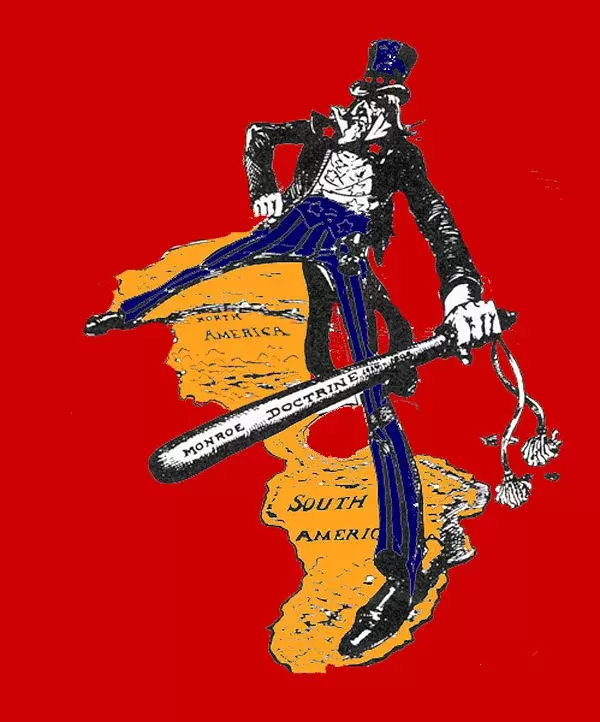


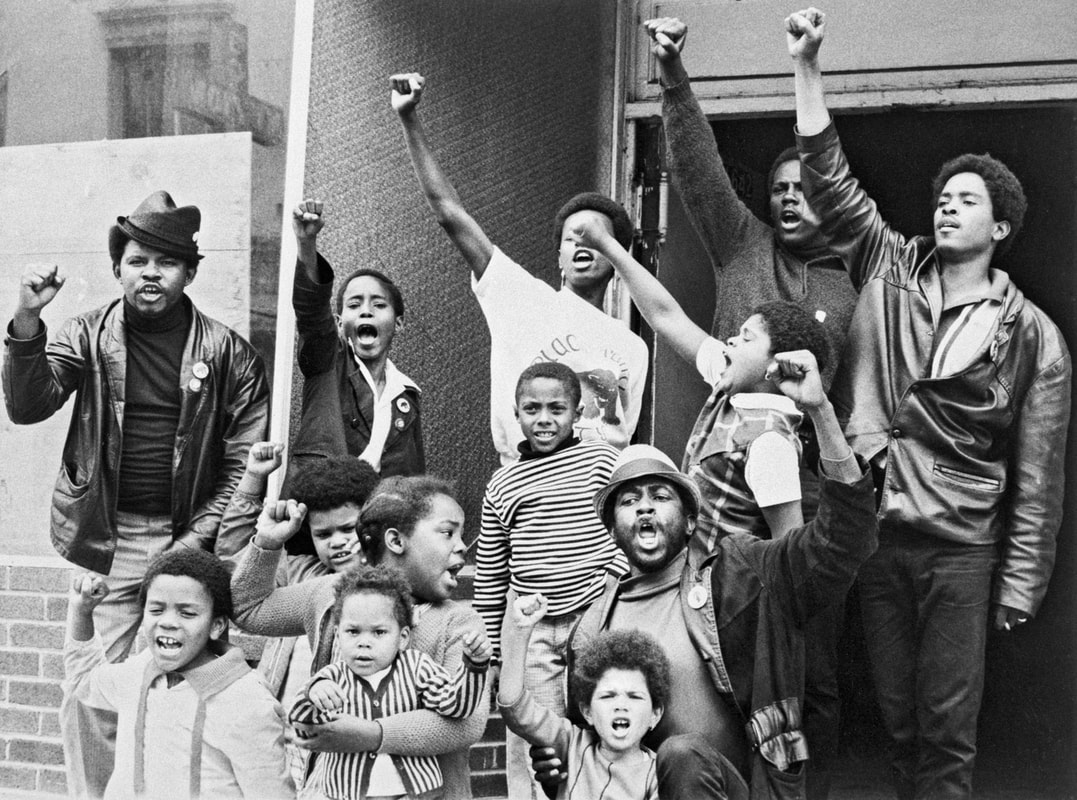
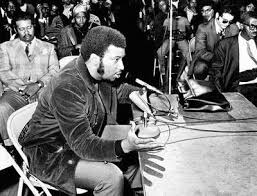
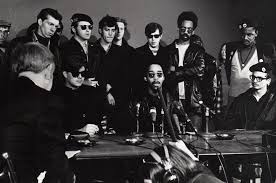
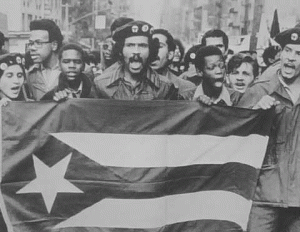


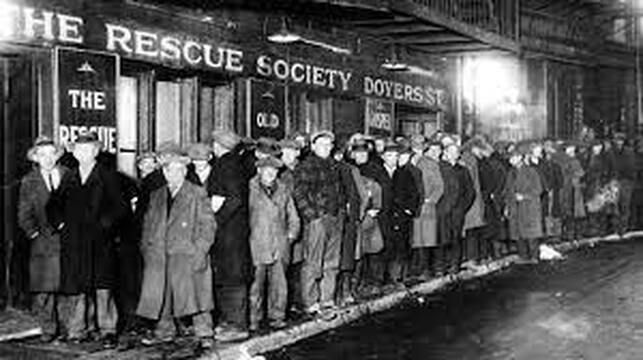
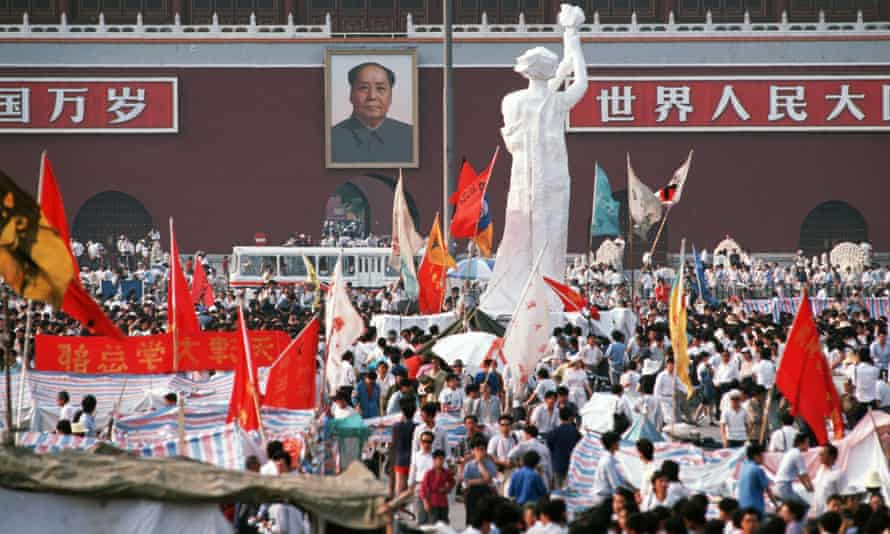
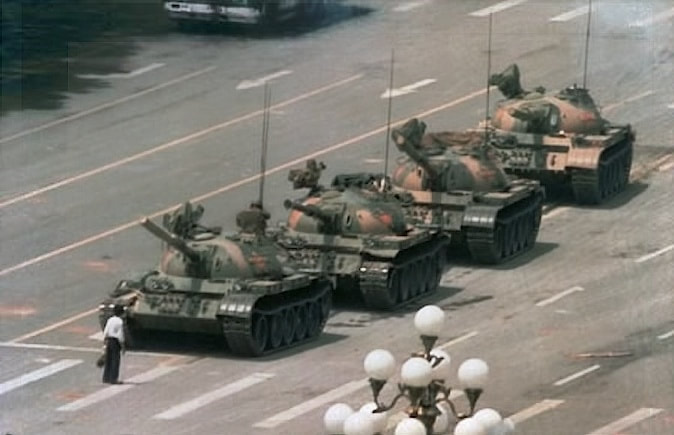
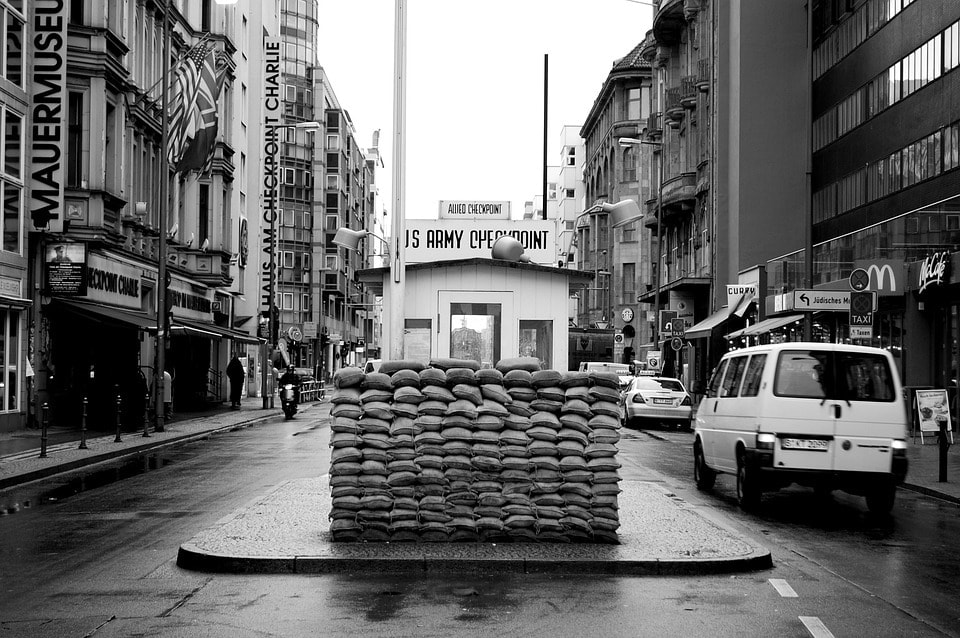
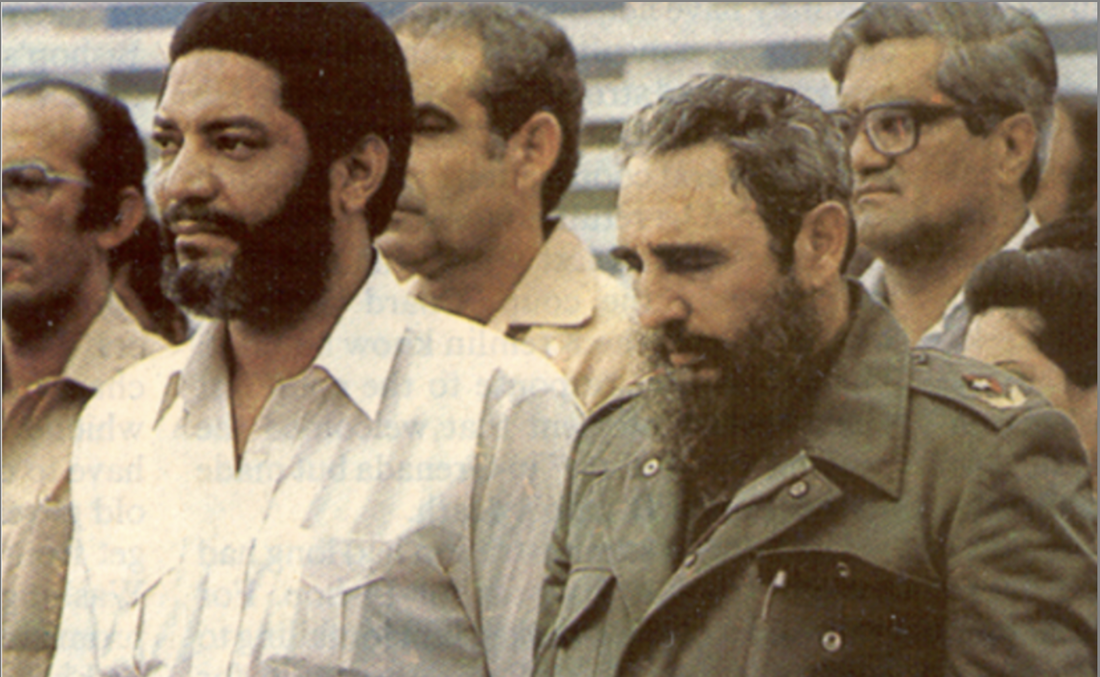
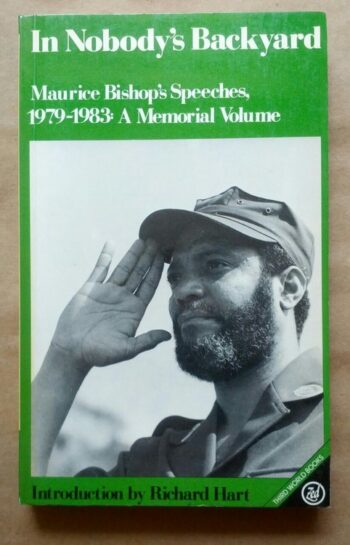
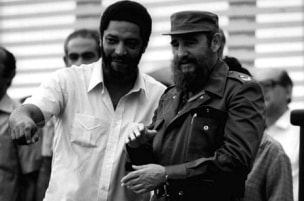

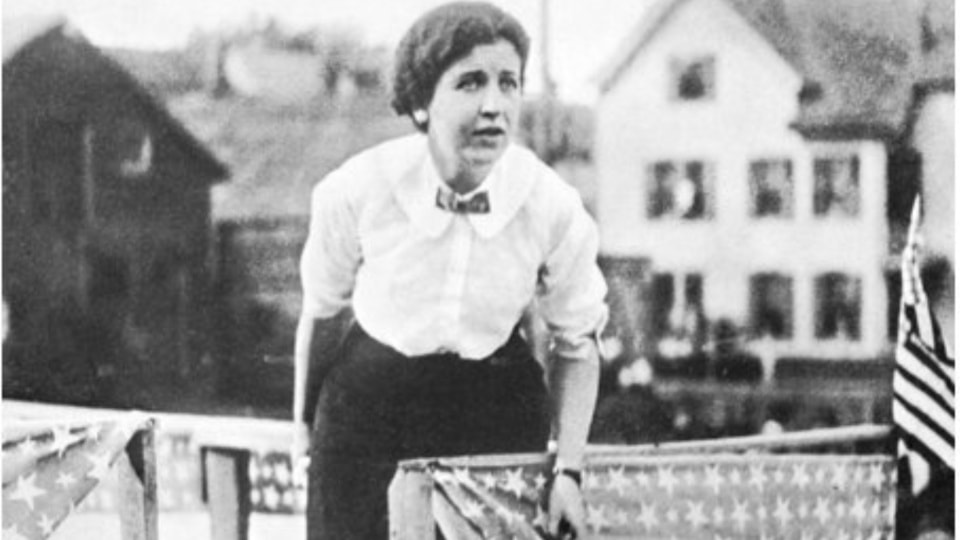
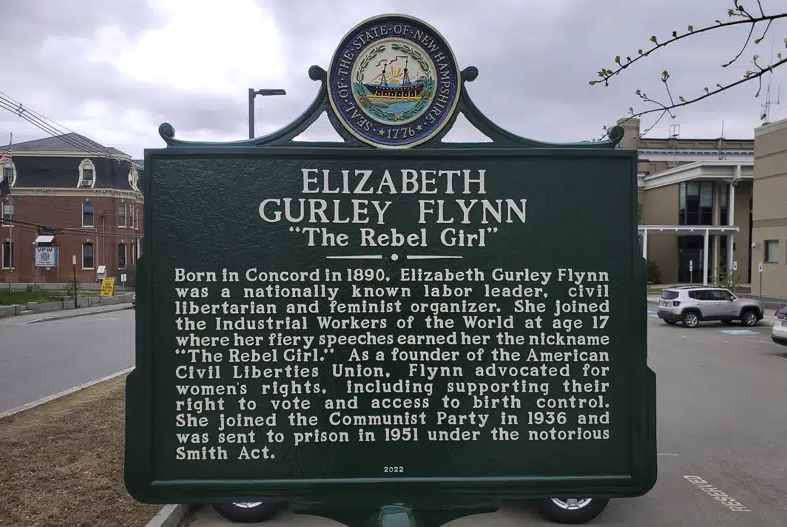

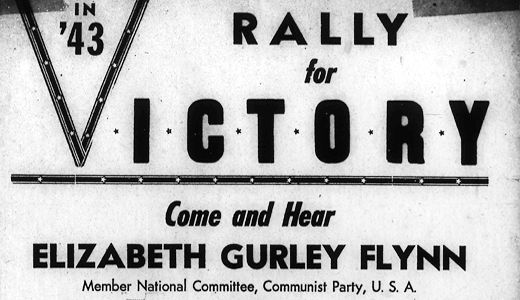
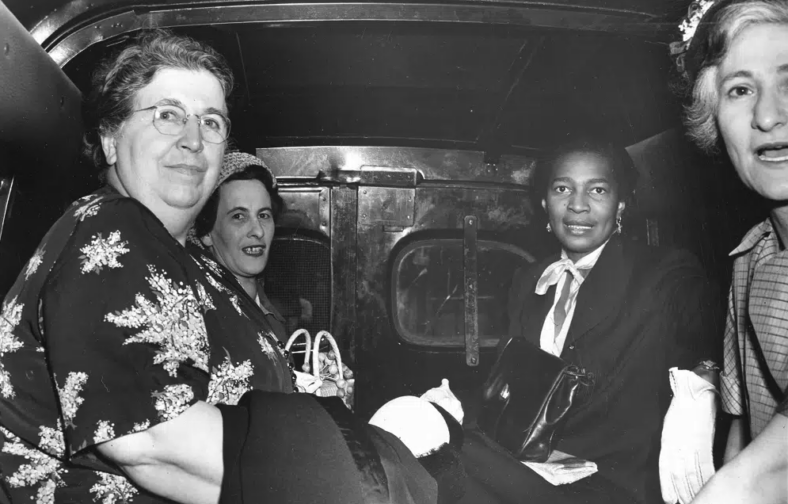
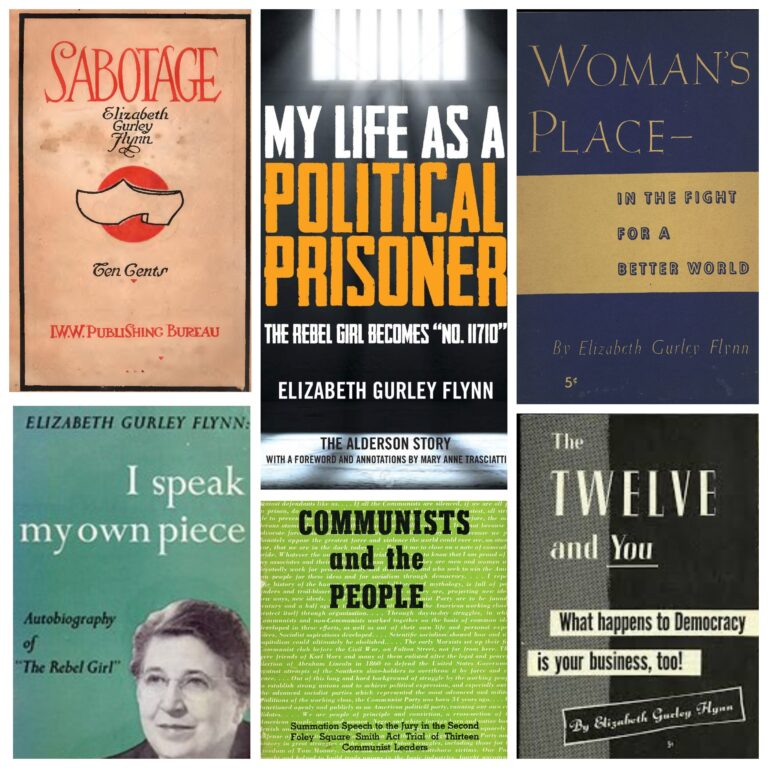
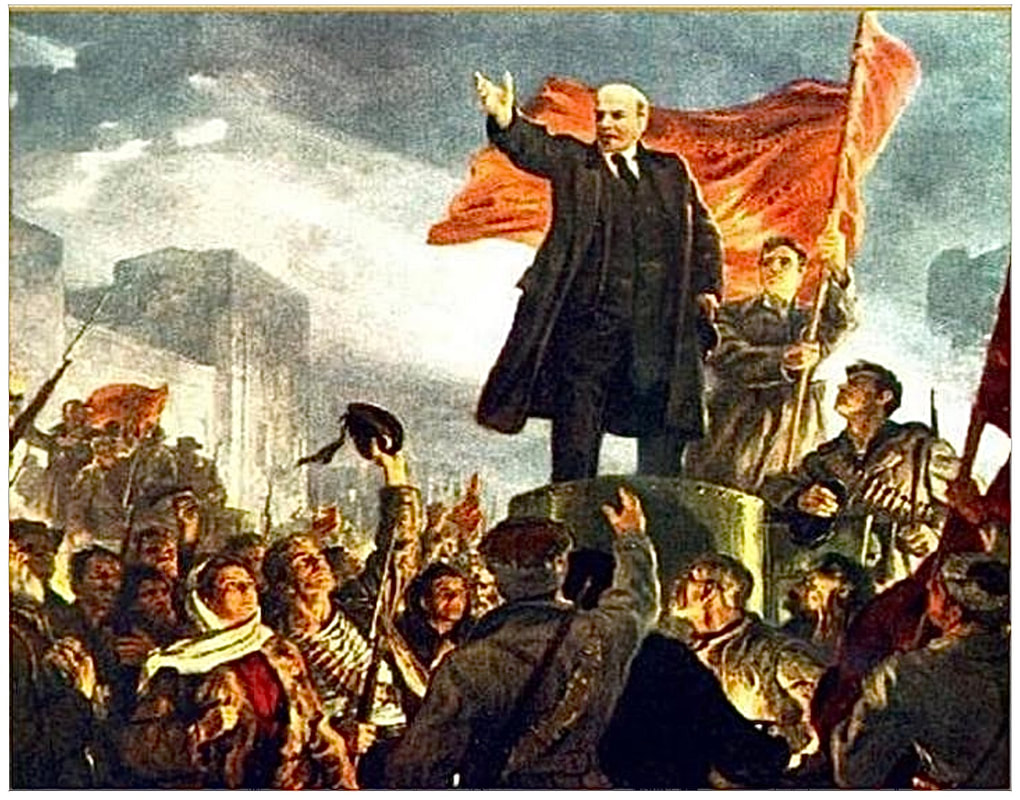
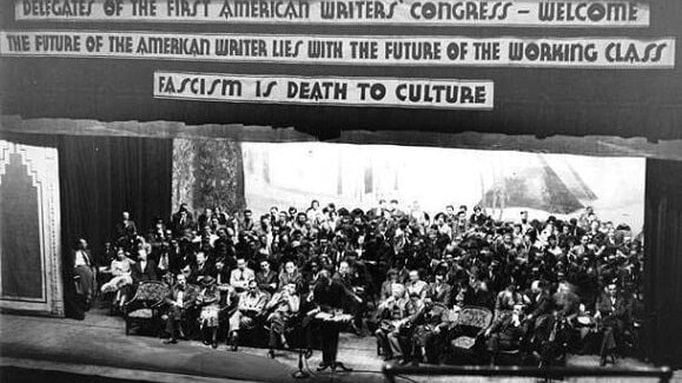
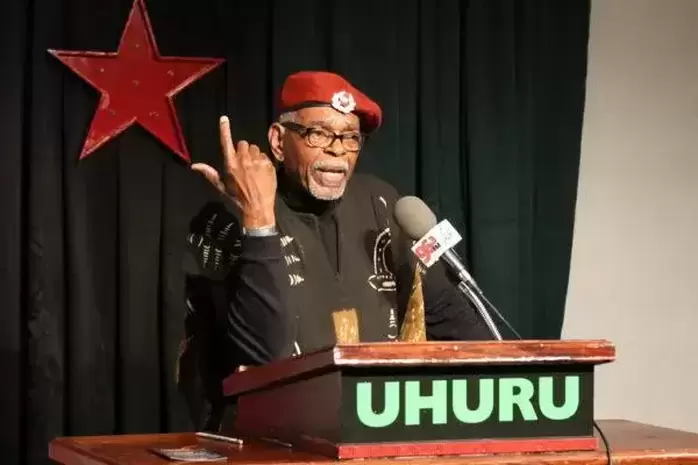


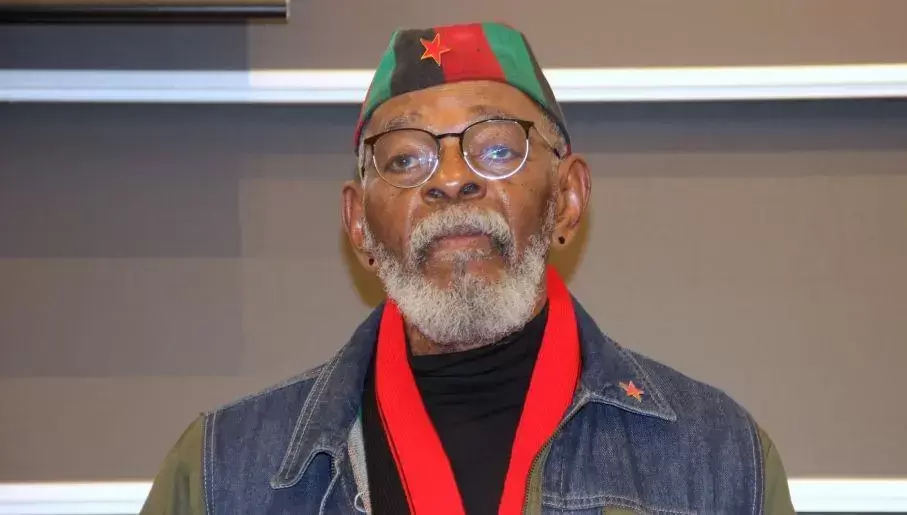
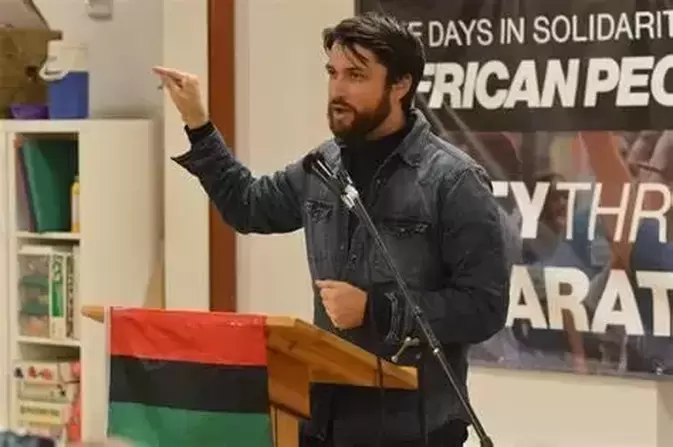
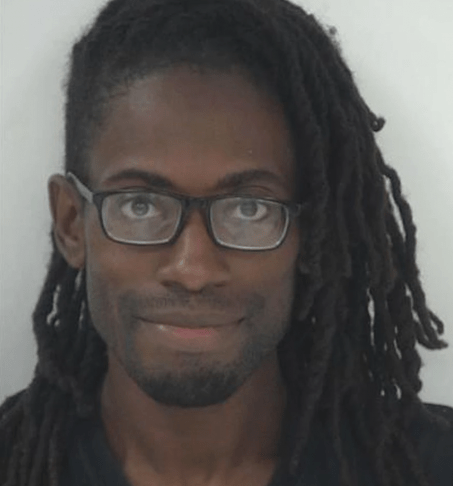


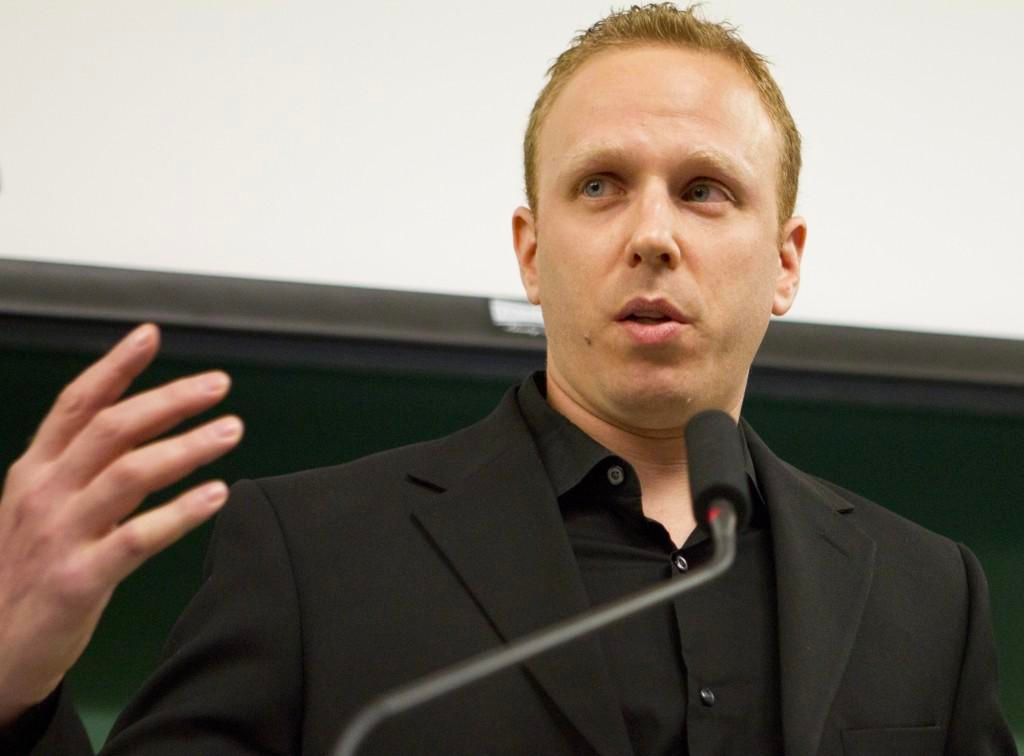
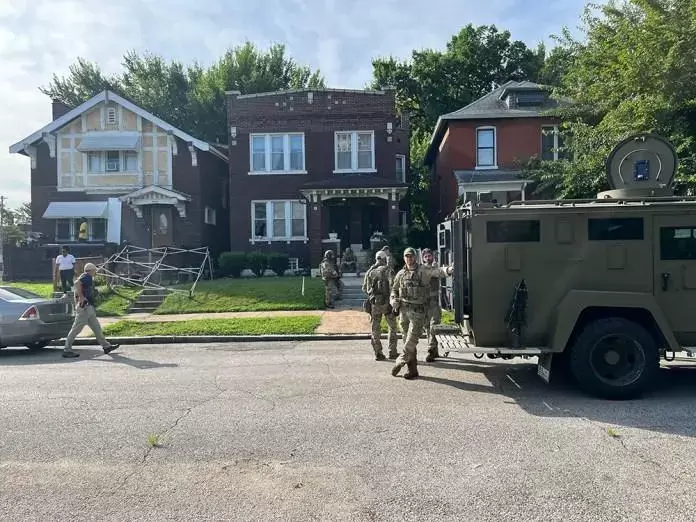


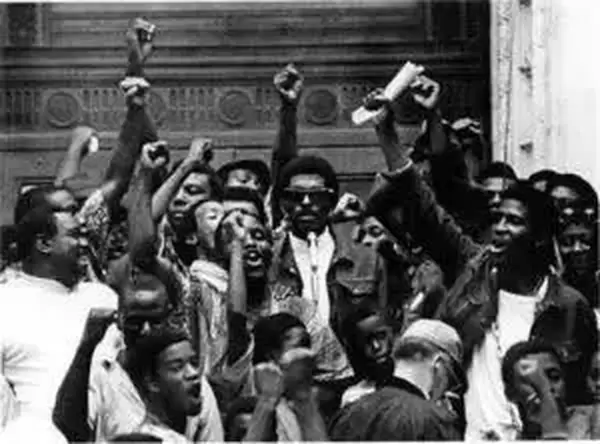




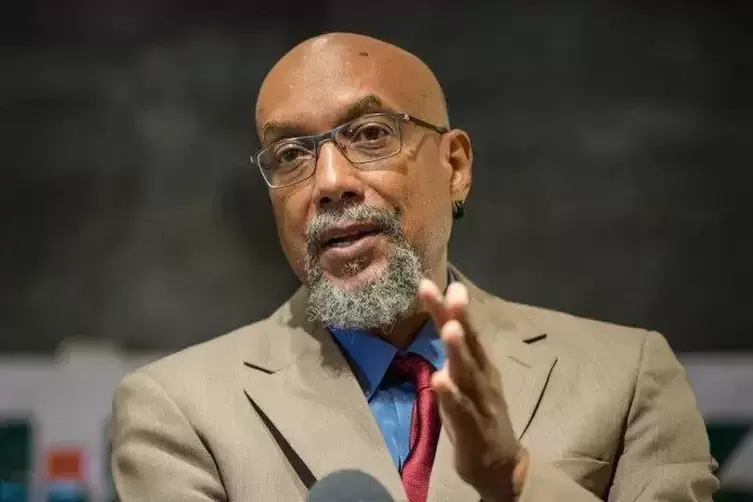
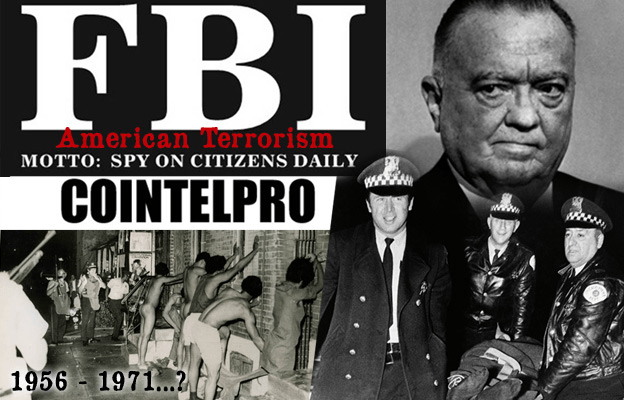

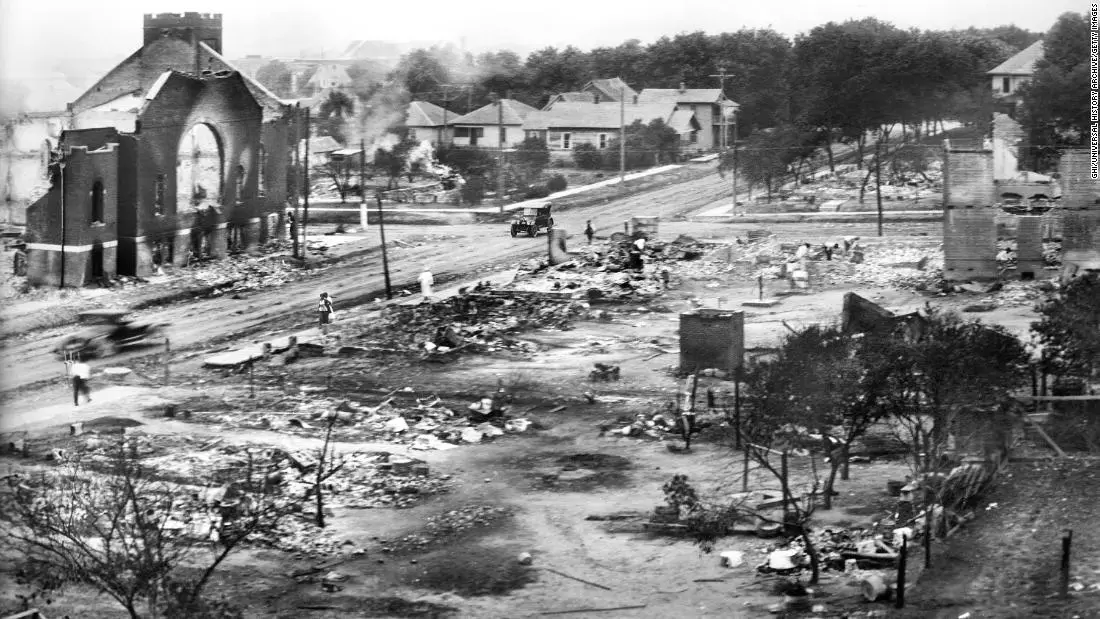
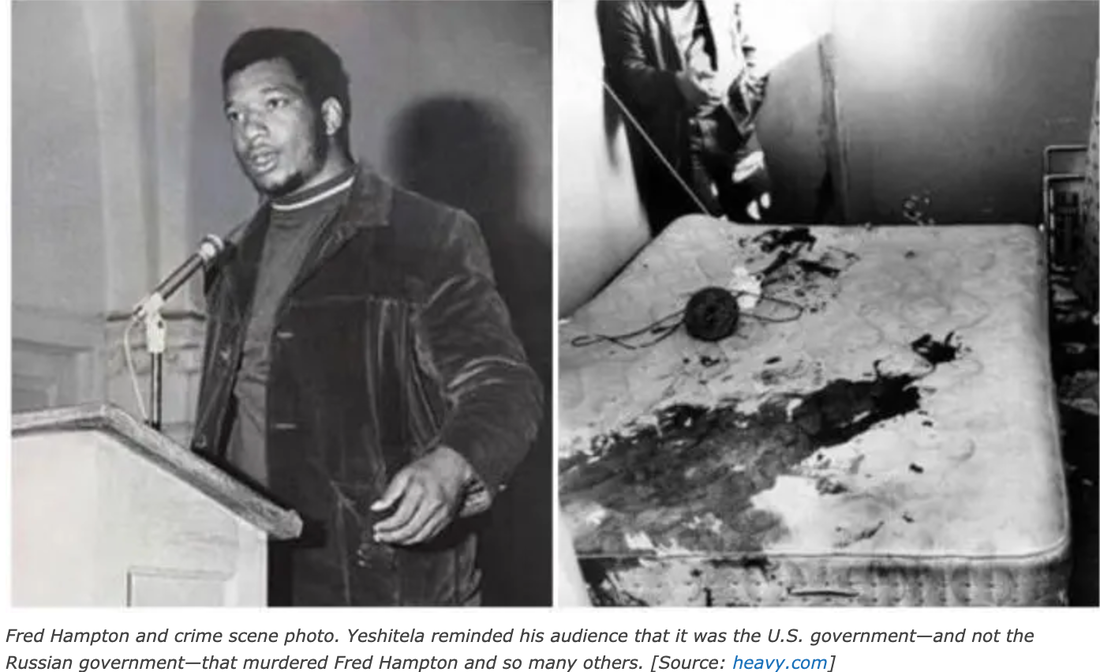


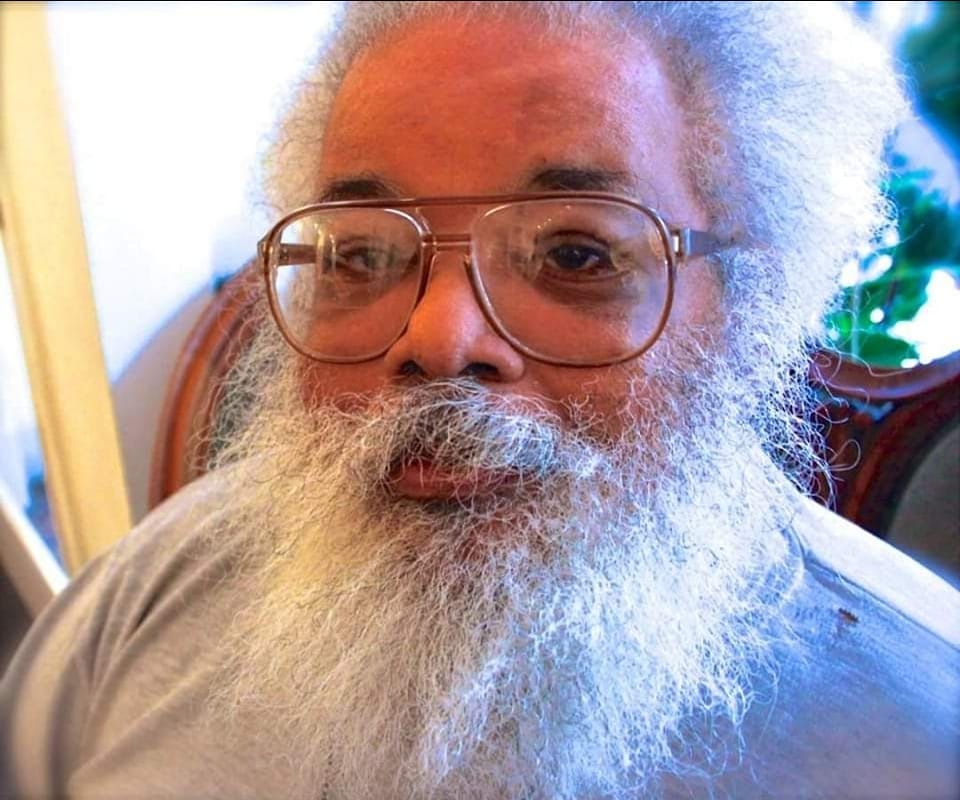
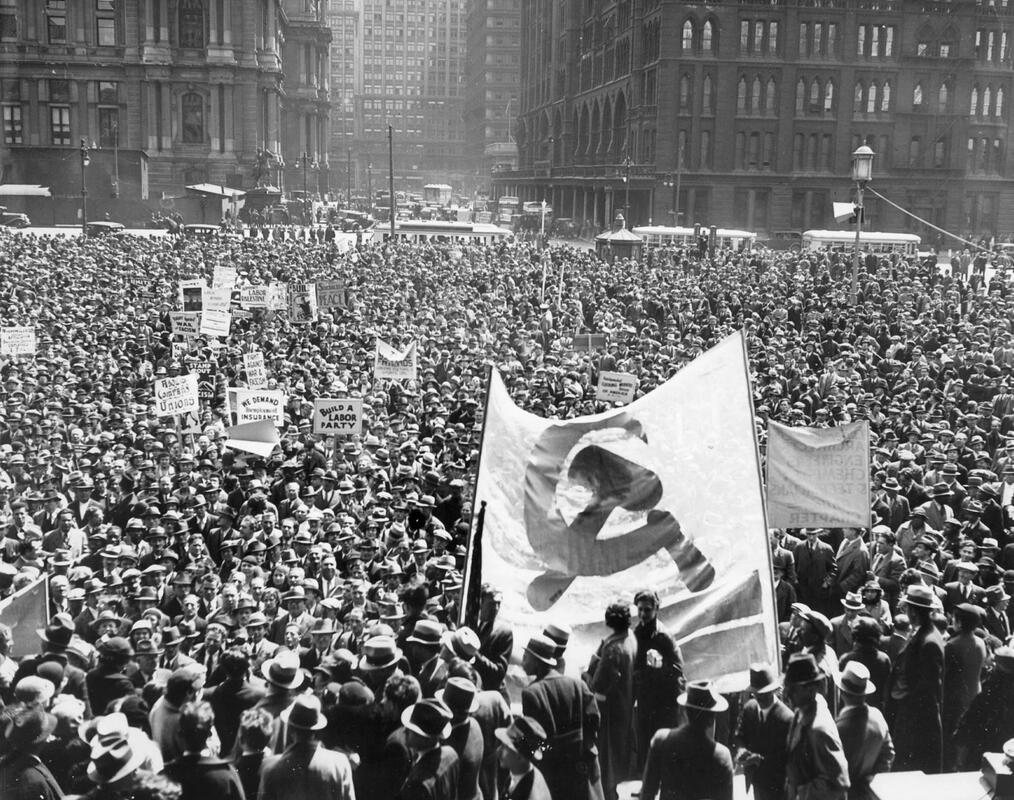
 RSS Feed
RSS Feed